




«Filter the water for tomorrow»
Do you want to decrease OPEX on your water filtration process?
Do you want to increase your capability to filter water?
With its unique porosity, Filtralite® Pure, lightweight expanded clay filter media offers optimum conditions to filter water
This feature, main characteristic of the lightweight expanded clay material, allows for larger volumes of water to be filtered through the same volume as contact area is increased.
Water management facilities can thereby increase their output and decrease drastically the number of backwashes needed.
•Increased water production without extending existing installations
•Save on operating costs
•Reduce the amount of water taken from the environment
•Average ROI 3 years until less than 6 months
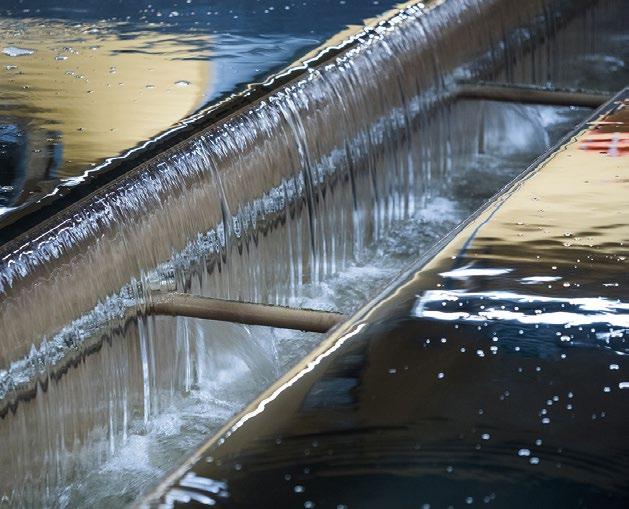
Dear readers,
Water utilities face a moment when maintaining service is no longer enough. They are expected to safeguard water security in a warmer, more urban and demanding world. Pressures to invest, upgrade ageing infrastructure and strengthen institutions meet rising expectations for transparency, efficiency and resilience. This edition shows a sector moving with purpose, aware of each decision’s impact.
Our cover interview with Natalie Foeng, of Yarra Valley Water, captures this shift. Her approach brings climate planning, data, culture and circularity into a framework where resilience is not an add-on but central to the business model. Yarra shows that a utility can lead, not just adapt, when choices are grounded in knowledge, trust and longterm vision.
Other voices reinforce that message. Jennifer Sara, former World Bank Global Director, notes that investment flows when utilities, regulators and financial systems are strong. Nuno Medeiros, from EPAL, shows how resilience is built through controlling non-revenue water, risk-based asset management and commitment to water quality. Khaldon Khashman, at ACWUA, highlights regional progress through cooperation and professionalisation, while Mallak Bani

Mustafa, from Southern Water, shows that transformation is cultural as well as technical. Together, they underline a central truth: resilience is a discipline.
The features show the sector’s direction: Badger Meter brings real-time clarity to water quality; Aqualia and ACCIONA reveal the demands of safer, more efficient systems; Ingeteam, WEG and Samotics show why energy efficiency is now strategic; and StormHarvester, Hexagon, Jacobs and ALCEA demonstrate how analytics, automation and digital twins anticipate failures and guide investment. SWPC offers a clear example of public–private collaboration mobilising capital at scale.
This edition also includes insight from Carlos Cosín, CEO of Almar Water Solutions, who argues that investing in water requires vision, courage, stability and shared responsibility. His
PUBLISHER iAgua Conocimiento, S.L.
López de Hoyos, 190 Entlo. B 28002 Madrid info@iagua.es
Alejandro Maceira Rozados David Escobar Gutiérrez
perspective aligns with contributions from Austin Alexander, Bruno Pigott and Apurv Johari, who stress that resilience emerges from data, governance and leadership.
Together, these pages reveal a sector learning to see resilience not as an obligation but as a commitment to people. The future of water will depend on our capacity to make steady, purposeful decisions — to run each system efficiently and with intent. The legacy of Catarina de Albuquerque, who helped embed the human rights to water and sanitation into global norms, reminds us why this work matters: each improvement, investment and reform brings millions closer to security, dignity and opportunity.
28 - NOV 2025

FEATURE FEATURE ADVANCING TREATMENT INSIGHTS
Pg. 14 A look at how Badger Meter’s digital tools enhance water quality oversight, optimise filtration and support distribution networks.
BUILDING MELBOURNE’S FUTURE
Pg. 18 Natalie Foeng of Yarra Valley Water discusses resilient service planning, clean energy gains and smarter networks for communities.
PARTNERING FOR GLOBAL WATER
Pg. 56 ACCIONA shows how PPP models blend public vision and private expertise to build utilities and drive sustainable water services.
FINANCING WATER RESILIENCE
Pg. 46 At a pivotal moment for water, Jennifer Sara shares World Bank insights on resilient utilities, investment needs and water’s climate role.





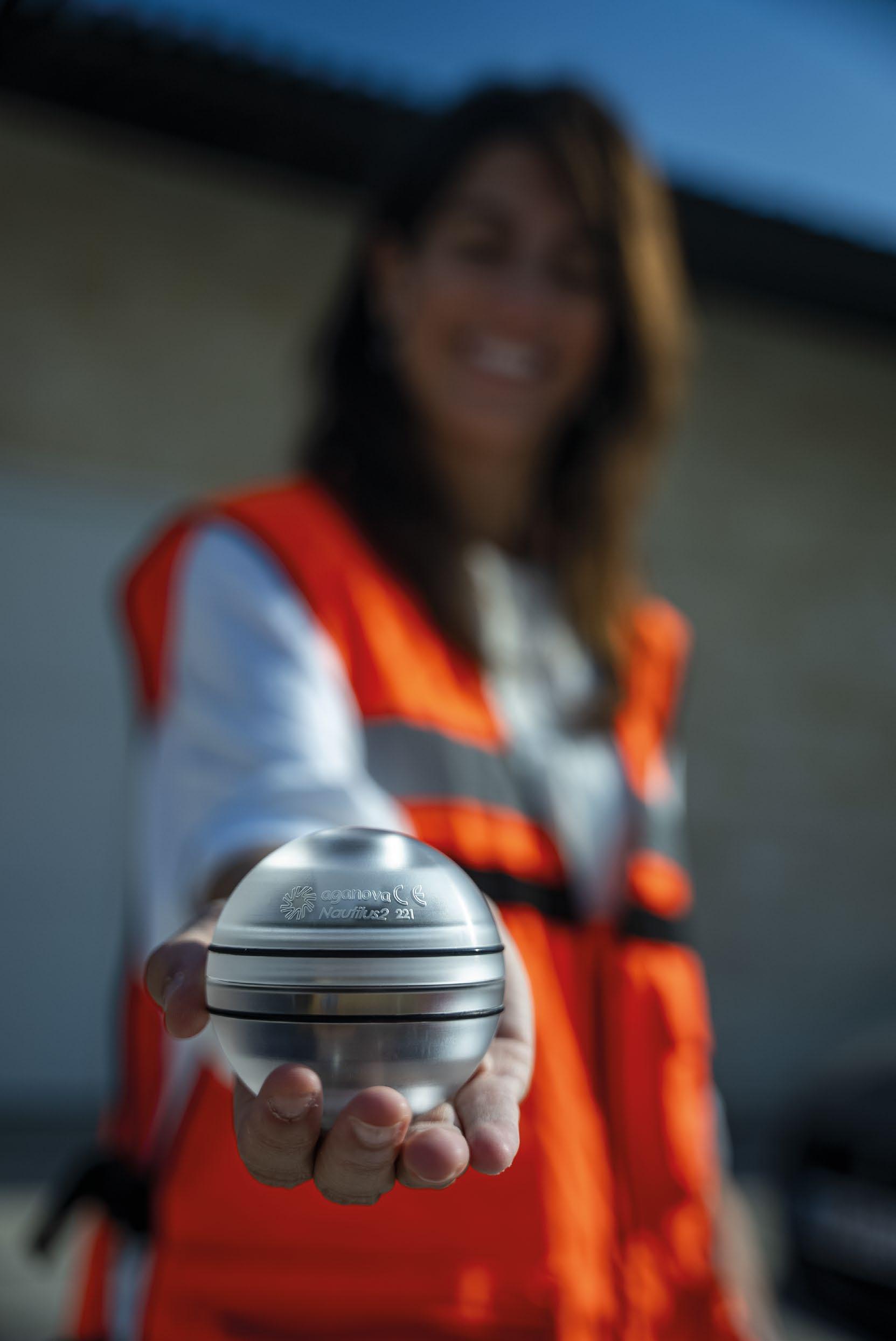

FEATURE FEATURE
INTERVIEW INSIDE EPAL’S INNOVATION
FEATURE EXPANDING WATER HORIZONS
Pg. 76 Across Australia and Asia-Pacific, Almar Water Solutions blends global expertise with local insight to strengthen water services.
PATH
Pg. 60 Nuno Medeiros explains how EPAL advances digital tools, asset management and climate resilience while boosting efficiency across Lisbon.
SAUDI ARABIA’S WATER TRANSITION
Pg. 84 Through an expanding PPP portfolio, SWPC is advancing sustainability, developing local talent and strengthening national water security.
PVC FOR RELIABLE WATER FLOWS
Pg. 66 With OPVC systems, Molecor helps safeguard water quality, cut losses and modernise irrigation networks through smart design.
Accelerate digital transformation through Xylem Vue, the leading integrated software and analytics platform.

Water loss reduction
Asset reliability
Energy efficiency
Operational resilience
Affordability
Find out more
INTERVIEW
ARAB UTILITIES IN FOCUS
Pg. 28 Khaldon Khashman of ACWUA discusses regional capacity building, digital tools and collaboration shaping the future of Arab water utilities.
FEATURE
DRIVES FOR SMARTER WATER USE
Pg. 102 WEG explores how variable frequency drives cut energy use, enhances system stability and modernises pumping across global water facilities.
FEATURE
AI SHAPES WATER ENGINEERING
Pg. 32 Insights from Bentley Systems’ event show how AI and open data help streamline modelling, raise efficiency and guide decisions in water.
FEATURE
NEXT-GEN WASTEWATER PUMPING
Pg. 42 With high-head submersible pumps, Ingeteam supports the Terminal Pumping Station in Qatar, improving reliability and efficiency.
INNOVATION WITH PURPOSE
Pg. 80 Blending creativity with practical testing, Mallak Bani Mustafa helps Southern Water turn bold ideas into smarter, people-focused innovation. INTERVIEW
FEATURE
FINANCING RESILIENT FUTURES
Pg. 92 ICEX examines how multilateral tools, from risk transfer to resilience programs, help countries prepare for climate-driven disasters.
FEATURE
DIGITAL MODELS
TRANSFORM WATER
Pg. 24 Across major projects, Aqualia is applying BIM and reality capture to improve coordination and enhance lifecycle management.
FEATURE
VISIBILITY FOR HIDDEN ASSETS
Pg. 128 SAM4 gives utilities realtime insight into pump health and efficiency, preventing failures and reducing energy waste.
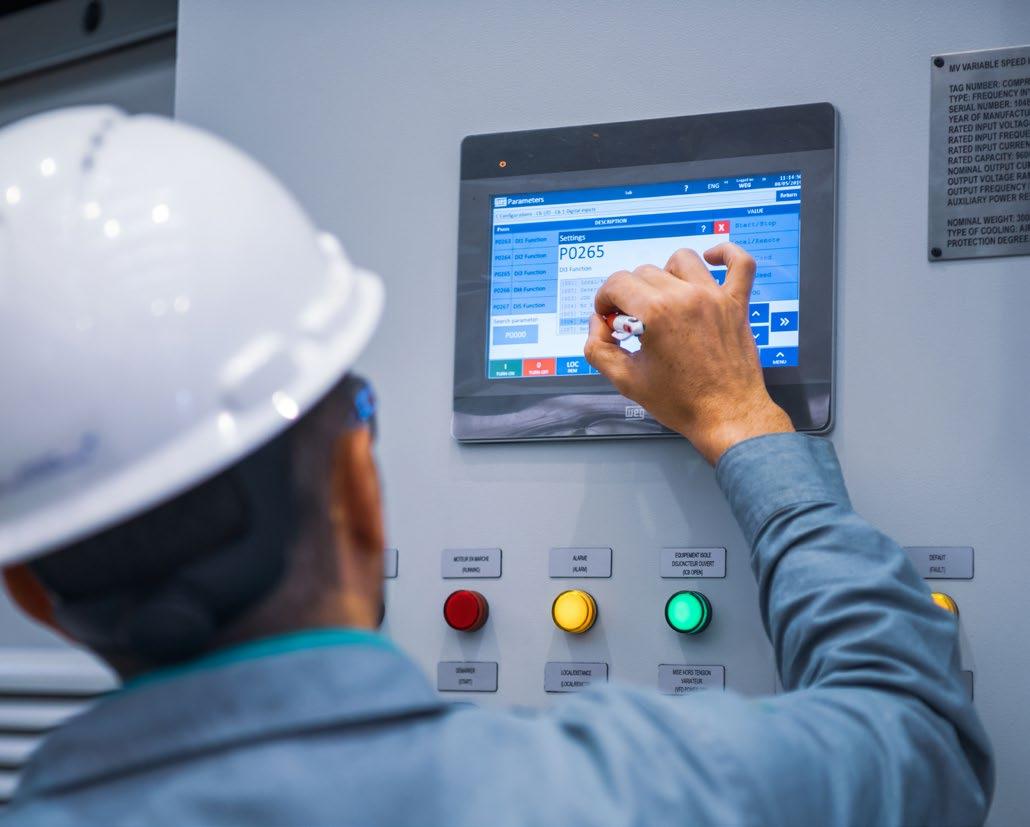
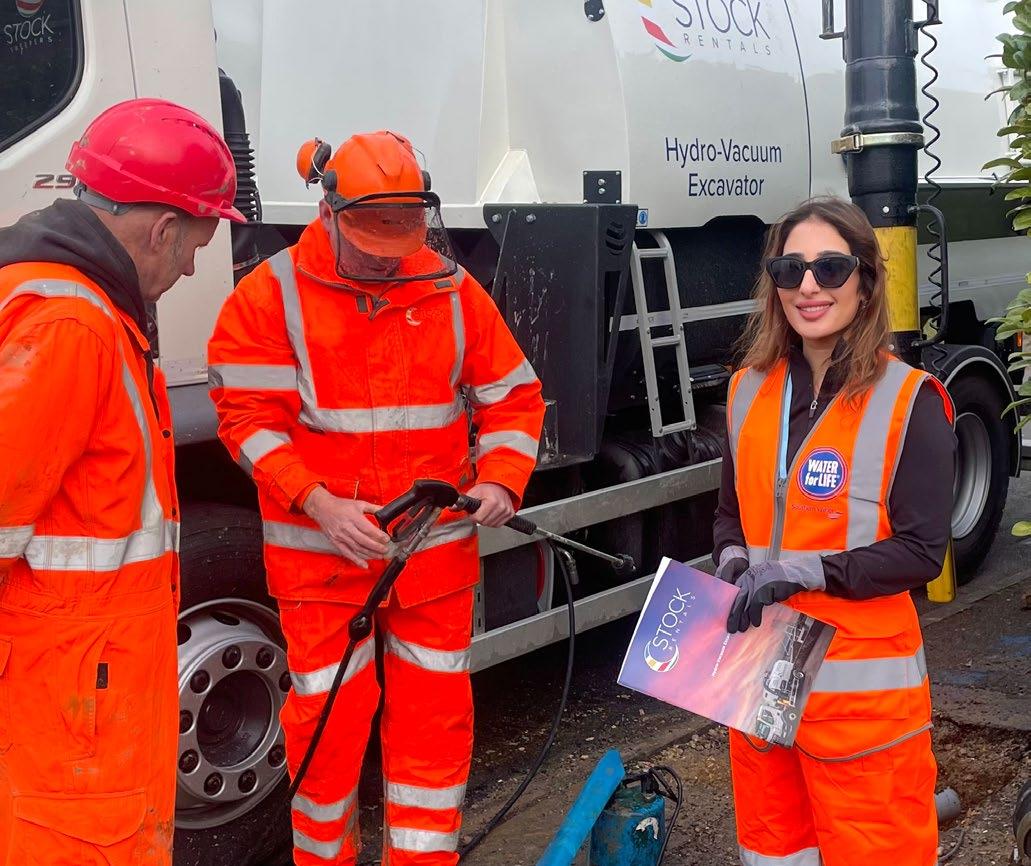

FEATURE
Pg. 122 Hexagon helps utilities unify data, streamline alarms and improve records to cut losses, manage ageing assets and meet new rules.
BUILDING STRONGER UTILITIES
Pg. 38 Carlos Cosín of Almar Water Solutions urges fair tariffs and sound governance to support resilient, wellfunded water utilities. OPINION
FEATURE DIGITAL FOUNDATIONS FOR WATER
AI FOR SHARPER PUMP ALERTS
Pg. 116 StormHarvester’s AI helps Southern Water reduce alarm noise, identify pump issues early and turn telemetry into clear alerts.
FEATURE
CONNECTED SECURITY FOR WATER
Pg. 108 Through integrated security solutions, ALCEA helps utilities strengthen safety, streamline compliance and protect critical water sites.
INTERVIEW
DIGITAL METERING FOR EUROPE
Pg. 98 Markus Weidling and Sofia Lettenbichler outline WE Data Europe’s study showing how smart metering boosts water efficiency and fairness.
FEATURE
ENERGY TRANSFORMATION IN ODENSE
Pg. 112 In partnership with VCS, Jacobs helped make Ejby Mølle an energy-positive plant through modelling, innovation and smarter processes.

In this section we have compiled the most important appointments that have taken place recently, and entail taking up a position or role within influential entities (public, private or mixed) in the water sector.

The Metropolitan Water District of Southern California (Metropolitan), the largest drinking water provider in the United States, has named Shivaji Deshmukh as its next general manager.
Deshmukh, a veteran water leader with more than 25 years of experience in water management and recycling, will succeed retiring general manager Deven Upadhyay to become Metropolitan’s 16th general manager in its nearly century-long history.
“Shivaji Deshmukh has worked for more than 25 years to ensure Southern California communities have reliable water,” said Metropolitan board Chair Adán Ortega, Jr. “He has helped develop large-scale water recycling projects, forged valuable partnerships across agencies, and advanced innovative water management programs that have multiple benefits for our region and state.”
Ortega added that Deshmukh’s immediate focus will be implementing Metropolitan’s new climate adaptation strategy to manage an increasingly volatile water supply environment and addressing workforce and aging infrastructure issues.
Deshmukh currently serves as general manager of the Inland Empire Utilities Agency and previously held leadership roles at West Basin and Orange County Water District, where he helped develop the Groundwater Replenishment System, one of California’s largest recycled water projects.
Deshmukh joined Metropolitan on Nov. 3 as general managerdesignate, working alongside Upadhyay for a smooth transition
“I am thrilled to be joining this indispensable organization, particularly as it sets the course for water reliability for the next century,” Deshmukh said.

Veolia has appointed Nadège Petit as Chief Executive Officer of its North America Zone. Petit will also join the company’s executive committee, reinforcing Veolia’s leadership team as it seeks to expand its presence in one of its most dynamic markets.
The appointment aligns with Veolia’s GreenUp strategic program, which aims to strengthen the company’s position in the United States, a key growth region for the group. Petit, who has more than two decades of experience in international business development and innovation, will oversee operations across Veolia’s North American businesses, including water, waste, and energy services.
“I look forward to working with our North American teams to drive innovation, growth, operational excellence, and expand our services — delivering impact for the environment, our clients, and our shareholders,” Petit said.
Petit joins Veolia after more than 20 years at Schneider Electric, where she held several senior leadership roles in Europe, Hong Kong, and the United States. Most recently, she served as CIO Officer and was a member of Schneider Electric’s Global Executive Committee. In that role, she was responsible for advancing new technologies, business models, and partnerships through open innovation and investments.
Previously, she was Executive VP of the Power Products division, managing the global low-voltage power business. Petit also serves on the Supervisory Board of E.ON SE and is a member of its Innovation and Sustainability Committee.

NSW GOVERNMENT APPOINTS DARREN CLEARY AS NEW SYDNEY WATER CEO
The appointment reinforces the Minns Government’s commitment to public ownership of Sydney Water and a sustainable water future

KEITH HASLETT APPOINTED NEW CEO OF SOUTH WEST WATER AND PENNON GROUP
Keith Haslett’s leadership is expected to play a key role in rebuilding customer trust and strengthening environmental performance
The New South Wales Government has announced the appointment of Darren Cleary as the new Chief Executive Officer of Sydney Water, marking the beginning of a new chapter in strategic planning and service delivery for the state’s largest water utility.
Mr Cleary brings more than two decades of experience in the water sector, including over ten years in executive leadership. As Chief Executive of Hunter Water since 2020, he has led major infrastructure and water security projects, including the Belmont Desalination Plant, the Lower Hunter Water Security Plan, and a $1 billion capital program.
Announcing the appointment, Minister for Water Rose Jackson said she was confident Mr Cleary’s leadership would strengthen Sydney Water’s long-term sustainability. “I’m thrilled to announce the appointment of Darren Cleary and look forward to watching Sydney Water thrive under his leadership,” she said. “As a trusted public face with a wealth of experience, the future of Sydney Water as a reliable, sustainable, customer-focused organisation is in good hands with Darren.”
Sydney Water Board Chair, the Hon. Niall Blair, said the board was impressed by the calibre of candidates but that Mr Cleary stood out. “After a comprehensive recruitment process, the board was excited to recommend Darren Cleary to Minister Jackson for appointment as CEO,” he said. “He joins us as we embark on our extensive capital infrastructure program and continue to deliver on the needs of our 5.4 million customers.”
South West Water and its parent company, Pennon Group, have appointed Keith Haslett as their next chief executive officer, following the retirement of Susan Davy, who announced her decision to step down in July.
Haslett, currently CEO of Affinity Water, will join Pennon once he completes his notice period, expected in 2026. He has led Affinity Water since 2023 and brings more than 25 years of experience in the UK water industry, including senior executive roles at Northumbrian Water Group and United Utilities.
Haslett said it was a “critical time” to join the group, highlighting plans to “further improve customer service levels and enhance our environment through an ambitious investment programme to 2030 and beyond.”
David Sproul, Chair of Pennon Group, said: “Keith is a seasoned leader in the UK water sector, bringing over 25 years of experience across regulated utilities, with a strong track record of driving operational excellence, delivering complex capital programmes, and increasing shareholder value.”
Haslett’s appointment follows a challenging period for South West Water. Earlier this year, the company agreed to a £24 million enforcement package after an Ofwat investigation found failures in the management of its wastewater treatment works and sewer networks. The regulator said the company lacked adequate management systems to ensure it met its legal obligations. Furthermore, South West Water received a poor performance rating from the CCW due to high levels of customer complaints.
Tetra Tech announced two senior leadership appointments as part of its ongoing succession planning and internal talent development efforts. Effective with the start of fiscal year 2026, Roger R. Argus has been promoted to President of Tetra Tech, and Jonathan S. Weiss has been appointed President of the company’s Commercial/International Services Group (CIG).
Roger Argus currently serves as Executive Vice President of Corporate Development and President of the Commercial/ International Services Group. He brings four decades of professional experience, including more than 30 years with Tetra Tech. A chemical engineer by training, Argus has led multidisciplinary environmental, engineering, and management programs for federal, state, municipal, and private clients. He has also directed Tetra Tech’s mergers and acquisitions activities, overseeing the identification, negotiation, and integration of companies to expand the firm’s technical capabilities and client base.
In his new role, Argus will oversee Tetra Tech’s global operations, working with senior leadership and operational teams to maintain the company’s performance and growth trajectory.
Weiss, who has also spent more than thirty years with Tetra Tech, has led operations in both federal and commercial markets and played a key role in developing the company’s diversified energy practice. As President of CIG, Weiss will continue to lead global initiatives focused on the intersection of water and energy in the private sector.
Brown and Caldwell, a full-service environmental engineering and construction services firm creating and delivering water and environmental solutions throughout North America and the Pacific, promoted Wendy Broley, P.E., to Private Sector Business Unit (PSBU) Leader.
Broley, who was previously the company’s Chief Technical Officer (CTO), now oversees the company’s full suite of environmental services and tailored solutions to private sector clients. She reports to Euan Finlay, President and Chief Operations Officer.
“Wendy’s long-standing industry leadership will help us continue to drive growth and innovation for our clients in private sector markets,” Finlay said. “She will lead our private sector business unit teams and clients through an exciting period, as we’re seeing an increased development of data centers that require sustainable water solutions.”
With more than two decades of experience in water and wastewater engineering and operations, Broley joined Brown and Caldwell in 2014 and has held various roles, including the company’s One Water Leader, Consulting Services Leader and Water Reuse Leader, working with clients to evaluate alternative water uses and develop diverse, resilient water portfolios. In 2022, she was promoted to CTO from Director of Technical Practices to further Brown and Caldwell’s technical services and solutions for both the municipal and private sectors. As CTO, her leadership and support included the recent acquisition of Separation Processes.

ROGER R. ARGUS PROMOTED TO PRESIDENT OF TETRA TECH
Together with Tetra Tech’s executive team, Argus will advance strategic objectives and industry-leading performance

BROWN AND CALDWELL PROMOTES WENDY BROLEY TO PRIVATE SECTOR BUSINESS UNIT LEADER
In her new role, Wendy Broley replaces Carey Allen, who previously announced her retirement as Private Sector Business Unit Leader
Drinking water treatment facilities have the critical job of producing a safe supply of high-quality drinking water. From intake to distribution, water quality solutions from BlueEdge by Badger Meter offer global water utilities efficiency and control.
Badger Meter instrumentation can be used at all operational and compliance steps within a drinking water treatment facility. BlueEdge, the Badger Meter portfolio of products, software and services, helps customers orchestrate end-to-end solutions to address water challenges and:
Manage increasing compliance levels
Accurately and reliably measure flow
Reduce backwash frequency to minimise water waste and extend asset life
Control the disinfection process
Provide real-time water quality data
Water quality solutions from Badger Meter include the latest digital technology to measure more than 20 parameters in potable water. Single and multi-parameter, reagent-free sensors and monitoring stations provide data to guide treatment response.
Source water monitoring for process control
Source water contaminants vary by region. Some common sources include industry and agriculture runoff, fertilisers or soil. The monitoring of incoming
Water quality solutions from Badger Meter include the latest digital technology to measure more than 20 parameters in potable water
water to support appropriate treatment protocols is followed at the entry into a drinking water treatment facility, and this is where process control and optimisation begin. Intake protection sets the stage for efficiency down the line.
Continuous monitoring of source water quality helps compile data on the typical water conditions entering the treatment facility. Accurate data helps operators maintain control of chemical dosing in the treatment process, ultimately helping meet regulations and maintain compliance. Furthermore, continuous monitoring can be used to set up contamination or event detection alarms. Solutions that use spectral or pattern alarms will alert for any changes in standard parameters, empowering early reaction to events that may disrupt the treatment process.
Turbidity, organics (such as Total Organic Carbon [TOC]; Dissolved Organic Carbon [DOC]), pH, ammonia and conductivity are the main parameters utilities monitor for at this stage, but there can be other requirements on additional parameters, depending on the intake water quality. Some utilities monitor UV254 — the measurement of organic matter present in raw water.
For Italian water utility IRETI, nitrate contamination was a recurring issue for drinking water operations. The fertiliser

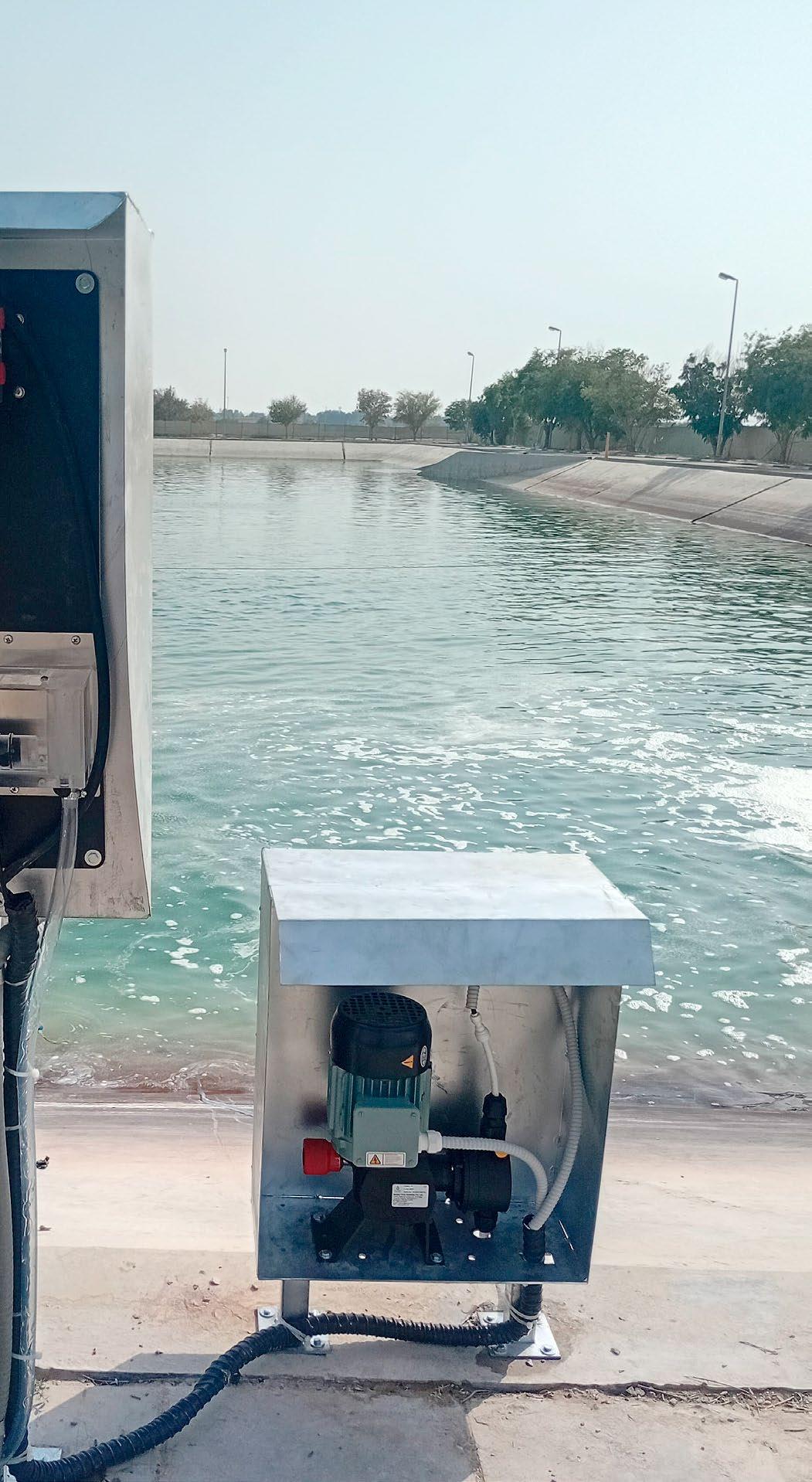
used in the largely agricultural area caused nitrate levels in the groundwater to exceed the 50 mg/L limit set by Council Directive 91/676/EEC, which regulates pollution from agricultural sources. To meet this regulation, IRETI installed a longterm system that would track nitrate, chlorine dioxide and temperature levels.
Several products from the BlueEdge suite of solutions, including the spectro::lyser V3 probe for nitrate measurement and the chlodi::lyser sensor for monitoring chlorine dioxide, connect to a con::cube V3 IoT control unit, which can monitor up to 64 parameters for comprehensive online water analysis.
The monitoring system provides continuous, 24-hour oversight of water quality, making it easy for operators to react when nitrate levels rise. High-frequency measurements deliver precise, real-time insights, while automatic brush cleaning minimises maintenance and reduces operating costs over the life of the units. IRETI used this accurate data to act quickly to prevent contamination of the water supply and keep drinking water safe for the communities it serves.
Minimise water waste by optimising filter performance
The goal of filtration in water treatment is to remove particles and larger solids from source water. Over time, solids buildup on filter media can decrease filtration efficiency. To ensure that the filtration process is working effectively, backwash monitoring allows operators to gauge and address filter performance for optimal process efficiency.
Continuous monitoring of source water quality helps compile data on the typical water conditions entering the treatment facility
Flow rates, timing and environmental changes can affect filtration media performance. When the flow rate is too high, there’s a higher likelihood of washing out media. When the wash duration is longer than necessary, valuable treated water is wasted both during the wash and during the filter ripening time post-wash.
The FilterSmart Backwash Monitor measures media expansion and turbidity in real time. These two trends together present a clear picture of the backwash process, simplifying filter optimisation with 24/7 monitoring that takes the place of countless manual hours of data collection.
Installed at the top of a gravity filter just below the top of the wash trough, the FilterSmart’s in-filter turbidity measurement provides immediate feedback during a backwash on filter cleanliness. During a backwash, the ultrasonic sensor tracks the level of the media, and the turbidity sensor measures how clean or dirty the wash water is as it flows into the wash trough.
After water has been treated, monitoring and maintaining water quality at points within the distribution network protects public health

The Punta Gorda Water Treatment Plant is a 10 MGD surface drinking water facility. Floc tanks and four Solids Contact Units (SCUs) — which are a form of upflow clarifier — feed two Greenleaf Filters with four cells each. The filters are backwashed every 70 hours regardless of head loss. High backwash flow rate is 5,200 gpm. The total cost of treating 1,000 gallons of drinking water is $1.73.
During a field trial with FilterSmart monitors, it was noted that the loading in the filters was very light, with relatively low turbidity measured during the backwash. Since the backwash schedule was based on time and not head loss, operators decided to incrementally increase the Filter Run Times (FRTs) until the head loss value was reached. FRTs were increased to 120 hours, an adjustment that resulted in a 42% decrease in annual

backwash water consumption and cost savings of approximately $65,000.
Following the trial, backwash data also indicated that the high-rate portion of the backwash was longer than necessary and was reduced by four minutes. This initial adjustment resulted in additional savings of approximately 22,100 gallons of wash water per wash, at a value of $21,000 annually.
“We love these instruments,” said Brian Fuller, Utilities Director, Punta Gorda Water Treatment Plant. “They’ve given us data that we can use to make decisions that have saved us a lot of money.”
Real-time disinfection monitoring enhances compliance and reduces operational costs
Disinfection is an essential component of drinking water treatment. The course of treatment chosen is based on the qual-
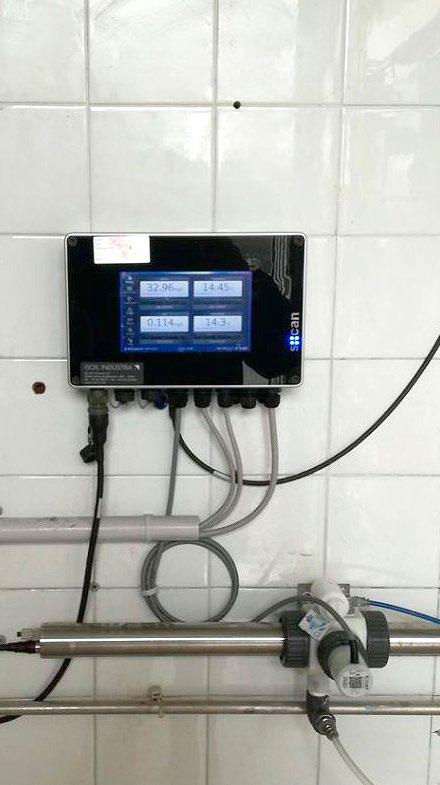
ity of the water source, coupled with regulatory concerns, and generally consists of chemical disinfection (using chlorine, chlorine dioxide or chloramine), and/or ultraviolet radiation. A disinfection process with efficient, reliable water quality measurements delivers more than just trending data; it provides a treatment facility with the ability to control its disinfection process, thus creating consumer trust and confidence.
After water has been treated, monitoring and maintaining water quality at points within the distribution network protects public health.
EMIVASA, responsible for providing safe water to Valencia, has installed around 50 in-network water quality stations from Badger Meter that allow operators to meas-
ure water quality accurately, including in pressurised pipes, throughout the distribution network. Parameters monitored in Valencia include TOC, colour, turbidity, UV254, temperature, pressure, free chlorine, conductivity and pH. This monitoring also supports the validation of hydraulic models within the distribution system, and it allows operators to measure if treatment is having the required response, as part of EMIVASA’s disinfection control programme. The data gathered provides insights into water quality stability across various network points, regardless of operational changes upstream.
Maintaining consistent water quality is even more challenging in areas with ageing infrastructure, harsh climates, high salinity and geographically dispersed systems. In the Middle East, evolving operating models where private operators manage specific zones, desalination plants, or transmission networks make effective monitoring difficult to navigate. It creates multiple handover points where water quality must be carefully monitored to ensure compliance and the protection of consumers.
A key initiative in this part of the world has seen the rollout of District Metering Zones (DMZs) to reduce non-revenue water (NRW). Increasingly, these DMZs are paired with real-time quality monitoring to give utilities complete control — ensuring safe drinking water, safeguarding public health and supporting national security by detecting any contamination risks before they spread across wider networks.
Traditionally, utilities rely on manual sampling, laboratory testing and reporting — a process that can take up to two days before results are available. This lag leaves networks exposed to risks and increases operating costs. By providing continuous, distributed, real-time visibility across networks, utilities can now
detect anomalies instantly, take corrective action within minutes and see that water quality remains consistent across all DMZs and interchange points.
Utilities that have deployed real-time monitoring solutions from Badger Meter report significant operational improvements. For example, laboratory teams have reduced operating expenses by at least 25%, as fewer manual samples are required, meaning operations and maintenance decisions can be based on live data.
Operators can now respond to contamination risks within minutes instead of days. For households, this means greater confidence in water safety; for utilities, it translates into improved efficiency, optimised chemical dosing and fewer unnecessary flushing activities.
“Utilities gain clarity, enabling rapid response to water quality issues, optimisation of network performance, and enhanced confidence among consumers,” said Hatem Tantawy, Badger Meter General Manager for the Middle East and South Asia.
Drinking water safety is of paramount importance worldwide. When utility customers have access to real-time water quality, flow and pressure data, they can more easily protect treatment assets and provide opportunities for process optimisation. With more than a century of experience serving utility customers worldwide, Badger Meter supports utilities and municipalities so that they can confidently deliver safe drinking water to their consumers.
Visit BadgerMeter.com/dwt-25 to learn more.
Utilities gain clarity, enabling rapid response to water quality issues,
"I see our role as a climate leader, supporting our communities and the wider water sector in building a more sustainable and resilient future"
Yarra Valley Water Managing Director Natalie Foeng outlines how the utility is tackling growth and climate challenges head-on — driving innovation in renewable energy, recycled water and digital technology to deliver sustainable, affordable services for Melbourne’s expanding communities.
As one of Australia’s most progressive water utilities, Yarra Valley Water is known for its strong focus on sustainability, innovation, and community outcomes. Under the leadership of Managing Director Natalie Foeng, the organisation is shaping a future that balances growth, environmental responsibility, and customer affordability. Serving more than two million people and 62,000 businesses across Melbourne’s rapidly expanding northern and eastern suburbs, Yarra Valley Water faces rising challenges from population growth, climate change, and shifting community expectations.
In this interview, Foeng shares her strategic vision for the decade ahead — from investing in resilient, low-emission infrastructure and circular economy initiatives to harnessing digital technologies — all to create a brighter, more sustainable future for customers, communities, and the natural environment.
Yarra Valley Water is often seen as one of Australia’s most progressive utilities. As Managing Director, what is your strategic vision for the next decade, particularly in balancing growth, sustainability, and customer affordability?
My vision is that we support the health and well-being of our customers and create a brighter future for communities and the natural environment.
I’m proud of the work we do to care for the environment and provide essential water and sewerage services to more than 2 million Melburnians and 62,000 businesses. I also know the next decade will bring many challenges for our region, though. Population growth, affordability, shifting community expectations and climate change will all shape our business in the years ahead. To continue achieving our vision, we need to keep pace with change and evolve. This means we are building a greater connection with Country, building resilience in response to climate change and working in partnership with community, partners and stakeholders, with the voice of customers from today and tomorrow in mind.
Yarra Valley Water is expanding water and wastewater networks to meet population growth and modernise services. How are you balancing renewal, growth, and resilience to deliver sustainable infrastructure outcomes? Providing sustainable, reliable infrastructure while accommodating growth requires careful planning and investment. Through our 2023-28 Price Submission, we are investing over $2.6 billion in our network. This will help us both expand our infrastructure and upgrade our existing network.
The essential services we deliver are crucial to facilitating growth, and so we look to be as proactive as possible in supporting new developments. Our Development Planning Team works with government, private and community partners to identify growth areas and plan the water and sewerage infrastructure they’ll
"We work in partnership with the community, partners and stakeholders, with the voice of customers from today and tomorrow in mind"

"Some projects like our M4 Water Main Renewal are replacing pipes over a century old, crucial to maintain reliable services into the future"
need. This helps us keep pace with the rapid growth in our area and maximises our investment in new infrastructure.
We also have extensive monitoring and renewal programs to help maintain a network of 21,500 kilometres of water, recycled water and sewer mains. Some projects, like our M4 Water Main Renewal, are replacing pipes that are over a century old. These projects are considerable undertakings, but are crucial to maintain reliable services into the future.
We’ve also begun to ensure we can maintain reliable services as the impacts of climate change intensify. We have developed a Climate Resilience Risk Assessment Framework that uses data to assess the risk of bushfires, floods, droughts and rising temperatures impacting our assets under predicted climate scenarios. This helps guide the location and design of future assets, as well as upgrades to existing assets, ensuring they can withstand hotter, drier and more extreme conditions.
Reducing water loss and optimising system performance are now key measures of efficiency for utilities. What approaches is Yarra Valley Water taking — operationally or through technology — to get more from its existing network assets?
We’re working to prevent leaks and bursts before they happen. We have several initiatives that identify potential issues, so we can repair or replace infrastructure before it fails, saving water and money.
For several years, we’ve worked with Aqua Analytics to proactively detect leaks across our network through a range of methods. This includes using AI data loggers to better understand asset performance, and acoustic tools to detect watermain leaks. By integrating Aqua Analytics' technology into our infrastructure, we're better equipped to identify and resolve issues before they result in significant water loss.
In addition to the work we’re doing to prevent asset failures, we’re also striving to make sure that when there are leaks or bursts, we are able to fix them as quickly as possible, and minimise the amount of water lost. Our District Metered Area program is a major asset in helping us identify leaks. It now covers over half of our network, using remote monitoring devices underground to provide real-time data on our network performance, helping us detect and respond to any anomalies.
We also look to empower the community to notify us when they see a leak or burst. We have partnered with Snap, Send, Solve to provide a quick and easy way to report any faults that need fixing. This partnership has encouraged community members to report more faults, helping us solve issues faster.
Yarra Valley Water is on track to achieve net-zero Scope 1 and 2 emissions for the 2025–26 financial year, four years ahead of government requirements. What are the main factors enabling this early achievement? We have always looked to set ambitious targets when it comes to reducing emissions, and I’m proud that we’re meeting them. For several years, we’ve been rethinking the way we work, cutting emissions in everything from how we treat wastewater to how we get around.
We power all our operations with 100% renewable electricity. This comes from solar panels at our treatment plants and Mitcham head office car park, energy generated by converting food waste to

power our Wollert treatment plant, and renewable electricity purchased from Victorian generators.
We are now only purchasing electric passenger vehicles, with work underway to transition our operational fleet. To support this transition, we have awarded a contract to more than double the number of electric vehicle chargers at our Mitcham head office. When complete, the site will have more than 60 charging points.
We are also investing in high-integrity Victorian-based carbon sequestration and reduction projects to offset our residual emissions that are otherwise difficult to eliminate.
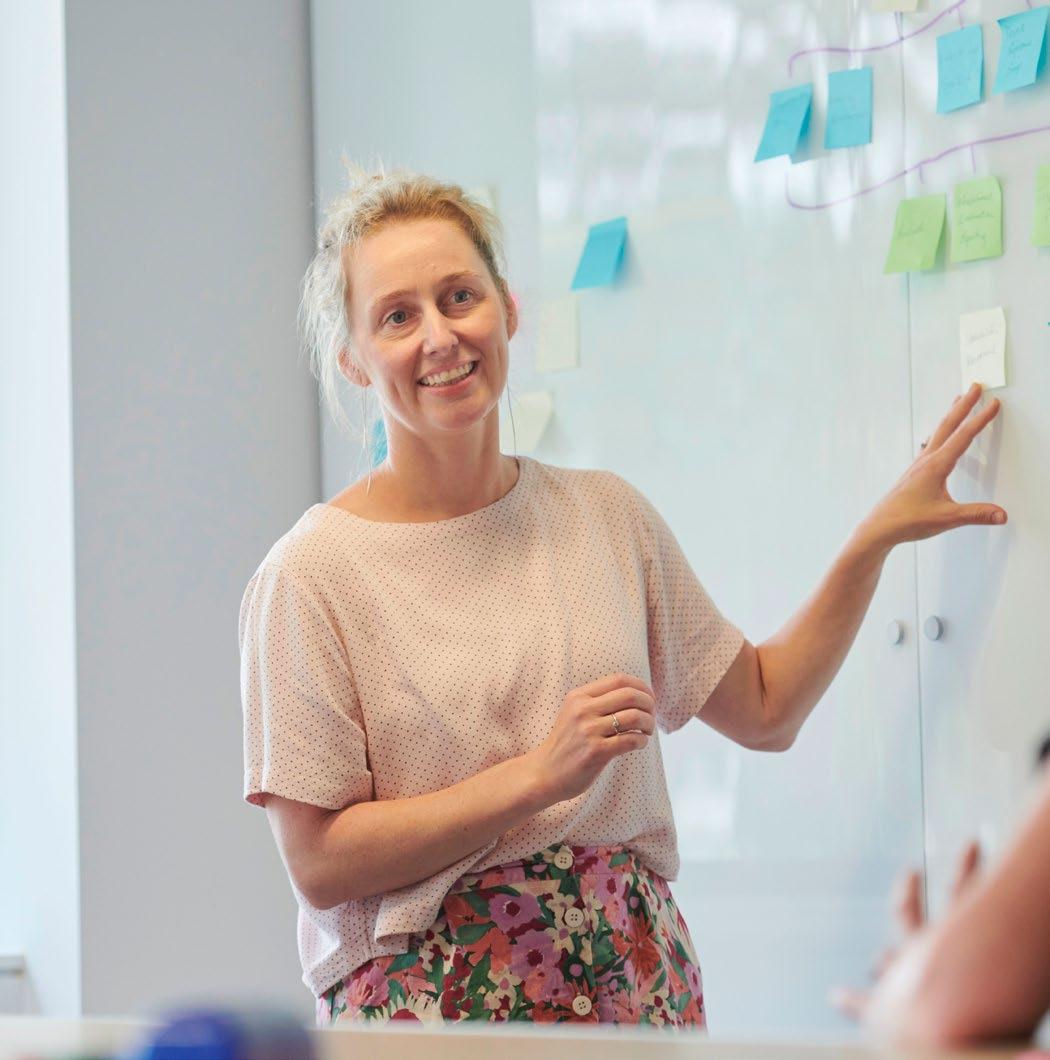
The utility also aims to reduce Scope 3 emissions by 67 per cent by 2030. How are you engaging suppliers and delivery partners to support that broader target?
Reducing Scope 3 emissions relies on partnerships and collaboration, and it’s encouraging that so many of our contractors and suppliers share this commitment.
We work with contractors and suppliers from an early stage to help them find ways to reduce emissions in their work. This can include using low-carbon cement or recycled aggregate in construction projects. In the past financial year, we’ve used a total of 18,000 tonnes of
"The Climate Resilience Risk Assessment Framework helps guide the location and design of future assets, as well as upgrades to existing assets"
recycled or lower-impact material in the construction of our assets, more than doubling our target of 7,000 tonnes.
We also work with other partners on carbon offset projects. A great example of this is the Upper Yarra Sewage Treatment Plant habitat restoration. For this project, we’ve partnered with Melbourne Water, Zoos Victoria, Greening Australia, Jacobs and Spiire to transform an unused piece of buffer land into a habitat for the critically endangered Helmeted Honeyeater and lowland Leadbeater’s Possum. The 35-hectare habitat will feature a mixture of woodland and wetland environments, utilising recycled water from the treatment plant.
Energy efficiency and renewable sourcing are central to the net-zero goals. How is Yarra Valley Water reshaping its energy footprint — both in how it consumes power and in how it generates or procures clean energy?
The more clean energy we produce, the more opportunities we have to power our operations sustainably. We use 100 per cent renewable electricity, but our demand for renewable electricity is expanding as we grow as an organisation and as we look for more ways to move away from diesel and petrol-powered operations.
We’re in the final stages of completing our second food waste to energy facility in Lilydale, which will be able to produce over 39,000 kWh of renewable electricity per day. We are also installing a new solar facility at Yuroke that will be more than twice the size of our solar car park in Mitcham.
Generating more renewable energy helps us move away from other energy sources. For example, we’re updating our head office in Mitcham to reduce gas consumption. We have already replaced
"For several years, we’ve worked with Aqua Analytics to proactively detect leaks across our network through a range of methods"
several gas hot water systems with efficient heat pumps and will increase our use of renewable electricity for the office's heating and cooling.
Additionally, we have contingencies at many pump stations and treatment plants to ensure they can operate, even when there’s a power outage. Many of these contingencies have previously relied on fuel-powered generators, but we are exploring battery and biodiesel alternatives to provide cleaner energy.
We’re also looking to become more efficient, even where we already use clean energy. We are currently undertaking a major upgrade at our Brushy Creek Sewage Treatment Plant. The plant is the biggest electricity user in our network, but through upgrading the blowers at the plant, we will reduce the energy usage of the plant by about 20 per cent, which is a considerable saving.
Recycled water is playing a growing role in Melbourne’s water future. How are you expanding its use and ensuring it becomes a mainstream part of the city’s supply?
Recycled water is key to securing Melbourne’s water future, providing a reliable source of water that doesn’t rely on rainfall. We’re expanding our recycled water infrastructure so that we can treat and reuse more wastewater and connect more households and businesses to recycled water mains.
We recently began work on the Brushy Creek Recycled Water Project, which will provide recycled water to more than 5000 homes and businesses in parts of Lilydale and Chirnside
"Our operations use 100% renewable electricity, from solar panels, from converting food waste to power, and purchased renewable electricity"
"The District Metered Area program, which now covers over half of our network, is a major asset in helping us identify leaks"
Park. We are also about to begin work to provide recycled water infrastructure to more than 7000 new and existing households in recently developed parts of Donnybrook and Kalkallo. Supplying new developments like this with recycled water helps us protect precious drinking water supplies while also supporting housing growth.
We’re also exploring ways to ensure water security into the future. This includes working with the sector to consider the role of desalinated water, indirect purified recycled water and looking at areas where stormwater harvesting could boost supplies.
Yarra Valley Water’s Foundational Technology Program is reshaping how the business uses data. How is this investment changing the way you plan, monitor, and maintain your network? Our Foundational Technology Program is a major upgrade to our digital backbone, and it’s transforming the way we plan, monitor and maintain our network. The program brings together data from across the network using modern systems and smart technologies. This provides us with a clear, real-time view of how the network is performing, helping us quickly detect issues such as leaks, bursts or equipment faults.
By analysing this data, we can also make better-informed decisions about where to invest in maintenance and up-

grades. This proactive approach helps to prevent service disruptions, reduce water loss, and extend the life of key infrastructure. The program is building a stronger foundation for the future by helping us deliver a more reliable, efficient and sustainable service for our customers and communities.
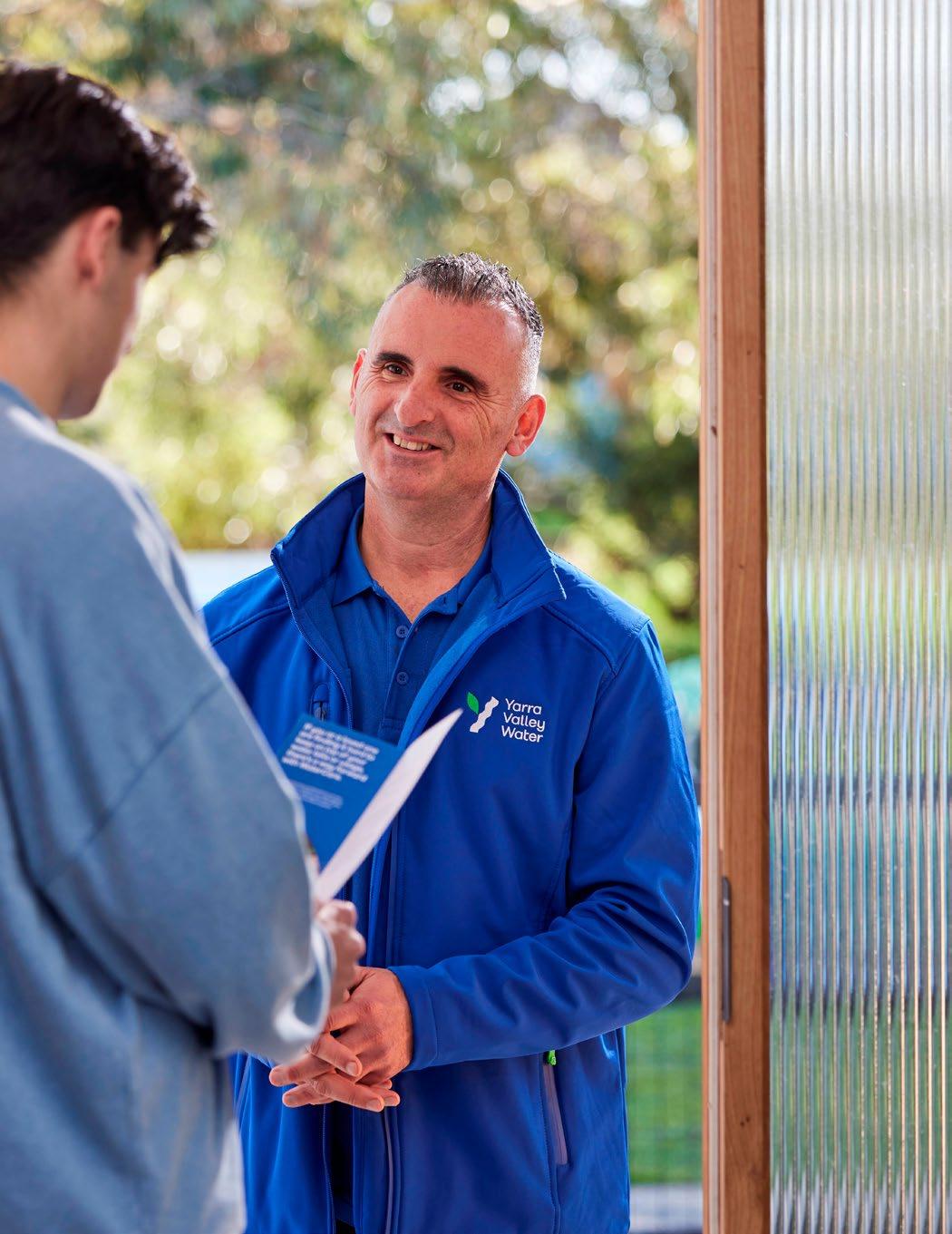
Looking ahead, how do you see Yarra Valley Water’s role evolving as cities become smarter, more circular, and more climate-resilient — and what kind of utility do you hope to lead into that future?
I see our role as a climate leader. This doesn’t just mean we are at the forefront
of climate innovation, but also supporting our communities and the wider water sector in building a more sustainable and resilient future.
Our Wollert food waste to energy facility exemplifies this approach. Situated alongside our Sewage and Recycled Water Treatment Plants and a partnership
Community Farm, it demonstrates how a circular economy hub can operate in practice. The facility converts food waste into clean, renewable electricity that powers itself, the treatment plants and the farm. Together, these facilities close the loop, turning waste into resources, producing recycled water to support Melbourne’s growing northern suburbs, and generating renewable energy for our operations.
We’re also proud to work with Traditional Owners in managing the land at Wollert, incorporating cultural burning and other traditional land management practices. This partnership helps restore and care for Country, strengthening both environmental outcomes and cultural connections.
Since opening in 2017, the Wollert facility has processed more than 200,000 tonnes of food waste, supporting the Victorian Government’s goal to halve food waste to landfill by 2030. It’s a strong example of how utilities can contribute to a circular, low-carbon economy while benefitting the community.
Our transition to an electric fleet and our habitat restoration projects build on this same philosophy, demonstrating how utilities can operate more sustainably, reduce emissions and strengthen climate resilience. Projects like these help go beyond operational excellence, acting as a blueprint for others wanting to improve. It links back to our vision, to create a brighter future for our communities and the environment. We’re not only operating to improve things for ourselves, but the communities and industry we’re part of.
"To offset
our residual emissions,
we are investing in high-integrity Victorianbased carbon
sequestration and reduction projects"
In 2019, fire destroyed part of one of Europe’s most iconic monuments. After five years of intense reconstruction and restoration efforts, Notre Dame Cathedral in Paris reopened its doors in December 2024. What few people know is that before the physical work began, the infrastructure had already been rebuilt — virtually. A 3D digital replica of the monument, created years earlier by an art historian, became a key tool for its restoration, enabling the recovery of architectural details with millimetric precision. The virtual saved the real.
Notre Dame, a witness to centuries of history, suddenly became a witness to innovation. Specifically, the power of a technology that is revolutionising essential sectors like construction and water management: BIM.
BIM (Building Information Modelling) is the foundation of digital transformation in engineering and construction. It is now becoming a key driver in the transformation of the water sector, changing how critical infrastructure like water treatment plants, supply networks, and sanitation systems are designed, built, and managed.
It’s not the same to look at a static technical drawing as it is to navigate through an intelligent digital simulation. That’s the essence of this methodology, which allows the creation of a collaborative digital model containing all relevant data about an infrastructure throughout its lifecycle. It’s not just a 3D model. It’s a virtual replica of the real infrastructure that integrates information about materials, costs, timelines, environmental data, maintenance, and much more. This
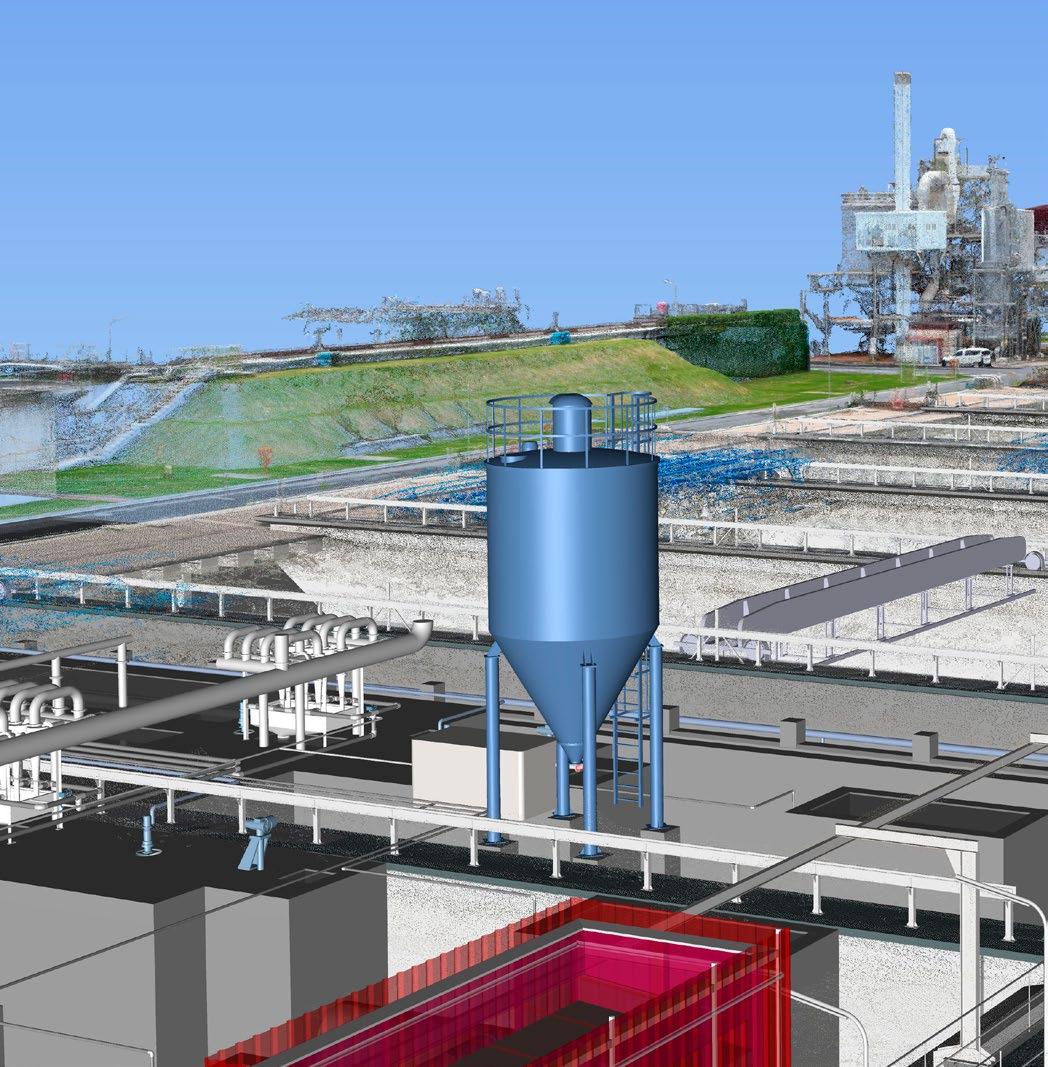
The rebirth of Notre Dame Cathedral began not on the construction site, but in a digital environment. A precise 3D replica allowed experts to restore the monument with millimetric accuracy. This same technology — Building Information Modelling (BIM) — is now transforming how we design, build, and manage critical water infrastructure, from treatment plants to urban supply networks.
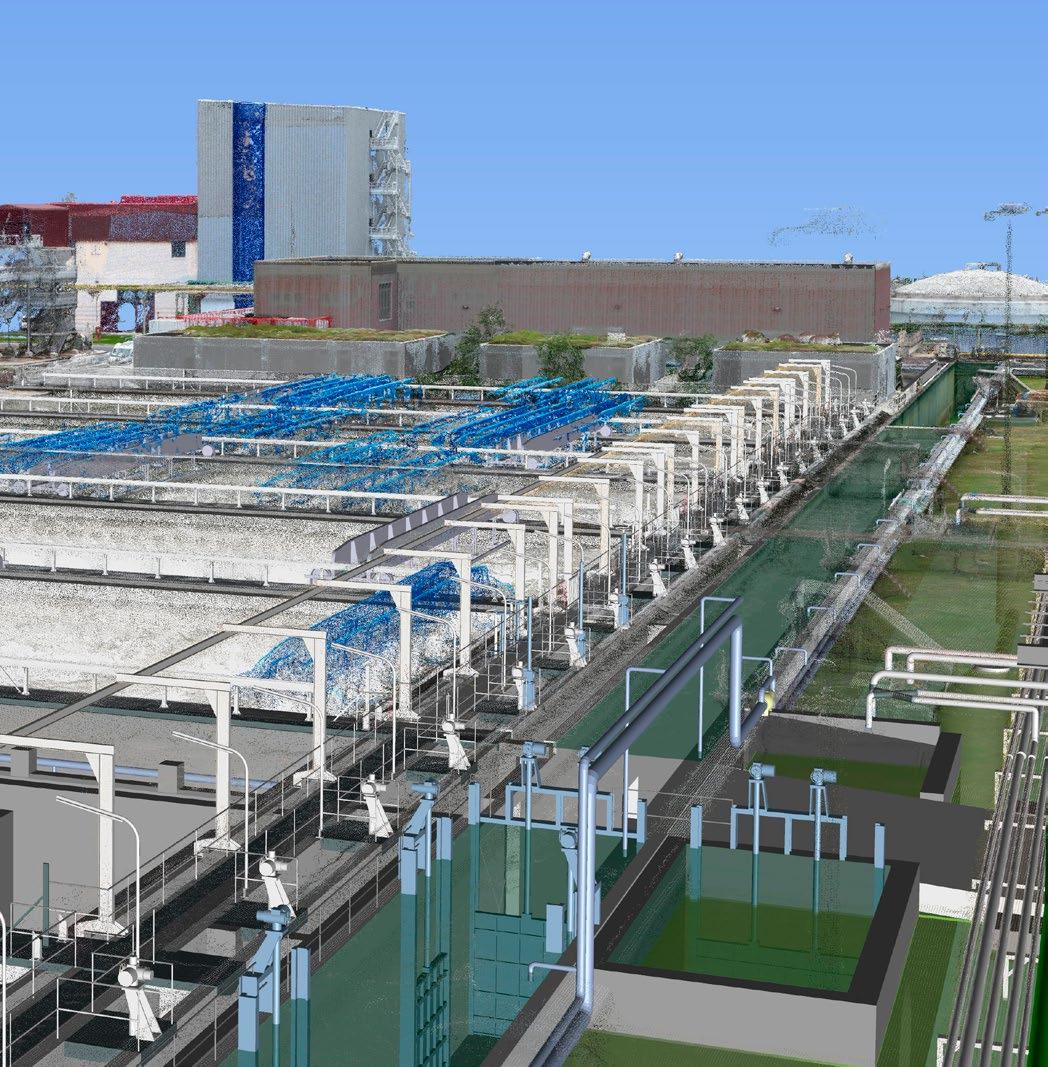
enables simulations and the anticipation of design and management issues.
A practical example: the renovation of a water treatment plant. Before the work begins, BIM makes it possible to visualise the entire network of pipes, valves, and connections before they physically exist. If something doesn’t fit, it’s detected in time. If an intervention needs to be planned, the exact location, timing, and method are known. The entire team works on the same version of the model, in real time, avoiding errors, duplication, and enabling daily coordination among all parties.
The use of BIM in public procurement is growing rapidly in Spain, with over 4,600 published tenders and a cumulative investment exceeding 15 billion
euros, according to the Public Sector BIM Procurement Observatory of Spain. But this “new dimension” offers potential that goes far beyond. The technology that helped Notre Dame rise from its ashes is now present in projects all around the world.
The Shanghai Tower, the tallest building in China and the second tallest in the world, was designed with an asymmetrical shape to protect it from the wind. This design was made possible thanks to BIM technologies, which also enabled its construction to be completed 30% faster. The Emerson College building in Los Angeles (USA) used BIM technologies to ensure the entire building was efficient without introducing drastic changes to its overall design, facing the challenge of covering a vast area without affecting any of the surrounding buildings.
In total, more than 8,500 infrastructure scans have been performed, generating over 75 hectares of data in the form of point clouds
At Mexico City’s International Airport, the introduction of BIM technologies was key to integrating multiple platforms and coordinating the complex design of the structure, thanks to its tools for cross-disciplinary coordination and specific features for handling size and geometry. This technology was also crucial in the expansion of the Panama Canal, which posed a major engineering challenge due to the vast volume of work, detail, and dimensions involved.
In Spain, the recently renovated Santiago Bernabéu football stadium employed BIM for its design and management, creating a digital model of the stadium as the foundation for reliable and precise planning and execution of the works. A few years earlier, Madrid also saw the construction of the new Metropolitano Stadium, where the use of the BIM method was essential, as executing all its parts required extensive coordination, which was achieved thanks to virtual models. Moreover, this also allowed many of the stadium’s elements to be prefabricated.
In the water sector, Aqualia has integrated BIM into projects for wastewater treatment plants, drinking water plants,
BIM is a virtual replica of infrastructure that integrates information about materials, costs, timelines, environmental data and maintenance
A team can work on the same version of the model, in real time, avoiding errors, duplication, and enabling daily coordination among all parties
and desalination facilities, where the entire infrastructure and processes have been digitised, modelled, coordinated, and managed to improve operation and maintenance. BIM is also being applied to urban supply networks, pumping stations, and sanitation systems, enabling more efficient and sustainable management, alongside CMMS (Computerised


Maintenance Management Systems) and GIS (Geographic Information Systems) applications.
A BIM project begins by scanning an infrastructure using a point cloud through specialised software. This is a three-dimensional representation of an object or space, composed of a large number of individual points in a coordinate system. In BIM methodology,

BIM’s interoperability enables collaboration among professionals from different disciplines (engineers, operators, technicians…), improving coordination and responsiveness. Because BIM allows system simulations, failures or deviations can be anticipated before they occur, such as pipe or structural conflicts or scheduling issues. It also facilitates the automatic generation of technical documentation, simplifying review and approval processes.
From its BIM and Reality Capture department, Aqualia has conducted scans of countless hydraulic projects of various scales, including construction, expansion, and maintenance of wastewater treatment plants, drinking water plants, and desalination facilities. In total, more than 8,500 infrastructure
The use of BIM in public procurement is growing rapidly in Spain, with over 4,600 published tenders and a cumulative investment exceeding €15 bn
scans have been performed, generating over 75 hectares of data in the form of point clouds. These data enable precise tracking of works, generation of As-Built plans (including all modifications made during construction), pre-construction decision-making, and element identification, among other uses.

the term “modelling” refers to the process of creating a digital reconstruction and adding extensive data such as materials, costs, and scheduling.
The power of this tool is immense. A global, integrated, and precise vision allows for a clear and accessible understanding of the entire system (pipes, connections, valves) and optimisation of all project phases — from design and execution to commissioning and maintenance.
From its BIM and Reality Capture department, Aqualia has conducted scans of countless hydraulic projects of numerous scales
KHALDON KHASHMAN
SECRETARY GENERAL, ARAB COUNTRIES WATER UTILITIES ASSOCIATION (ACWUA)
“ACWUA ensures that the voices of Arab utilities are not only heard but actively shape global water sector policies and partnerships"
Khaldon Khashman, Secretary General of the Arab Countries Water Utilities Association (ACWUA), shares insights on the association’s origins, growth, and impact in advancing professional standards, digital innovation, and regional collaboration among Arab water and wastewater utilities.
ACWUA was founded to bring together Arab water and wastewater utilities under a single professional platform. What were the main motivations behind its creation, and how has ACWUA evolved over the past years?
The main motivation behind establishing ACWUA was to create a platform that brings together all Arab water and wastewater utilities to discuss common challenges facing the sector and to identify solutions, tools, and best practices that enhance service delivery to their customers using the latest technologies.
Since its formal establishment in 2009, the Arab Countries Water Utilities Association (ACWUA) has played a leading role in strengthening cooperation, capacity building, and knowledge exchange among water and wastewater utilities across the Arab world. In this interview, Khaldon Khashman, ACWUA’s Secretary General since its inception, reflects on the association’s journey from its early beginnings to becoming a recognised regional and international platform. He discusses the motivations behind ACWUA’s creation, its achievements in professionalising the water sector, and its ongoing efforts to promote digital transformation, institutional strengthening,
"ACWUA brings together Arab water and wastewater utilities to discuss common challenges and identify solutions, tools, and best practices"
and regional water security. Through strategic partnerships and continuous engagement, ACWUA continues to represent the collective voice of Arab utilities in shaping sustainable water management policies and practices globally.
You have served as Secretary General of the Arab Countries Water Utilities Association (ACWUA) since its formal establishment in 2009. How did you become involved with ACWUA, and what drew you to this regional initiative?
Before becoming the Secretary General of ACWUA, I served as the Secretary General of the Ministry of Water and Irrigation (MWI) in Jordan. The establishment of ACWUA began in 2006, supported by the German Federal Ministry for Economic Cooperation and Development (BMZ). During my tenure at MWI, I represented Jordan on the ACWUA Founding Committee, where Jordan played a leading role in supporting ACWUA creation. In 2008, both the Founding Committee and the BMZ representatives invited me to lead ACWUA, and I officially assumed the position of Secretary General in 2009.
The idea of ACWUA was first conceived during a meeting in Amman between two experts — the Director of GIZ in Palestine and myself. Following that discussion, we applied for funding from BMZ to support the establishment of ACWUA. In 2006, we began reaching out to Arab water utilities, and representatives from eight Arab countries attended the initial meeting, during which a Founding Committee was formed. I was asked to serve as the Acting Secretary General of ACWUA during this foundational period.
The official General Assembly to establish ACWUA took place in Alexandria, Egypt, in November 2008, where the first Board of Directors was elected, and I was appointed as Secretary General. During that meeting, the Government of Jordan kindly offered to host ACWUA’s headquarters in Amman. The hosting agreement was signed shortly thereafter, and we officially began operations from Amman on January 1, 2009.
Over the past 16 years, ACWUA has continued to grow and evolve, becoming a leading regional platform for water and wastewater utilities across the Arab world.
ACWUA now connects more than 100 utilities from 18 Arab countries. How does the association encourage collaboration and knowledge exchange among such a diverse membership?

During ACWUA’s establishment phase, we organised a major meeting in Abu Dhabi, UAE, which brought together more than 500 participants. The attendees included representatives from Arab water utilities, funding agencies, international organisations active in the water and wastewater sector, the International Water Association (IWA), and the United Nations Economic and Social Commission for Western Asia (ESCWA), which hosted ACWUA during its formative period. The event also gathered a large number of water and wastewater experts from around the world.
During this meeting, participants identified the key common challenges facing Arab utilities. These shared issues were organised into seven Technical Working Groups (TWGs) focusing on the Management of Utilities, Utilities Reform, Capacity Building and Certification, Benchmarking, Public Awareness, Behaviour Change, Gender, and Civil Society Engagement, Management of Water Resources, and Water and Health.
Guidelines were developed for each Technical Working Group, and leading countries were designated to head specific TWGs based on their expertise and experience. Following this, we began applying for funding and developing training programs based on the needs assessments conducted by the ACWUA Secretariat in collaboration with the leaders of each TWG. Since then, we have successfully implemented numerous projects, training programs, and operator certification initiatives across the region.
Capacity development initiatives have become an important component of ACWUA’s work. How have these initiatives supported professionalisation and improved service quality across member utilities?
ACWUA believes that traditional training programs are often not sustaina-
ble, as they do not ensure continuous knowledge development for trainees. Therefore, ACWUA decided to establish certified operator training programs designed to build long-term capacity within the sector.
To achieve this, ACWUA trained more than 200 Trainers of Trainers (ToT) to deliver these certified programs and obtained official accreditation from the Accreditation and Quality Assurance Commission / Ministry of Higher Education and the Water Professionals Institute (WPI) as a licensed training centre. This license authorises ACWUA to provide professional training and technical education in the areas of water management, operation, and maintenance of water and wastewater facilities.
To date, more than 2,500 trainees and experts from the utilities in the Arab Region have successfully completed ACWUA’s certified training programs.
Institutional strengthening is crucial to sustainable service delivery. What are the main governance challenges facing Arab water utilities, and how is ACWUA supporting members to address them?
As mentioned above, all ACWUA’s developments and projects have been implemented through an institutional framework designed to ensure sustainability within member utilities — as reflected by the significant number of trained professionals. Today, ACWUA continues to implement numerous training programs and institutional development projects that support Arab water and wastewater utilities across the region.
"We have successfully implemented numerous projects, training programs, and operator certification initiatives across the region”
The water sector is rapidly adopting digital tools and data-based management. How is ACWUA helping utilities navigate digital transformation while ensuring operational and financial sustainability?
ACWUA has always recognised the importance of developing tools and database management systems to support Arab utilities in their transition toward smart operations and the adoption of digital solutions. In line with this vision, ACWUA has developed several innovative tools, including a Diagnostic Tool for Reducing Non-Revenue Water (NRW).
This tool enables utilities to identify and analyse the underlying causes of high NRW levels by assessing the condition and integration of various systems, such as the GIS system, which includes detailed maps of all water and wastewater customers, each assigned a unique key number linked to the integrated ERP system, the billing system, the financial system, the Customer Information System (CIS), and the Asset Management System.
Through these digital tools, ACWUA helps utilities enhance operational efficiency, improve data-driven decision-making, and move toward smarter, more sustainable management of water resources.
Furthermore, during the Arab Water Week Conference and Exhibition, organised by ACWUA, the association dedicates multiple sessions — typically featuring three to four expert speakers — to showcase the latest technologies in digitalisation and smart utility management. These sessions aim to facilitate knowledge transfer and experience sharing among delegates from Arab utilities and the global water community.
Many Arab countries rely on transboundary or shared water sources. How can utilities contribute to building regional water security and resilience in such a context?
From my personal experience as Secretary General of the Ministry of Water and Irrigation (MWI), transboundary water resources were a central part of my mandate. I served as Chairman of the Jordanian team in the Jordanian Israeli Joint Committee, Vice Chairman of the Jordanian Syrian Joint Committee, and led the Jordanian negotiation team with Saudi Arabia concerning the Disi/Al-Saq fossil water aquifer.
Through these negotiations, we successfully resolved disputes by agreeing to establish a 10-kilometre buffer zone on each side of the border, where no wells would be drilled for any purpose, whether for domestic water supply or irrigation.
In addition, ACWUA has implemented several capacity-building initiatives in this field, including training programs for Jordanian experts on negotiation skills to strengthen national negotiation teams. Furthermore, ACWUA conducted a study commissioned by UNICEF’s Regional Office on the impact of water trucking and transboundary water resources management.
Ultimately, countries sharing aquifers should focus on building the capacity of their negotiation teams, equipping them with a clear understanding of historical water rights and a reliable historical database for each shared aquifer and transboundary water resource. Successful negotiations should always aim for a win-win outcome that benefits all parties involved.
ACWUA works with organisations such as UN-Water, GIZ, and the World Bank. How does the association ensure that the perspectives of Arab utilities are reflected in global policy discussions and partnerships?
ACWUA ensures that the perspectives of Arab utilities are effectively represented in global policy discussions and partnerships through a comprehensive approach.

It engages in advocacy and communication by actively highlighting the needs, challenges, and achievements of Arab utilities through publications, reports, and policy briefs. These efforts contribute to global dialogues on water security, utility management, and sustainable development.
ACWUA also participates actively in global platforms, maintaining membership and partnerships with numerous regional and international organisations. These include observer membership in the Arab Water Ministerial Council of the League of Arab States, membership in the International Water Association (IWA) Water and Sanitation Taskforce, the World Water Council, and Water and Sanitation for All (SWA). It also maintains partnerships with many international water organisations and expert networks, as listed under ACWUA Cooperative Partners.
In addition, ACWUA consolidates Arab utility views by serving as a regional voice that gathers the experiences, challenges, and priorities of its member utilities. Through surveys, consultations, and Technical Working Groups (TWGs), it
synthesises practical insights to inform global discussions.
By implementing projects, training programs, and research studies across the Arab region, ACWUA also promotes knowledge sharing and technical expertise. These activities produce evidence-based recommendations that reflect the realities of Arab utilities, ensuring that global policy guidance is grounded in practical operational experience.
Through this multi-faceted approach, ACWUA ensures that the voices of Arab utilities are not only heard but actively shape global water sector policies and partnerships.
After more than a decade and a half of progress, what is your long-term vision for ACWUA’s contribution to the professionalisation and governance of Arab water utilities?
Since its establishment, ACWUA has successfully developed four consecutive five-year business plans, each detailing the projects and activities planned for the respective period. These plans are reviewed annually to monitor progress against targets, with all processes con-
ducted in strict compliance with ISO 9001, 45001, and 14001 standards.
ACWUA has also undergone auditing by USAID through PwC under the Non-US Organization Pre-award Survey (NUPAS), which evaluated all operational mechanisms, identified gaps, and guided corrective actions. Consequently, standard operating procedures were established for every unit, and mandates were clearly defined, enhancing transparency, accountability, and enabling ACWUA to qualify for direct USAID grants.
To ensure responsiveness to member needs, ACWUA conducts a biennial needs assessment, which informs and updates the business plans. This ensures the association remains continuously aligned with the current and future priorities of its members.
"More than 2,500 trainees and experts from the utilities in the Arab Region have successfully completed ACWUA’s certified training programs"
Artificial intelligence, open data and geospatial tools are rapidly transforming how water infrastructure is planned, built and operated. At Bentley Systems’ Year in Infrastructure and Going Digital Awards event in Amsterdam, these themes shifted from concepts to real applications, with speakers highlighting how digital twins and AI can support limited engineering resources. For the water sector, the focus centred on context, trust and adoption.
Z Olivia Tempest
Bentley Systems’ Year in Infrastructure and Going Digital Awards event brought together infrastructure practitioners, technology providers and researchers from around the world. Rather than presenting AI as a standalone topic, plenary sessions and sector panels treated it as part of a broader shift towards more integrated and data-rich ways of working. In particular, speakers and interviewees focused on how AI, digital twins, and open platforms can be combined with existing engineering practices to improve resilience and service delivery. Nicholas Cumins, Bentley Systems Chief Executive Officer, framed the challenge as one of capacity rather than technology. He described AI as a way to help infrastructure engineers manage growing
workloads and stressed that Bentley Systems intends to support, not displace, professional expertise. In his words, “AI is poised to transform infrastructure. At Bentley, our vision is for AI to empow-

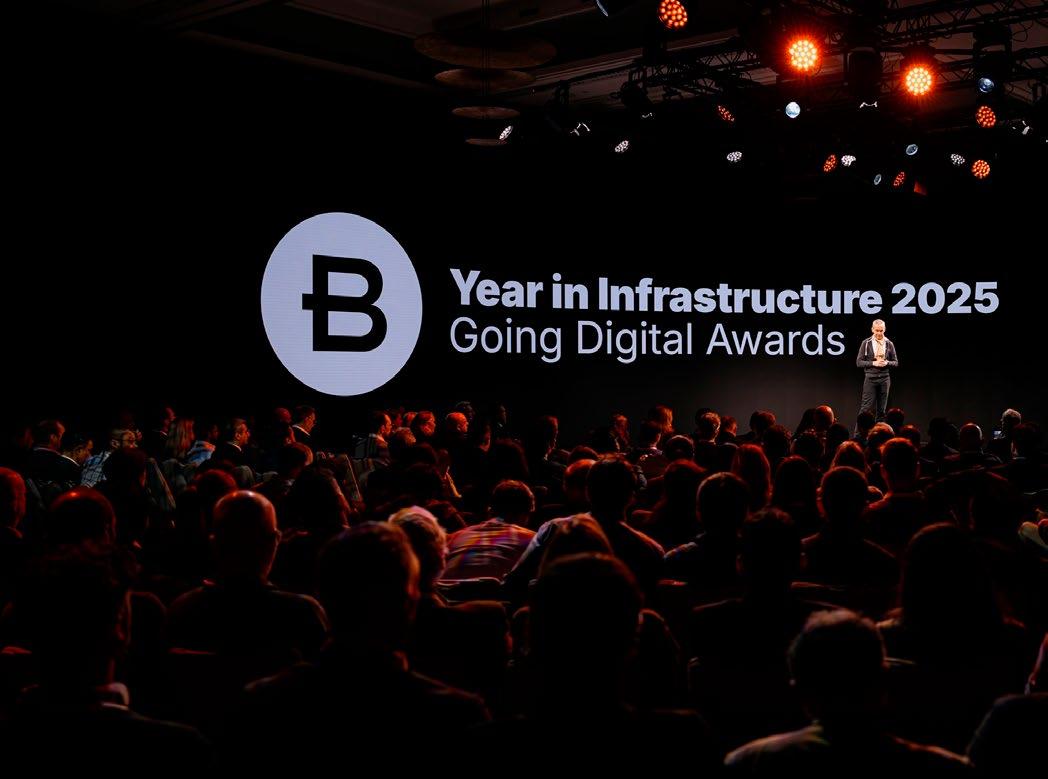


AI can analyse historical context and help distinguish genuine leaks from false positives linked to other events such as heat waves
er infrastructure engineers, not replace them. Trustworthy AI, built on infrastructure context, can improve engineering productivity and transform workflows across project and asset lifecycles.”
He linked this directly to workforce constraints, noting that there are not enough engineers in the world to do all the work that needs to be done and that AI promises a step change in productivity.
A global survey released during the event, carried out with Pinsent Masons, Mott MacDonald and Turner and Townsend, suggested that about half of infrastructure professionals are already piloting or implementing AI. Around one third of submissions to this year's Going Digital Awards and nearly half of the finalists reported some use of AI. Against that backdrop, Bentley Systems used the conference to set out its infrastructure AI strategy and invite users into a wider collaboration.
Infrastructure AI and the role of context
For the water sector, the idea of infrastructure AI is closely linked to existing modelling tools. In an interview on the sidelines of the event, Francois Valois, Senior Vice President, Bentley Open Applications at Bentley Systems, explained that Bentley is positioning infrastructure AI as something built on its established analytical engines.
He noted that at this year's Conference, the company announced the Infrastructure AI initiative, focused on co-creating solutions with customers by leveraging existing Bentley tools and application programming interfaces. As an example, he pointed to the OpenFlows engine, widely used for analysing water networks during planning and design. Although its APIs were not originally created for AI, they can now act as the numerical engine for AI-powered capabilities. Until now, he added, some of these possibilities have
A global survey released during the event suggested that about half of infrastructure professionals are already piloting or implementing AI
been constrained more by business models and licensing terms than by technology. The intention of the initiative is to work with users rather than discourage experimentation and to support innovation across all of Bentley's industry segments, with particular relevance for water, where OpenFlows is widely used.
Molly Brown, Senior Director of Product Management at Bentley Systems, stressed that in water engineering, precision is non-negotiable and mistakes have real consequences, which is why humans must remain in the loop and AI models need to be trained using project, historical, environmental and engineering context. In her view, AI should help eliminate mundane, repetitive work rather than the workforce, but human oversight remains essential because of the complexity of water systems.
Digital twins, WaterSight and managing data volume
Turning context into operational insight is a central challenge for utilities. In the
In water engineering, precision is non-negotiable, and mistakes have real consequences, which is why humans must remain in the loop

water sphere, this often centres on digital twins and on integrating hydraulic models, supervisory control and data acquisition systems and other monitoring tools.
Valois pointed to Bentley Systems' work with OpenFlows WaterSight as an example of how this is being approached. He described WaterSight as a tool that supports operational water utility management and has been deployed in Brazil and other regions. It is AI-infused, including alarm and anomaly management across SCADA and IoT data sources. In practical terms, this means that when water pressure suddenly drops and a leak alarm is triggered, AI can analyse histori-
cal context and help distinguish genuine leaks from false positives linked to other events such as heat waves. Given the size and noise of these datasets, Valois argued that it is unrealistic for humans to interpret them manually and that AI can filter noise and point operators to specific locations worth investigating.
He also acknowledged that creating and maintaining a digital twin is challenging in its own right. AI can assist by improving input data quality and automating repetitive tasks, such as schema mapping between incoming data formats and internal systems, opening up many possible applications.

In a separate interview, Cecilia Correia, Global Water Industry Solutions Strategist at Bentley Systems, underlined the role of hydraulic modelling as a starting point for this journey. She said that hydraulic modelling, which sits at the core of OpenFlows, is essentially an early form of a digital twin, a digital representation of the physical network. According to her, it allows engineers to understand how their systems behave under different or critical conditions, which is essential for resilience and sustainability, for example, when preparing for future challenges such as population growth or increased water demand.
Correia noted that in the past, modelling and design were often done in silos, with hydraulic models separate from engineering drawings or project management. She said that Bentley Systems is now connecting these disciplines through an integrated, interoperable environment, supported by an Industry Solutions team that aims to align technology with real-world needs and trends. By combining OpenFlows with tools such as OpenRoads Designer and ProjectWise, she argued that it is possible to enable fully connected digital workflows from design and operation through to construction and
maintenance, reducing errors during construction and improving long-term performance.
Looking ahead, she identified real-time modelling as the next step, by connecting the digital twin to live data from pumps, treatment plants and sensors. In her words, that transforms the model from something static into a dynamic system that helps utilities detect issues, optimise operations and plan for future resilience. She described this as an infinite loop rather than a closed circle, a continuous process of learning, adapting and improving.
If digital twins are to work across multi-stakeholder projects, the question of openness is central. In a joint interview, Oliver Conze, Senior Vice President and Head of Product for Bentley Infrastructure Cloud, and Jason Slocum, Director of Product Management at Bentley Systems, emphasised that open standards and data access policies have become key parts of the company's positioning.
Slocum described interoperability as a permanent differentiator. He observed that across design, construction and operations organisations are seldom working with software from a single vendor, nor with a single firm. In that context, he argued that an open ecosystem capable of bringing information together, aligning and aggregating it and providing a single view of truth is essential for activities such as design reviews and 4D construction planning.
Artificial Intelligence should help eliminate mundane, repetitive work rather than the workforce, but human oversight remains essential
Furthermore, Slocum highlighted that openness is a core pillar of what Bentley does, covering both the ability to ingest data and to export it using open standards. He stressed that the company strongly believes that customer data belongs to the customer, so it does not lock information into Bentley or Bentley Infrastructure Cloud. Data remains available through open standards such as IFC.
Those points were echoed in the keynote, where Cumins reiterated that users' data remains their own and explained that the company trains AI models only on licensed or voluntarily contributed data, with a Data Agreement Registry intended to provide visibility into how information is used.
For utilities and their regulators, the question of trust goes beyond licensing detail. Valois linked it directly to professional responsibility. He commented that AI can help engineers and operators become more productive but cannot replace them today and that faster processing enables optioneering by giving engineers more time to explore alternative solutions and consider factors such as environment, resilience, compliance, security and safety. He argued that engineers should embrace AI, learn its strengths and limitations and apply it responsibly rather than relying on it for every task.
Slocum also pointed out concerns about data trust from a product perspective. He said that while there is excitement around AI, there is also hesitation, as users want clarity on how their data is used. He explained that Bentley em-
In the past, modelling and design were often done in silos, with hydraulic models separate from engineering drawings or project management

phasises that data remains owned by the customer, is not used to train models without permission and that AI usage is auditable, arguing that trust is critical because organisations want to innovate but must protect sensitive information.
Across the various interviews, the question of adoption surfaced repeatedly. When asked about barriers to scaling smart water solutions, both Correia and Richard Vestner, Vice President at Bentley Systems, placed more weight on culture than on technology or finance.
Vestner described adoption as the key challenge, noting that technology exists and is scalable, and that usability is addressed through user experience and design. In his view, digital approaches also require trust, not necessarily in a fully autonomous machine but in tools that remain under human control. He explained that Bentley is trying to make technology transparent rather than a
black box, but that users still need curiosity and willingness to try new methods. He characterised technology as something that should augment what people do, offering more options and inspiration, and suggested that digital twins in particular can support faster and better decision-making by making it easier to test what-if scenarios.
Correia added that fears of job loss remain an obstacle even where utilities struggle to recruit. She observed that many people worry about being replaced by machines, yet when speaking with utilities, the first thing they mention is a shortage of staff. In her view, roles will change rather than disappear, with a shift towards profiles such as data scientists and away from manual tasks such as physically operating gates. She argued that more people will focus on validating machine outputs, running tests and understanding accuracy and that this represents upskilling rather than replacement. Questions about the speed of change also shaped the discussion about plat-

forms and integrated ecosystems. Asked whether water, energy and transport systems are moving into a common platform era, Vestner replied that adoption is again a prerequisite. He suggested that software companies will need to adjust what they offer, how they offer it and the associated business models because value creation with AI looks different from a decade ago. He pointed to the difference in speed between a conservative water industry and rapidly evolving technology and AI, arguing that standardisation will need to adapt quickly, even though people generally not like change.
He said he hoped that products and platforms would drive more standardisation and integration so that convergence between sectors would become possible. As an example, he referred to the idea that a product such as Flexity can share data in one place in what Bentley calls an item, a cloud-based container of information. The more this information is brought together and kept up to date,
he argued, the more domains, specialists and sectors can participate and learn from each other, increasing transparency.
Co-pilots, co-innovation and the next steps for water
Throughout the event, Bentley presented a growing list of AI-enabled applications, including OpenSite+, OpenUtilities Substation+, and SYNCHRO+, all of which are connected to Bentley Infrastructure Cloud. Valois described these as early examples of how generative tools are being embedded in engineering workflows.
He recalled that Bentley was the first to use a large language model in engineering through OpenSite+, which the company had showcased at the previous year's conference. Initially, he said, it was seen as a potentially useful but limited tool, but it became more impactful than expected. This experience led to the creation of Bentley Copilot, a shared AI component that can be applied across applications. Valois stressed that context
remains important and that each version is specialised using a technique known as Retrieval Augmented Generation so that the model remains within the appropriate technical scope. For Slocum, the main value of these co-pilots lies in their ability to remove routine workload. Speaking from his experience as a civil engineer, he referred to the amount of repetitive work involved in labelling, searching for files and managing documentation and argued that co-pilots can help users be more productive and do more with less, particularly in the context of workforce shortages. He cited a remark he had heard that AI will not replace people, but that people who use AI will replace people who do not and suggested that there is some truth in that observation. In his view, AI can also enable smaller firms to compete with much larger organisations by allowing them to move more quickly with a start-up-like mentality, while co-pilots help remove tedious tasks so that engineers can focus on value-adding work.
For the water sector, the interviews and discussions in Amsterdam suggest that the next phase will combine more advanced digital twins, AI-driven analytics, and strengthened communication and governance. As Correia noted, emerging technologies like AI will have a major impact, but the sector is still in the early stages of understanding their full potential. She emphasised that while the opportunities are significant, technology alone is not enough. Real progress will depend on people who understand both the critical value of water and the responsibility of managing it, and who can help drive the cultural change needed for adoption. By
CARLOS COSÍN CEO OF ALMAR WATER SOLUTIONS OPINION
The global water sector is facing an undeniable crossroads. Climate stress, demographic growth, ageing infrastructure, and increasing demand are pushing traditional utility models to their limit. In many parts of the world, water systems operate with infrastructure that is over 50, sometimes even 100 years old — networks designed for a different era, under different environmental, social, and economic conditions.
Today, we need to urgently modernise these systems, not only to ensure service continuity but to increase resilience, reduce losses, incorporate digital technologies, and adapt to a changing climate. But none of this is possible without a financial structure that supports long-term, sustainable investment.
At the centre of this challenge lies the issue of water pricing.
As a sector, we must confront a difficult but essential truth: fair, transparent, and socially balanced tariffs are fundamental to delivering safe, high-quality water services and maintaining modern infrastructure. Yet water is often underpriced compared to other essential services such as energy, telecommunications, or public transport — despite its undeniable value and critical role in human life and economic development.
This contradiction stems, in part, from a legacy mindset that sees water as a free or heavily subsidised public good. But the reality is that while water itself may be a natural resource, the systems that treat, transport, and deliver it safely to homes and industries are anything but free. Networks, pumps, treatment plants, monitoring systems, energy, chemicals, operations teams — all require significant and ongoing investment.
We cannot expect to achieve water security with 20th-century infrastructure and 19th-century pricing logic.
The true value of water often remains invisible — until it is no longer available. This is where the concept of opportunity cost becomes critical. For industries that rely heavily on water, the absence of supply is not just a technical issue; it is a direct threat to operations and profitability. In mining, for instance, water scarcity can halt mineral extraction — an activity that cannot be relocated. In oil and gas, production is increasingly constrained by stricter discharge regulations, where the inability to meet effluent parameters can lead to shutdowns. These are not abstract risks; they are immediate, material impacts that elevate water to a boardroom-level concern. And as awareness grows across extractive sectors, agriculture — the world’s largest water consumer — will inevitably follow. Therefore, unless water risk is fully integrated into corporate decision-making
frameworks and reflected in their financial planning, the economic value of water will continue to be underestimated.
Setting tariffs that reflect the true cost and value of water is not about privatising a resource; it’s about enabling reliable, sustainable service delivery for all. It’s about ensuring that utilities can plan for the future, maintain service quality, and invest in upgrades that benefit users and the environment alike.
"Setting
tariffs that reflect the true cost of water is not about privatising a resource; it’s about enabling sustainable service delivery for all"
It’s also about ensuring that services remain inclusive, through social mechanisms that protect vulnerable populations, while allowing for the financial viability of operations.
From our perspective at Almar Water Solutions, there is an urgent need to rethink the utility model: from one focused solely on operations and maintenance, to one that embraces long-term planning, risk management, and investment in innovation. And this transformation must be built on regional knowledge and global expertise.
This is why we invest in regional platforms and local partnerships that anchor our projects in real-world, community-based understanding. We don’t believe in one-size-fits-all approaches. Our presence in markets such as the Middle East, Latin America, and Asia Pacific has shown us that local engagement —
combined with international experience — is key to building trust, navigating regulatory frameworks, and designing technically and financially adequate solutions. Synergies between our regional services and urban water services platforms are a key takeaway from his strategy.
In parallel, regulation must evolve to support this new model. In areas such as water reuse and desalination — technologies that are no longer emerging but fully mature — we continue to see regulatory environments that are outdated, restrictive, or ambiguous. This slows down private sector participation and prevents scalable solutions from being deployed.
Utilities can and should take a leading role in working with regulators to modernise frameworks and enable innovation. This includes creating space for public-private partnerships, blended finance models, and long-term service contracts that bring in capital, expertise, and performance incentives. Far from replacing public service, private actors can strengthen it, providing technical excellence, financial sustainability, and long-term risk sharing.
To achieve this transformation, it is also essential to strengthen the institutional and technical capacities of water operators. Continuous training, the integration of specialised talent, and the development of strategic management skills are critical to addressing current challenges. It is not merely about introducing new technologies, but about ensuring that the right structures and expertise exist to manage them effectively. Moreover, fostering collaboration between public and private operators can accelerate the transfer of know-how and the implementation of global best practices.
At the same time, citizen engagement must become a central element of this new utility model. Public perception of water’s value is closely tied to transparency, education, and participation. Promoting a more informed water culture will ensure that decisions around tariffs, regulation, and investment are better understood and supported by society. Only through this alignment can we build a modern, equitable, and resilient water system that safeguards the right to water while attracting the resources needed for its long-term sustainability. Looking ahead, we must embrace a new vision for utilities: one in which they are no longer only service providers, but

stewards of water security, enablers of innovation, and facilitators of climate resilience.
This means integrating digital technologies to optimise operations. It means shifting from reactive maintenance to predictive asset management. It means recognising water not just as a utility product, but as a strategic resource, a human right, and a fundamental component of sustainable development.
"We must embrace a new vision for utilities: one in which they are no longer only service providers, but stewards of water security"
Above all, it means putting in place the financial and institutional frameworks that allow utilities to thrive, not just survive, delivering attractive returns for investors. This includes tariffs that are fair, progressive, and transparent; regulations that encourage rather than inhibit innovation; and governance structures that promote accountability and long-term vision.
Because there is no safe, resilient, and sustainable water future without investment. And there is no investment without recognising and valuing water appropriately, not only in moral or environmental terms, but also economically.
Water is life. But water services — when well-managed, well-funded, and well-regulated — are the foundation of successful societies.
Let’s build a utility model that reflects that.

VICE PRESIDENT OF AI SOLUTIONS AND IMPACT, XYLEM
In southeastern Virginia, where one of the world’s largest natural harbours faces rising tides and stronger storms, the Hampton Roads Sanitation District (HRSD) is using artificial intelligence (AI) to stay one step ahead. By forecasting water flows before storms hit, balancing energy use, and simulating operations, HRSD is building a smarter, more resilient utility that shows water leaders everywhere how to prepare for what’s next.
Around the world, utilities face a growing challenge: maintaining service for communities and businesses amid intensifying pressures. In many places, water infrastructure is ageing faster than it can be replaced. Nearly a third of utility workers are nearing retirement. And more frequent, destructive storms, floods, and droughts are upending the rules for operations and planning.
AI is entering the conversation at just the right time. It’s not a magic wand that will solve all of the sector’s problems, but it’s already helping the people who keep water systems running –and its potential will only grow. To prepare for this AI-powered future, utilities should focus on two priorities: improving data management and empowering people.
Using AI with people in mind
It all starts with data. Utilities generate a ton of data, not only from operations but also from IT, HR, finance, and other teams. While traditional analytics can find patterns in that data, AI takes the next step by turning those patterns into decision-ready insights. For instance, it can summarise complex information, simulate scenarios, and recommend actions that help utilities respond faster and with more confidence. Those are powerful capabilities for operators managing constantly changing conditions like rainfall, tides, and treatment capacity. Instead of spending hours sorting through data, they can focus on using insights to make smarter, more strategic decisions. But technology is only part of the equation. Meaningful progress happens when innovation is powered by 10% technology and 90% people. AI should strengthen human judgment and help utilities perform better for their communities.
As with any transformative technology, trust is the foundation that determines whether progress truly takes hold. Water utilities are stewards of a critical resource, so every innovation must start with transparency, good governance, and security. Teams need to feel confident experimenting, learning, and using these tools responsibly. Ultimately, this is about supporting people, not replacing them. When AI becomes a trusted part of everyone’s work, adoption is smoother and the benefits scale quickly.
From data to design: advancing resilience together
At Xylem, we work closely with utilities and partners to balance innovation with responsible use of AI. That means training our own teams while collaborating with others to ensure that this new technology delivers practical value, not empty promises.
"To prepare for this AIpowered future, utilities should focus on two priorities: improving data management and empowering people"
For example, through our partnership with Transcend, we’re applying generative design to speed up how utilities plan and design treatment solutions. By automating early engineering steps, we’re helping utilities respond faster to evolving needs.
It's clear that AI is fast becoming an essential part of how water utilities operate, working quietly in the background to make systems smarter and more responsive, and communities more resilient. These tools will increasingly connect and talk to each other, uncovering new insights and possibilities. Water is one of our planet’s most precious resources, one that is essential to all human activity. AI won’t solve water’s challenges on its own. But when paired with human ingenuity and purpose, it can help us solve them faster – and build a more resilient, sustainable future for everyone.
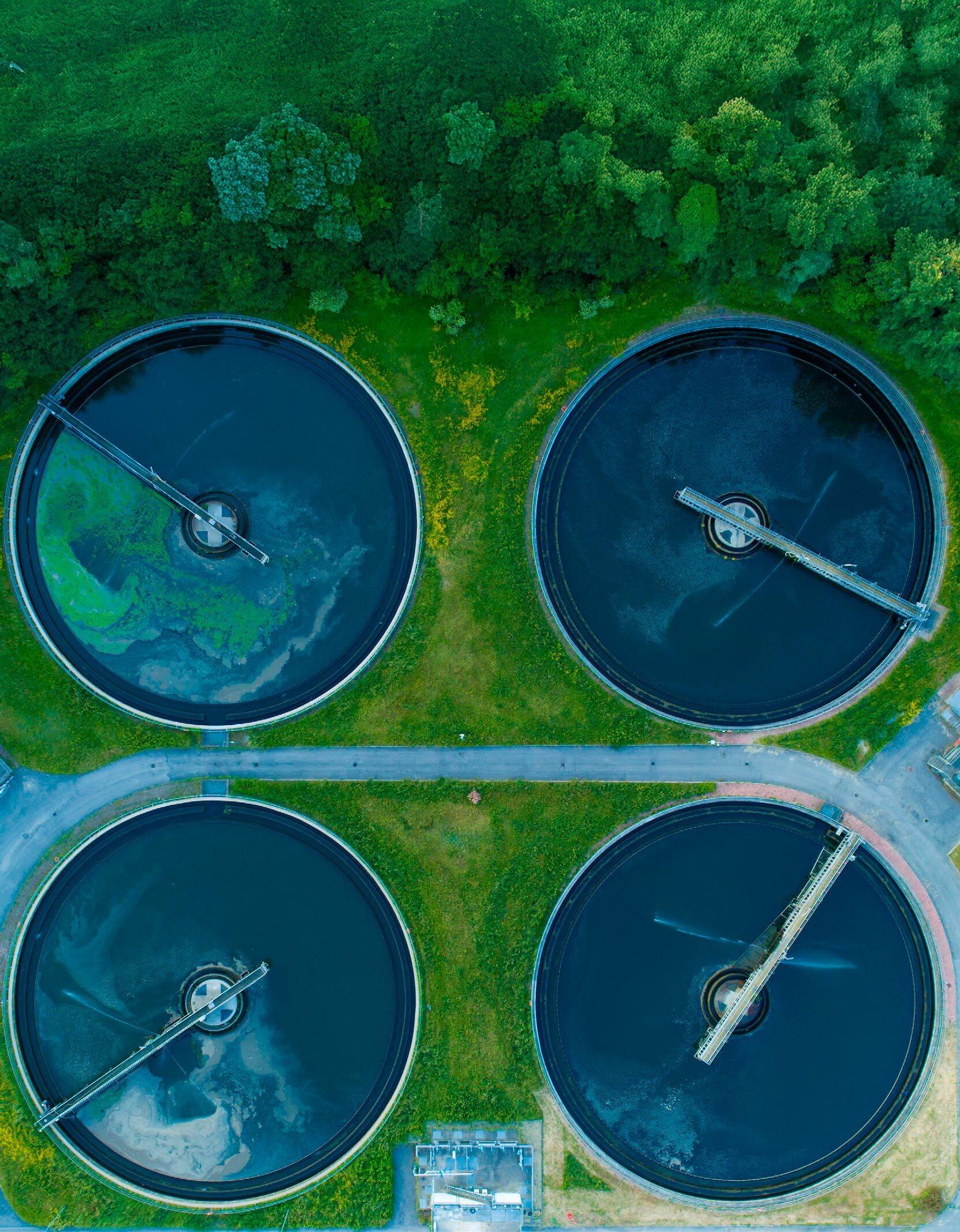
The development of a new wastewater treatment infrastructure marks a significant step toward sustainable water management in Qatar, and Ingeteam is contributing to the sanitation system through the manufacturing of high-power pumps for the Terminal Pumping Station, a key asset component currently under development to ensure efficiency, reliability, and energy optimisation.
Qatar’s urban expansion is leading to a structural upgrade of its sanitation network, with new assets designed to match rising demand and secure dependable wastewater services.
In several rapidly growing districts, an infrastructure program is being deployed in phases to accommodate population increases and redirect flows from existing facilities, in line with the Qatar National Vision 2030 that sets out long-term goals for resource management and public services. Within this program, the Terminal Pumping Station stands out as a pivotal element, ensuring that wastewater collected across the network can be conveyed to the treatment facilities with the hydraulic lift required by the system’s design.
The overall scheme integrates three interdependent components that operate in sequence. Wastewater reaches the Terminal Pumping Station (TPS), where it is consolidated and pressurised for transfer. It then proceeds to the Sewage Treatment Works (STW), where purification processes are per -
Ingeteam’s submersible volute pumps reach more than seventy metres of head
formed to remove contaminants and stabilise the effluent. Finally, the Treated Sewage Effluent (TSE) system provides a route for the safe discharge or the beneficial reuse of reclaimed water. This integrated approach supports consistent service delivery and enables the infrastructure to adapt to future demand as subsequent phases are completed.
Ingeteam, selected among international competitors, contributes to this framework through the manufacturing of high-power submersible pumps specifically engineered for the Terminal Pumping Station. The duty point of the station requires a combination of high flow and significant head, a pairing that is uncommon in this typology and that calls for robust hydraulic design and dependable drive performance. The project’s specifications demand a solution capable of delivering both attributes without compromising long-term stability, and Ingeteam’s units are being developed to meet that requirement with a configuration tailored to the station’s operating envelope.
The scale of the pumping task illustrates the challenge being addressed. The station’s capacity target calls for a combined capacity rounded up to 7,000 litres per second. Beyond the throughput, the hydraulic lift is decisive: the pumps are engineered to reach a total head of more than seventy metres, a parameter that sets stringent conditions for impeller geometry,


shaft design, and motor performance.
Operating at such a head while maintaining the required flow demands precise engineering of the hydraulic components and careful matching between pump and motor to secure reliable starts, stable operation, and a controlled load profile.
Ingeteam manufactures both the pump and the motor, which gives the company full control over the critical interfaces that determine performance under demanding duty conditions. This integrated approach facilitates alignment of hydraulic and electrical characteristics from the outset, reducing technical uncertainty during commissioning. It also helps to maintain consistency in materials selection, tolerances and testing, which is essential when the installation is expected to operate continuously throughout its service life.
To further mitigate deployment risk, every unit undergoes full-scale factory acceptance testing under representative operating conditions at Ingeteam’s headquarters in Spain. The company operates a high-capacity test bench that covers a wide range of flow, head, and power, enabling precise validation of performance at the specified duty points.
Manufacturing provenance and quality assurance are central in the selection process. European manufacturing is considered a marker of reliability and traceability, adding confidence to procurement decisions and to the longterm operation of the assets. Equally important is the company’s accumulated experience. Ingeteam brings more than eighty years of industrial know-how and global references to the project, a background that supports engineering deci-
Through advanced pumping technology, Ingeteam contributes to sustainable water management and helps modernise Qatar’s infrastructure
Innovation and energy efficiency guide each stage of the project’s technological development, ensuring dependable operation
sions and ensures that lessons learned across various markets are embedded in the design and validation of the equipment for this station.
Thermal management is another defining aspect of the solution. Ingeteam pumps incorporate an optimised cooling system that helps maintain appropriate operating temperatures under high load, protecting mechanical integrity and electrical components as the units deliver the specified flow at the required head. This focus on cooling contributes to operational stability by mitigating the risk of thermal stress and by supporting consistent performance over time. In practice, this translates into predictable behaviour under both steady and transient conditions, which is especially relevant in facilities that handle variable inflows and must keep transfer capacity available at all times.
The role of the Terminal Pumping Station within the broader scheme extends beyond mere conveyance. Its dependable operation ensures that upstream networks remain balanced, avoiding bottlenecks in collection systems, and that downstream treatment stages receive an adequate and stable inflow. This continuity allows treatment processes to function as intended, which is a prerequisite for achieving the water quality standards required for discharge or reuse. In this context, the performance of the pumps
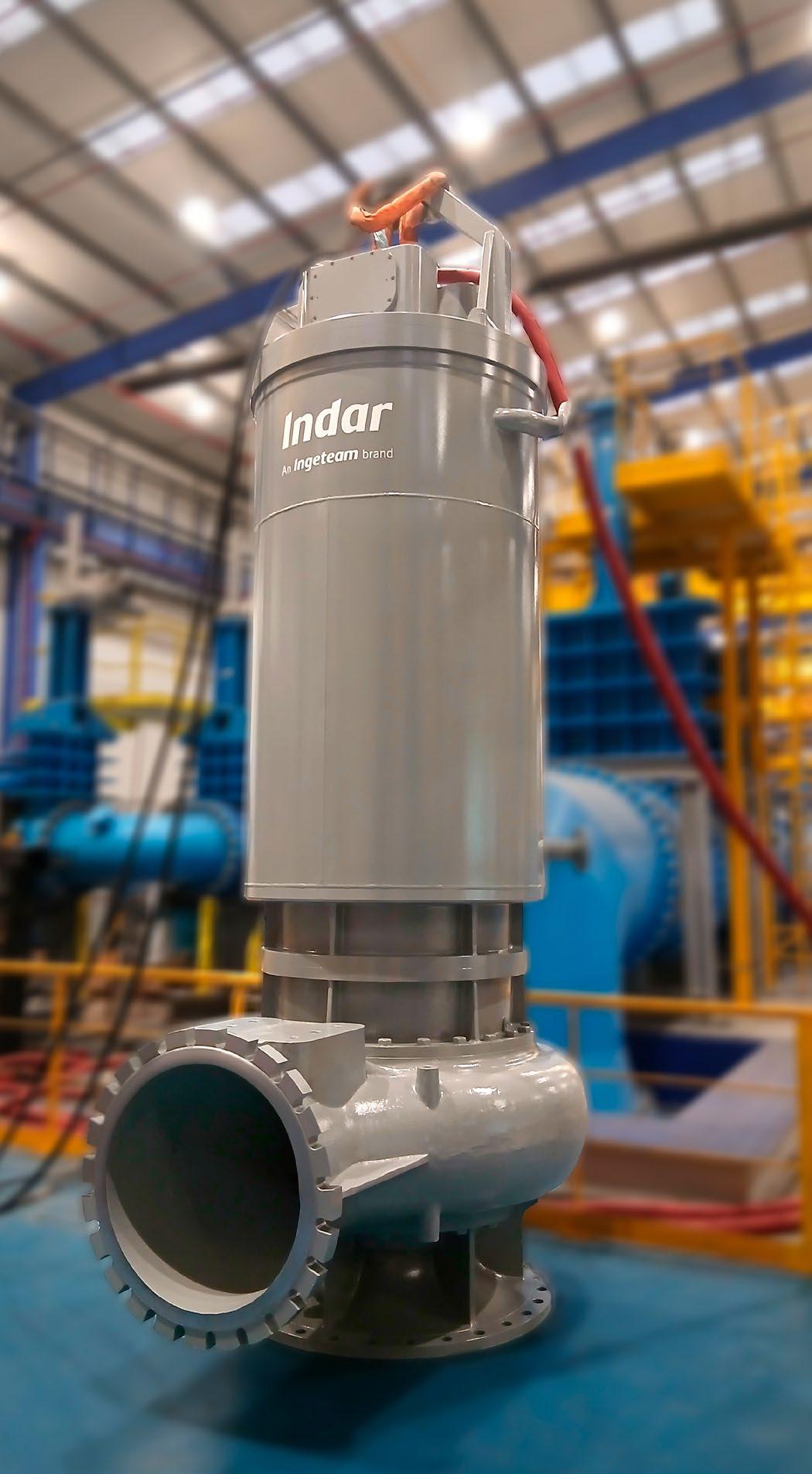
is directly linked to service quality across the entire chain.
Phased development is a core feature of the program and shapes the way assets are dimensioned and integrated. By scaling capacity in stages, the initiative can adapt to population dynamics while maintaining service continuity.
The Terminal Pumping Station is engineered with this perspective in mind, combining immediate capability with a configuration that aligns with the evolution of the network. The units that are currently being manufactured provide the transfer capacity set for the current phase, while the station’s architecture anticipates future integration as the rest of the scheme advances in line with the planning roadmap.
From an operational standpoint, the combination of high flow, high head
and submersible configuration sets a demanding brief that benefits from a clear alignment between design, manufacturing and testing. Ingeteam’s approach integrates these steps under the same framework, allowing a unified view of the hydraulic and electrical subsystems. The integration simplifies the interface with the station’s control and power systems, reducing complexity during commissioning and facilitating the verification of duty points under real conditions.
The contribution of these high-power units ultimately strengthens the sanitation system serving these expanding urban areas. By delivering the specified flow with submersible equipment manufactured under a tightly controlled process, the solution addresses the central challenge at the Terminal Pumping Sta-
tion. Among the key selection factors is the one-stop-shop model offered by Ingeteam, providing single-source responsibility for the complete pump–motor package, together with a strong record of global references and an optimised cooling system that safeguards operation.
As the infrastructure moves forward in phases, the Qatari Terminal Pumping Station will remain a keystone for the scheme’s performance, providing the hydraulic lift that ties collection to treatment and enabling the reuse pathway defined for treated effluent. Ingeteam’s participation through the manufacturing of these pumps underlines how targeted engineering, focused on meeting specific hydraulic constraints, can reinforce essential public services and support the long-term modernisation of the water cycle in the Middle East.
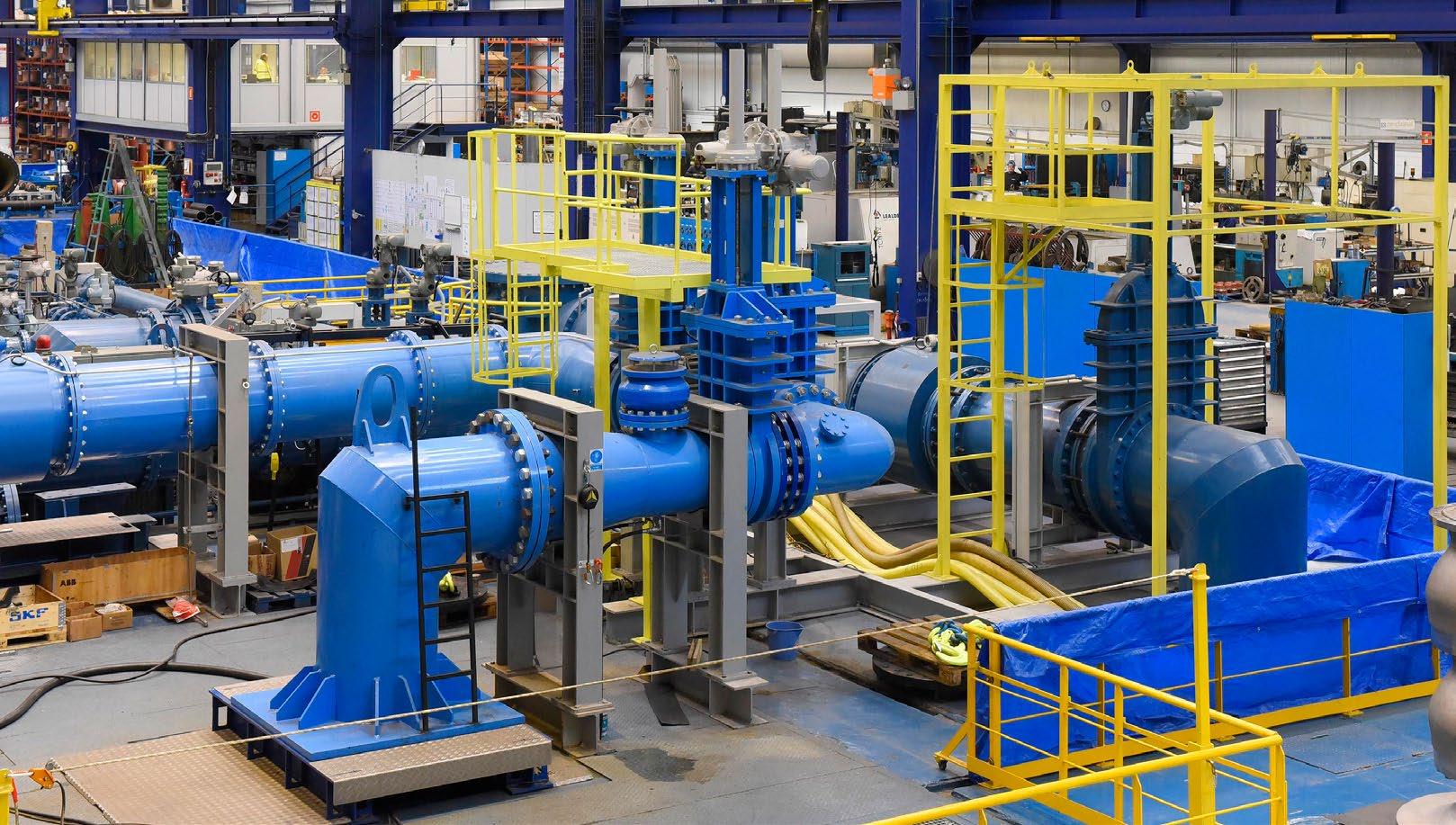
The Terminal Pumping Station serves as a pivotal element, providing the hydraulic lift required to transfer wastewater to treatment facilities
“The
human, economic, and planetary dimensions”
JENNIFER SARA - GLOBAL WATER, CLIMATE, AND INFRASTRUCTURE FINANCE EXPERT AND FORMER WORLD BANK GLOBAL DIRECTOR.
As climate and water challenges grow more urgent, Jennifer Sara draws on decades of global experience to share insights on financing resilient utilities, mobilising investment, and ensuring water takes its rightful place at the centre of climate action.
rightful place at the heart of global climate action.
With more than three decades of experience at the intersection of water, climate, and development finance, Jennifer Sara has been a leading global voice for sustainable water management. As the former Global Director of the World Bank’s Water Global Practice, she oversaw a $30 billion portfolio spanning over 170 projects worldwide, shaping strategies that link infrastructure, policy reform, and inclusive growth. Deeply committed to equity and climate resilience, Sara has dedicated her career to building bridges between science, policy, and public–private investment.
We sat down with Jennifer Sara, who reflects on key lessons from financing resilient and sustainable utilities, discusses how public and private capital can be mobilised to bridge the global water investment gap, and shares her optimism for a future where water finally takes its
"Connections to sanitation often need to be mandated due to the increased costs and public good nature of offsite sanitation"
Drawing on your experience leading the World Bank’s $30 billion Water Global Practice portfolio, what key lessons have you learned about financing resilient, sustainable utilities?
The world has changed dramatically since 1990, when I started my career as a water professional at the World Bank. Since then, the global population increased 55% (from 5 to 8 billion), accompanied by economic globalisation, poverty reduction amid rising inequality, a technology and digital revolution, and increasingly devastating climate change impacts. However, one constant remains: 25% of the global population — mainly in developing countries — still lacks access to safe water, and, importantly, the basic principles needed to finance resilient and sustainable utilities remain unchanged.
Drawing on my experience, I highlight five of many lessons from financing sustainable water and sanitation utilities: 1. The criticality of an institutional framework, policies, and regulatory environment that provide stability and clear rules to investors, utility managers, and consumers. Recognising water as a natural mo-

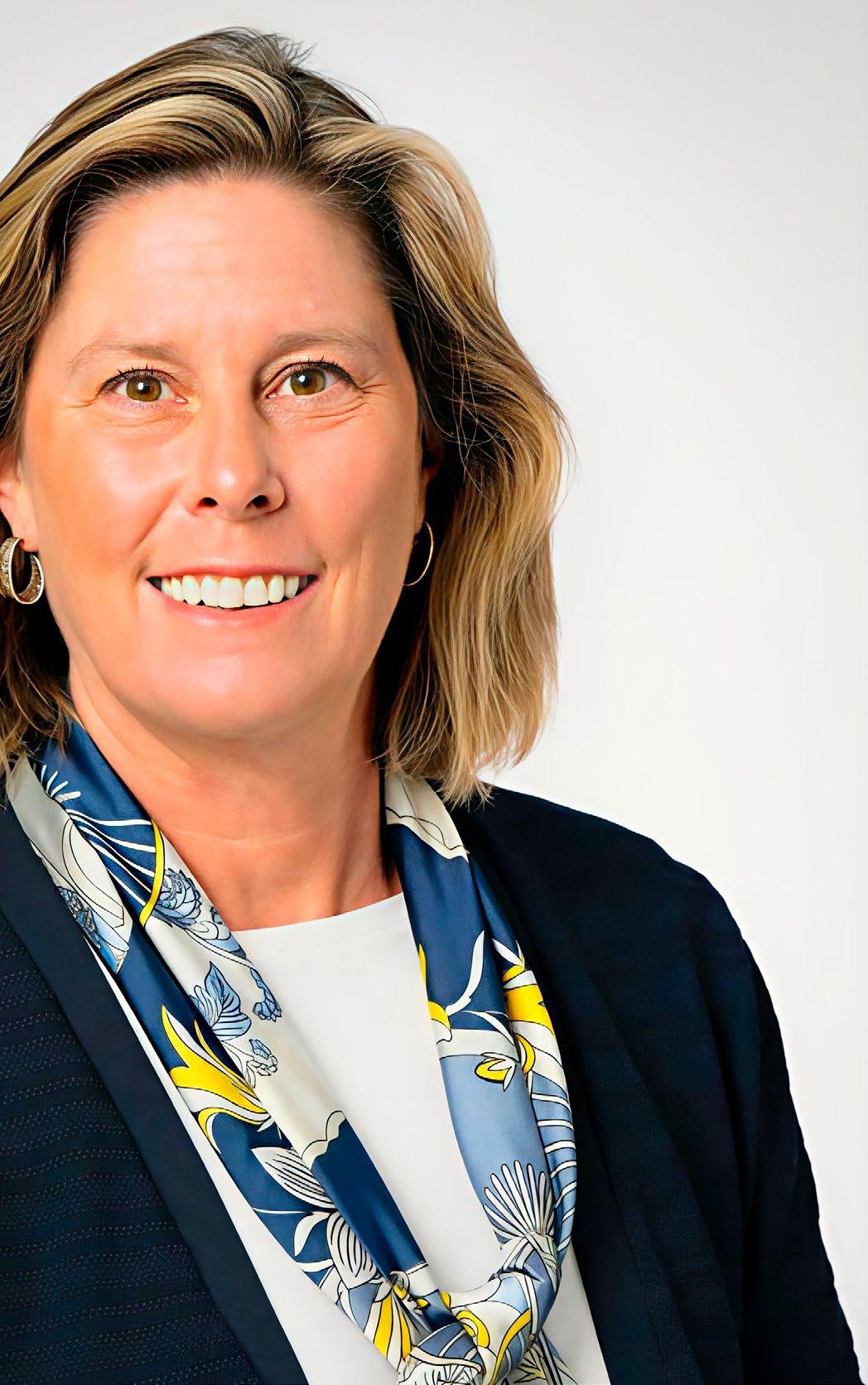
nopoly, economic regulation must drive operational and performance efficiency; cost-reflective, affordable tariffs; transparent governance and reporting; and service quality standards that deliver social equity, health, environmental benefits and climate resilience.
2. The importance of a tariff regime that enables utilities to achieve full cost recovery for operations, maintenance, and capital expenses while ensuring equity and affordability for vulnerable populations. Community and other stakeholder participation in understanding and setting tariffs builds trust and increases willingness to pay for services that people want and can afford.
3. A requirement that utilities be creditworthy as a prerequisite for receiving financing. This means the utility must be financially viable and sustainable, operate efficiently and transparently within the regulatory environment, meet customer demand, and fulfil current and longterm financial obligations. Creditworthiness assessments are useful to evaluate a utility's financial health and identify operational, financial, and governance weaknesses that can be addressed. I call this approach “fix the leaks before adding new water.” Kenya's Creditworthiness Index has led to increased accountability and access to commercial lending for forty utilities.
4. Technical assistance is critical for utility performance and creditworthiness.
"Utilities can best position themselves to access external financing by achieving creditworthiness, operational efficiency and realistic planning"
"Utilities should focus on quick-win, practical investments, like leak reduction, solar adoption, and maximising connection rates in service areas" JENNIFER
Many utilities experience significant staff turnover. Yet as technology and innovation develop rapidly, opportunities emerge for utilities in developing countries to leapfrog into the digital era, adopting advances in remote sensing, AI, water treatment technologies and nature-based solutions. Capacity building can help utilities improve creditworthiness.
5. Customer demand should inform service planning. Assumptions are often made that households will immediately connect to improved services. However, unserved households typically secure alternative provision methods (e.g., wells, public standposts, tanker trucks, onsite sanitation) and will only connect if the new service offers better quality, reliability, and affordability. Connections to sanitation often need to be mandated due to the increased costs and public good nature of offsite sanitation. As income increases, so does the demand for a higher level of service. Recent World Bank projects in Africa and Asia are expanding service from public standposts to household connections. Importantly, willingness to pay for reliable and improved services far exceeds what many politicians acknowledge.
With an estimated $6.7 trillion needed for water infrastructure by 2030, what mix of public, private, and blended finance is essential, and how can utilities position themselves to access it?
A substantial financing gap exists between the World Bank's estimate of $6.7 trillion needed to deliver services across water sectors by 2030 and the $165 billion in annual investment currently made in developing countries. Considering that developing countries account for 84% of the global population and that over 90% of annual water spending comes from the public sector, substantial scope exists to increase private sector financing from its current 2% share. With an annual investment of $20 billion by multilateral development banks (MDBs) in 2024, while catalytic — particularly to support sector reform — it represents only a drop in the bucket of total investment needs. Utilities can best position themselves to access external financing by achieving creditworthiness, operational efficiency, and realistic short- and long-term planning, supported by a credible national regulatory environment. Investment prioritisation and domestic resources mobilisation are good first steps. Utilities should focus on quick-win, practical investments, like leak reduction, solar adoption, and maximising connection rates in service areas. Additionally, with tariffs paid in local currency, mobilising domestic resources allows utilities to mitigate foreign exchange risks. Beyond user fees and tariffs, utilities can access domestic capital markets and leverage government-backed bonds. The Tanga Water Utility in Tanzania recently issued an oversubscribed green bond to finance major water infrastructure expansion, raising capital from domestic investors, including pension funds, insurance companies, and local financial institutions.
Blended finance instruments — hybrid models combining public and private capital — are part of the MDB reform process, with external grant and concessional finance being used to leverage private capital. By reducing perceived risk through partial guarantees or concessional first-loss capital, MDB financing enables utilities to access larger
private investments. This bridge financing often matters more than the capital amount provided.
Blended finance instruments extend beyond traditional PPPs and concessions to include green bonds, impact investments, ring-fenced bulk infrastructure investments, results-based financing, and risk-sharing facilities. The AS Samra wastewater treatment plant in Jordan has a blended financing package consisting of grants, government funding, equity investments, private commercial debt, and a non-commercial risk guarantee (provided by the Multilateral Investment Guarantee Agency - MIGA).
As climate change intensifies water risks, how can resilience be better integrated into investment planning, and how can utilities use the strong economic case for resilience to mobilise financing?
Climate change increases water risks stemming from increased water variability (“too much or too little water”) due to droughts and floods, and rising temperatures, degraded water quality, and saline intrusion from sea level rise (“water too polluted”). Small island states, coastal zones, regions with water scarcity, and populations living in major river deltas are particularly exposed.
Utilities can enhance resilience through proven adaptation strategies. The recent “day zero” experiences in São Paulo and Cape Town reinforce the need for utilities to operate with optimal efficiency and a relentless focus on demand-side management and community engagement, as a precursor to investing in supply-side expansion. Important cost-effective strategies include investing in leak detection and water conservation, integrating climate risk modelling into planning, adopting early warning systems and drought and flood contingency plans, energy management and backup power systems, and applying economic tools to reward reduced consumption.


Supply expansion solutions typically require significant incremental costs, and can include infrastructure investments in water source diversification across watersheds, circular economy approaches, desalination and wastewater reuse, expanded storage and aquifer recharge, leak reduction, and elevating critical equipment above flood levels. Nature-based solutions like watershed protection and wetland restoration also provide yearround dual benefits of adaptation and mitigation.
Resilience investments in utilities offer high returns and reduce economic risk. The World Resources Institute analysed 320 projects and found an average of 27% returns over ten years, with over 50% of benefits occurring even without climate disasters, simply through improved efficiency. The World Bank notes that water supply disruptions can cause substantial economic losses and employment impacts, with water-intensive sectors accounting for 55% of employment in low-income countries. The cost of inaction is devastating: without investment, water disruptions will cost U.S. businesses $250 billion annually by 2039.
However, a challenge for utilities accessing climate finance — such as the UNFCCC Green Climate Fund, development finance, and impact/green investment — is the lack of global standards for quantifying incremental costs to climate-proof water investments.
How can utilities design projects or financing mechanisms that capture both resilience and climate-mitigation benefits, such as through renewable energy integration?
Water investments offer significant opportunities to deliver climate co-benefits by combining adaptation (adjusting to climate change impacts) and mitigation (reducing greenhouse gas emissions). Beyond the adaptation benefits mentioned above, mitigation benefits arise from improving utility efficiency across munici-
pal water provision and water-intensive energy, agriculture, and industrial sectors; from using wastewater as a resource and reducing methane emissions; and from switching from thermal to renewable energy.
The World Bank and other MDBs have committed to aligning their investment portfolio to the 2015 Paris Agreement, and as such require project proponents to show that their proposed investments will deliver development impact while supporting the transition to a low-carbon economy and building adaptive capacity. Having utilities strategically design projects that deliver both climate resilience and greenhouse gas emissions reductions can unlock multiple financing sources.
The World Bank supports water and wastewater projects with significant climate co-benefits, with notable examples of investments in water efficiency, flood management, resource recovery, and nature-based solutions. The Vinh City Flood Resilience Project in Vietnam funded a new stormwater storage lake and converted vacant land into green public spaces, which help the city cope with severe rainfall events and reduce flooding. At the same time, the improved stormwater and waste management reduced the pollution load in the water entering the treatment plant, thereby reducing its energy consumption. A performance-based contract with the Yerevan (Armenia) water utility led to the rehabilitation of pumping stations, providing cost savings, reducing energy use and greenhouse gas emissions. The improved operational performance of the utility built resilience against future cost increases and service disruptions.
Investments in treating wastewater yield some of the highest co-benefit returns and are especially important for reducing methane emissions, a greenhouse gas 80 times more potent than carbon dioxide. Not only does untreated wastewater generate a GHG footprint roughly
"Blended finance instruments extend beyond traditional PPPs and concessions to include green bonds, impact investments, and results-based financing"
three times higher than treated wastewater, wastewater contains significant amounts of untapped energy and valuable resources. This includes capturing biogas from anaerobic digestion of organic waste and its reuse as a renewable energy source to power the facility. Nutrients can also be recovered and converted to fertiliser. Treated wastewater can be reused, thereby reducing the demand for energy-intensive desalination or extraction of new freshwater supplies and simultaneously building resilience.
In terms of nature-based solutions, a World Bank-supported Coastal Resilience Project in Indonesia funded the rehabilitation of mangrove ecosystems. Mangroves are effective “blue carbon” sinks, absorbing and storing atmospheric carbon naturally and also act as natural buffers, protecting communities from coastal flooding and storm surges caused by climate change. Opportunities are now being explored to mobilise carbon credits for the carbon sequestration provided by the mangroves.
Equipping and converting utilities to renewable energy provides direct mitigation benefits. Solar-powered water pumps provide reliable water access during droughts while eliminating fos-
"The cost of inaction is devastating: without investment, water disruptions will cost U.S. businesses $250 billion annually by 2039"

sil fuel use. The World Bank found that closing irrigation gaps with solar pumps could benefit 98 million Africans while avoiding 410 million tonnes of CO₂ annually, adopting systems such as SunCulture in Kenya and Uganda's PUMPUP project. Ethiopia's $50 million Green Climate Fund project is deploy-
"The recent 'day zero' experiences in São Paulo and Cape Town reinforce the need for utilities to operate with optimal efficiency"
ing solar pumps across drought-vulnerable regions, demonstrating how climate finance flows to projects with clear dual benefits.
After decades of service, what gives you the most hope about the future of water and climate action?
As world leaders gather at COP30 in Belém, Brazil, I have renewed optimism that water will receive its long-overdue recognition in the climate space, with the realisation by political leadership that water and climate change are inextricably linked.
Throughout my career, as I worked directly with countries, utilities and communities across the developing world to
support sector reform, build capacity, develop and finance sustainable and resilient projects while enabling the flow of knowledge and best practice across countries, the global water community tirelessly sought political visibility. In 2010, the UN General Assembly declared that water and sanitation are a fundamental human right. In 2016, the High Level Panel on Water, comprising 11 Heads of State, urged the global community to “rethink how we understand, value and manage water as a precious resource”, while the Bellagio Principles established core values for water management. The UN 2023 Water Conference, inspired by the Dushanbe Water Process, generated unprecedented

"Mangroves are effective 'blue carbon' sinks, absorbing and storing atmospheric carbon naturally and also act as natural buffers"
political momentum. Most recently, the Global Commission on the Economics of Water reframed water as a global common good, calling for revolutionary food systems, habitat conservation, circular water economies, clean energy with lower water intensity, and universal access to safe water by 2030. It recognised the importance of partnerships, finance, data and global water governance to catalyse action.
In parallel, climate negotiations increasingly recognise water's central role. While explicitly featured in the 2015 Paris Agreement, water has become embedded in Nationally Determined Contributions and National Adaptation Plans across energy, agriculture, sanitation, and ecosystems. At COP29, the Baku Declaration on Water for Climate Action was launched.
I am hopeful that COP30 will result in accelerated water-climate integration. The benefits of joint water-climate action span human, economic, and planetary dimensions. Critically, joint water-climate action advances equity and justice. Vulnerable populations — women, children, Indigenous communities, and those in water-scarce regions — experience disproportionate climate-water impacts.
Urgent action remains needed to achieve water and sanitation goals and climate security. There is a moral imperative to ensure 2.2 billion people have access to safe drinking water and 3.4 billion people to improved sanitation, as we manage the impacts of “Too Much, Too Little and Too Polluted Water” across the world. Without water security, neither the Paris Agreement goals nor the Sustainable Development Goals can be achieved.

EXECUTIVE DIRECTOR, THE WATEREUSE ASSOCIATION
When I completed my service as Acting Administrator for the U.S. Environmental Protection Agency’s (EPA) Office of Water in January, I had the opportunity to take a step back and consider where I could make the most impact in advancing water sustainability.
First, I took a vacation! Then, I accepted the role of Executive Director of the WateReuse Association. Why? Because water is too precious to use just once. During my time at EPA, I helped steer the National Water Reuse Action Plan – and came to understand how essential water recycling technologies and strategies will be to our planet’s future.
WateReuse Association is the nation’s only trade association solely dedicated to advancing laws, policy, funding, and public acceptance of recycled water. Our work is driven by a coalition of utilities that recycle water, businesses that support the development of recycled water projects, and consumers of recycled water. I’m proud to support the work of this coalition by focusing on three key strategies: engaging, educating, and advocating.
WateReuse engages leaders from across the public and private sectors and leverages their expertise to ensure the continued provision of safe and clean water for industry and citizens. I have been amazed by our members’ innovative and collaborative spirit – always ready to share their findings with others. I’m also in awe of how quickly new regions are taking an interest in these solutions. At a recent meeting in my traditionally water-rich home state of Indiana, I was surprised to hear water reuse being discussed as an important next step in the effort to meet the water demands of data centres. Knowledge-sharing and new technologies are leading to a water reuse revolution that will support industrial onshoring, improve climate resilience, and protect aquatic ecosystems. WateReuse Association is also engaging beyond the United States, as exemplified by our ongoing Global Dialogue on Water Reuse with the International Desalination and Reuse Association.
Education is key to training the industry workforce and to building public trust in water reuse. That’s why our staff and members are hard at work organising the world’s largest and
most comprehensive water reuse learning opportunity: our WateReuse Symposium in Los Angeles, March 8-11, 2026. The Symposium will include a summit of water reuse regulators from across the United States and beyond, to help align and improve the regional rules that govern reuse. We’re also working with educators to run a workshop at local high schools in advance of the Symposium, fostering future water professionals by bringing students to speak in front of industry experts. And of course, we’ll host six concurrent tracks of the most cutting-edge technical water reuse content.
Advocacy with government decision-makers is probably the most important piece of this puzzle. At a time when our leaders are looking for viable, cost-effective, and shovel-ready solutions, we will advocate for water reuse because it’s a winner. I plan to
"Knowledge-sharing and new tech are leading to a water reuse revolution that will support industrial onshoring and improve resilience"
build on my existing relationships and understanding of United States policymaking to secure more federal funding and support for water recycling projects. Because regulation of water reuse in the U.S. takes place primarily at the state level, I also look forward to maximising the impact of our State Regulatory Guidebook, currently in development. This resource will help more states adopt safe and workable regulations to unleash the benefits of water reuse, and the guidance can also help nations and provinces worldwide in their own rulemaking processes.
Water reuse is going to be one of the most impactful tools in our global effort to protect precious water supplies, react to a changing climate, and provide clean and safe water for the next century. I hope you’ll join the WateReuse Association to help make this future a reality.
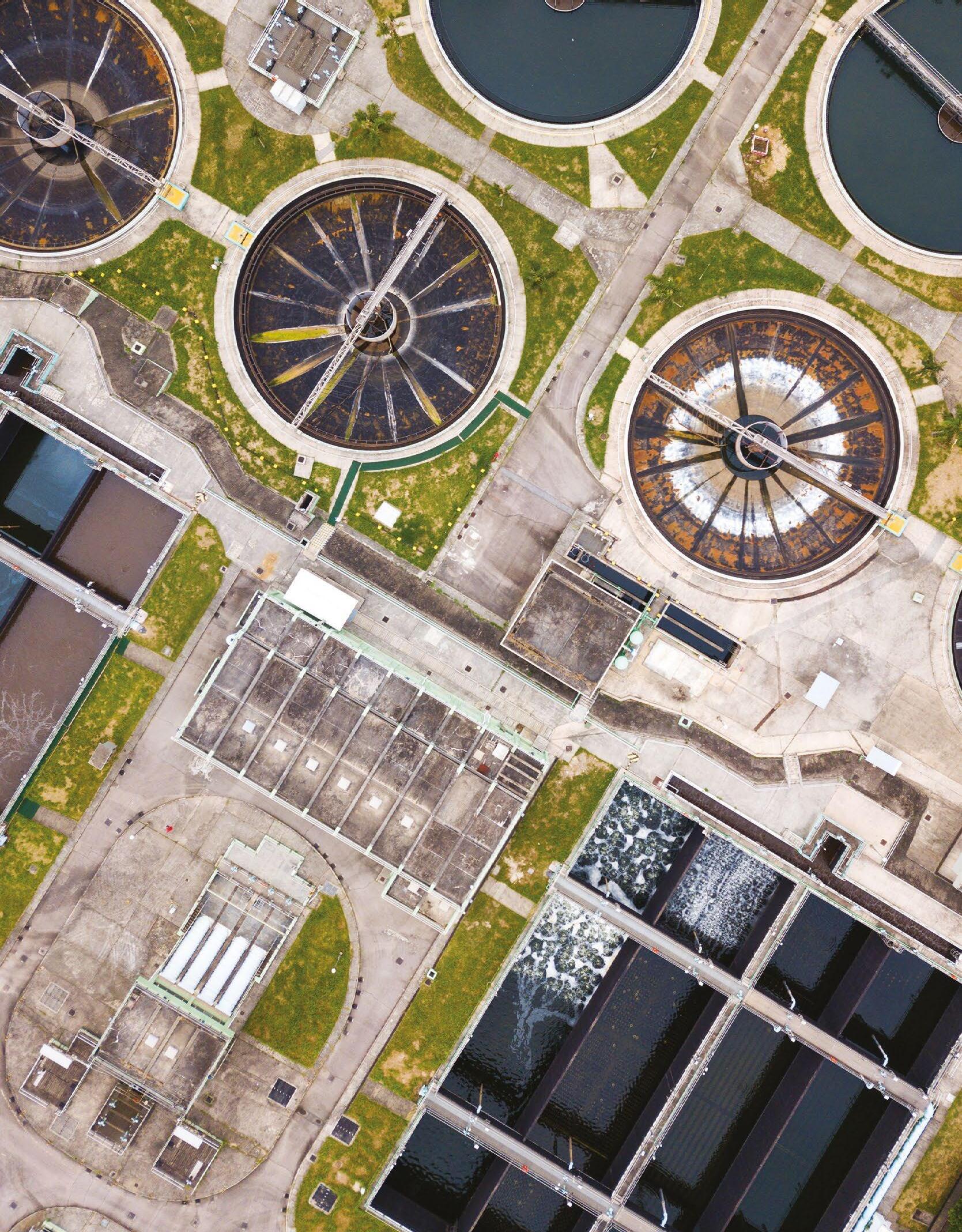
Public-private partnerships are reshaping how water services are delivered worldwide. By combining public vision with private innovation, companies like ACCIONA are helping build more resilient, efficient, and sustainable water utilities that ensure access to clean water while advancing global sustainable development.
Public-private partnerships: a key alliance for a more sustainable future
In a world moving steadily toward the energy transition, where water resources are becoming scarcer, cities continue to grow, and the demand for sustainable infrastructure rises, collaboration between the public and private sectors has become essential. These partnerships are now key to modernising public services, especially in areas such as water, energy, and waste management, and to accelerating their international development.
They bring together the best of both sectors: the investment capacity, technology, and management efficiency of private
In sectors such as water, PPPs foster innovation, digitalisation, and greater efficiency while ensuring economic and environmental sustainability
companies combined with the public sector’s vision, planning, and commitment to guaranteeing essential services. This synergy allows for the development of complex projects from a technical, financial, and social perspective.
However, PPPs are not just a way to finance projects. They are also a powerful tool to transform the way infrastructure systems operate. In sectors such as water and sanitation, these partnerships foster innovation, digitalisation, and greater efficiency while ensuring economic and environmental sustainability.
Companies such as ACCIONA, with extensive experience in infrastructure and essential services, have made this model the cornerstone of their international growth. It has also become a key means of supporting countries in their transition toward more sustainable and resilient economies.
A new model for utilities Utilities, the companies responsible for services such as water supply, sanitation,

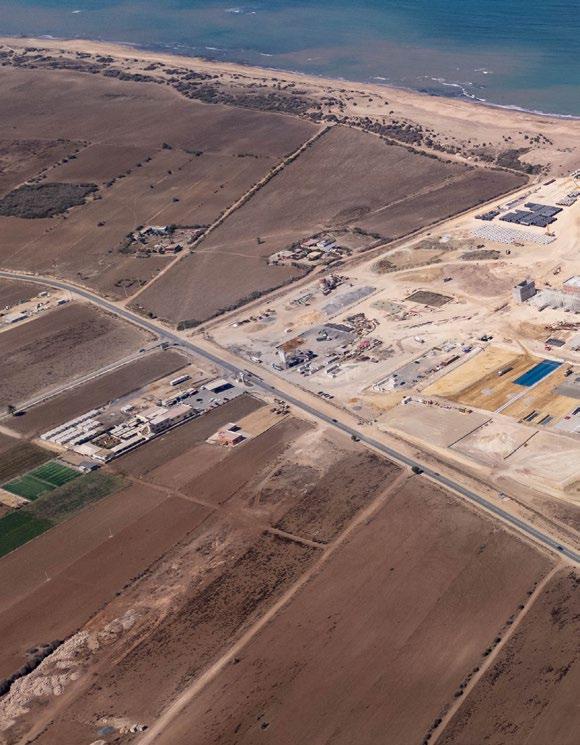
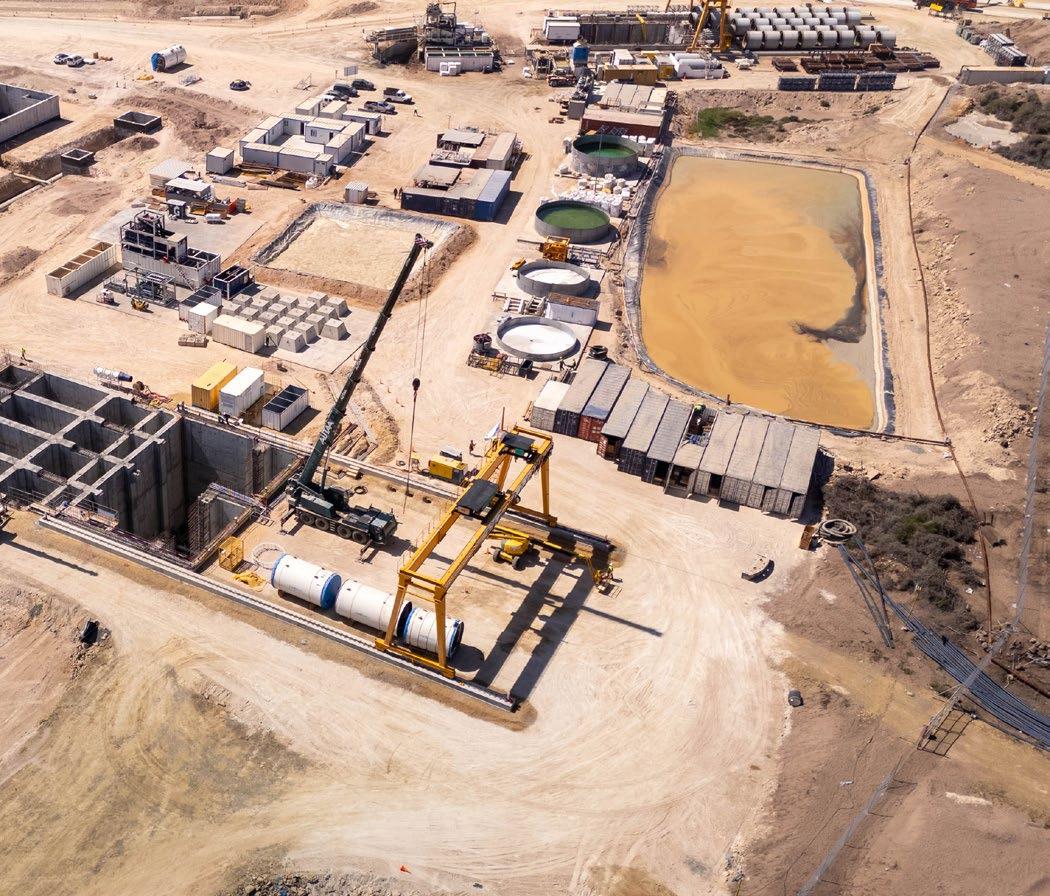
energy, and waste management, are undergoing a profound transformation. Traditionally, they focused on operations and maintenance, but today they must evolve toward integrated, digital, and sustainable models that can adapt to resource scarcity and global uncertainty.
In this context, PPPs play a crucial role. Through these frameworks, essential infrastructure has been developed under agreements that provide long-term stability, enable technology transfer, and allow for more efficient risk management.
They also facilitate the introduction of innovations that the public sector alone would take much longer to implement due to budgetary or regulatory constraints. These include remote monitoring systems, the use of artificial intelligence to optimise processes, and new digital tools that improve customer service and efficiency.
By promoting collaboration between sectors, PPPs strengthen operational performance and help create utilities that are more resilient, adaptable, and better prepared for environmental and social challenges.

PPPs are not just a way to finance projects; they are also a powerful tool to transform the way infrastructure systems operate
ACCIONA: innovation and sustainability on a global scale
ACCIONA has been a pioneer in implementing this model, combining sustainability, technological innovation, and public-private collaboration in more than 40 countries. The company’s philosophy is clear: there can be no sustainable development without sustainable infrastructure.
Through PPPs, ACCIONA has expanded internationally while maintaining a focus on efficiency, social impact, and environmental protection. Each project adapts to local needs while maintaining a common foundation of responsible resource management and long-term sustainability.
Projects in countries such as Saudi Arabia, Morocco, Brazil, and Costa Rica demonstrate how this approach supports
both immediate infrastructure needs and broader sustainability goals.
Saudi Arabia: water self-sufficiency as a goal
Under Saudi Vision 2030, which seeks to diversify the national economy and strengthen water and energy security, ACCIONA has developed major projects under PPP models. One of the most notable is the Shuqaiq 3 desalination plant, among the largest in the country, using reverse osmosis technology.
Developed in partnership with the Saudi Water Partnership Company (SWPC), Shuqaiq 3 supplies drinking water to more than three million people and incorporates the highest standards of energy efficiency and environmental performance. The plant integrates advanced technology to reduce energy consumption and minimise environmental impact, contributing to the country’s longterm goal of water self-sufficiency.
Beyond its technical scope, Shuqaiq 3 has become a regional reference for successful public-private collaboration. It has created local employment, promoted knowledge transfer, and strengthened institutional capacity for managing largescale infrastructure.
Morocco: strengthening resilience against water stress
With rapid population growth and increasing vulnerability to drought, Morocco has made water system reinforcement a national priority. The government has relied on PPPs to speed up this process and ensure long-term water security.
PPPs bring together
the
best of both sectors: investment capacity, technology of private companies, combined with the public sector’s vision
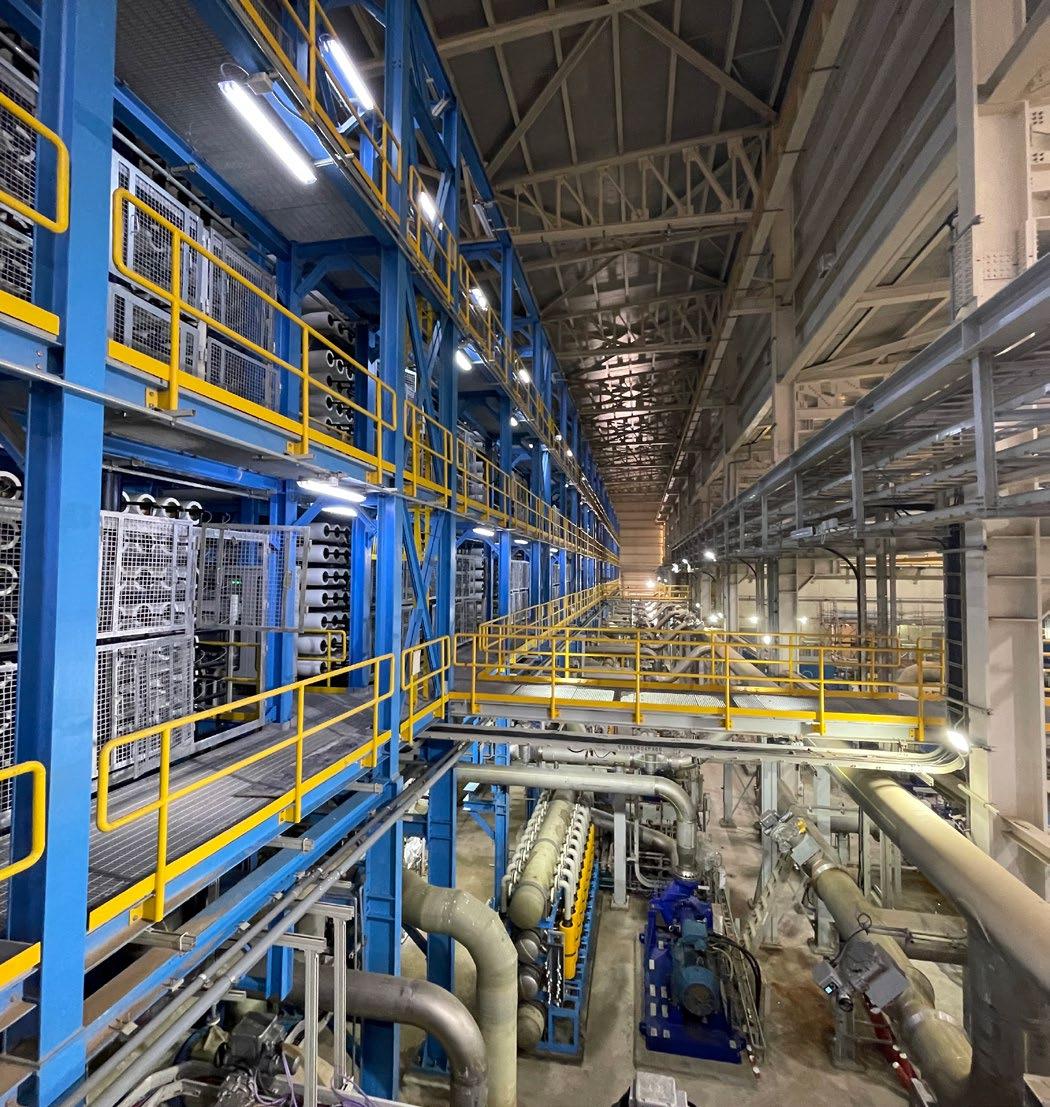
Among the projects led by ACCIONA, the Casablanca Desalination Plant stands out as one of the largest in the world, with a capacity of 822,000 cubic metres per day. Located in Sidi Rahal, in the Greater Casablanca region, it is the first plant in a national program to build desalination facilities across the country. The project will help meet growing demand for water in domestic, agricultural, and industrial uses, and will contribute directly to Sustainable Development Goal (SDG) 6: Clean Water and Sanitation.
By reducing dependence on overexploited aquifers and ensuring a stable
water supply, the Casablanca project will significantly improve Morocco’s resilience to water stress. Its design prioritises energy efficiency and environmental protection, reflecting the country’s commitment to sustainable growth.
Brazil: innovation in water and sanitation management
In Latin America, Brazil has become one of the most dynamic markets for PPPs in the water and sanitation sector. The country’s large population, growing urban centres, and need to modernise infrastructure have encouraged collaboration between public authorities and

private operators as a way to expand and improve essential services.
In this context, ACCIONA plays an important role through its participation in projects in the states of Paraná and Espírito Santo, where it manages sanitation networks in a total of 56 municipalities under public-private collaboration schemes. These projects are helping to strengthen local infrastructure and improve the efficiency of water and wastewater services.
The results are clear and measurable: higher operational efficiency, better service quality, and steady progress toward Sustainable Development Goal (SDG) 6, which promotes access to safe water
and sanitation for all. Through these initiatives, thousands of people now have access to improved sanitation services, contributing directly to a higher quality of life in the communities served.
More than a financial mechanism, PPPs are a structural tool for strengthening the resilience of essential public services. By sharing risks and responsibilities, they guarantee the continuity of operations even in times of crisis or uncertainty. They also help ensure more efficient use of public funds, encourage techno-
logical innovation, and promote transparency in management. For private companies, PPPs provide stable, longterm frameworks that make investment in emerging markets viable and secure.
ACCIONA’s experience shows that this model can transform the way water, energy, and urban services are managed. By aligning public objectives with private expertise and innovation, PPPs support the creation of utilities that are more sustainable, digital, and inclusive. The utilities of the future will be collaborative, data-driven, and environmentally responsible, and PPPs will remain one of the main engines behind this evolution.
Public-private partnerships have become far more than a cooperation model. They are a strategic instrument for transforming public services and building a sustainable future. Examples such as those in Saudi Arabia, Morocco, and Brazil show that this collaboration can enhance efficiency, resilience, and equity in access to vital resources.
For ACCIONA, every project carried out under a PPP scheme represents an opportunity to generate progress, social well-being, and environmental balance. Each initiative contributes to global sustainability goals while addressing local challenges with long-term, innovative solutions.
Ultimately, PPPs do more than connect the public and private sectors. They link innovation with purpose, investment with impact, and communities with opportunity. They are a bridge to a greener, more resilient, and more equitable future for all.
ACCIONA, with extensive experience in infrastructure and essential services, has made this model the cornerstone of its international growth
“At EPAL, successful projects are those embraced by all employees, where engagement across departments adds value”
Portugal’s EPAL (Empresa Portuguesa das Águas Livres) has long been recognised as a pioneer in urban water management, combining innovation, sustainability, and digital transformation to ensure a reliable and resilient water supply for millions. From cutting water losses in Lisbon to developing advanced digital tools like WONE® and AQUAmatrix, EPAL has become a benchmark for efficiency and technological excellence in the global water sector.
As cities face mounting challenges from climate change, ageing infrastructure, and rising demand, Portugal’s EPAL (Empresa Portuguesa das Águas Livres) stands out as a leader in innovation and sustainability. In this interview, Nuno Medeiros, Head of Asset Management at EPAL, reflects on the company’s journey of modernisation and innovation. Medeiros discusses how science, data, and a strong sense of public mission continue to shape EPAL’s approach to asset management, drought resilience, and carbon neutrality, positioning the utility at the forefront of sustainable water management in Europe.
What first inspired your career in water utility management, and what path led you to your current leadership role at EPAL?
"Reducing non-revenue water at EPAL was a major success from 2004 to the present, and it continues to define EPAL’s excellence"
Water represents life, health, and ecosystem sustainability! Working in a sector where water is the core resource means embracing the mission of protecting life, public health, and environmental sustainability. What better inspiration could I have?
My interest in life sciences began with my academic background in biology. EPAL was already a leading company in Portugal and internationally, so joining the water sector through a growing, innovative, and structured company that offered access to knowledge and skill development was an unmissable opportunity. That’s how I began my professional career in the water utilities world. Ensuring fast and accurate information about water quality was a fantastic goal. I studied life sciences to work with one of the most vital resources for life – water. Truly, water is life.
But opportunities to gain a broader view of a water utility emerged – it was the late 1990s, and the water sector in Portugal was undergoing a major transformation in governance, with the creation of the Águas de Portugal Group, which EPAL joined, to manage the significant infrastructure investments needed in bulk systems.
With an MBA, I moved into Customer Management, joining a fantastic
team, and taking on a broader mission –delivering quality and quantity of service to customers and optimising customer relations. From commercial operations to managing EPAL’s distribution network was a quick step, and leading operational teams 24/7 was one of the most rewarding experiences I’ve had, bringing me closer to one of the company’s core functions – system operations.
Now leading Asset Management, I’m fortunate to have a transversal understanding of EPAL and its operational areas, the need to ensure service quality, and the imperative for the company to be economically, socially, and environmentally sustainable. Leading this area is an extraordinary challenge, as we bridge operational teams and the board, striving for efficiency while maintaining the value of EPAL’s assets.
Contributing our best is a duty for any professional, but in this sector, it’s even more critical – we deal with a scarce and essential resource… water… life.
EPAL’s WONE program famously cut water losses in Lisbon from around 23% to under 9% within a decade. How has EPAL built on this success to further improve network efficiency and resilience?

"WONE®, AQUAmatrix, and risk-based Asset Management, complemented by strategic top-level management, are pillars of EPAL’s business success"
Reducing non-revenue water at EPAL was indeed a major success from 2004 to the present, and it continues to define EPAL’s excellence. Achieving extraordinary results that remain a national and international benchmark, the development of WONE® was a key pillar of this success, though not the only one. EPAL has embedded the strategy of water loss reduction across the organisation. In practice, every department contributes daily to reducing losses and non-revenue water, making it a central focus.
WONE® has proven to be much more than a loss-reduction tool. It enables continuous monitoring of the distribution network, assessment of its vulnerabilities, and guidance for optimisation measures. After more than 20 years of development and application of WONE® and the Asset Management System, EPAL is now more efficient and resilient, with its network rehabilitation investment plan based on risk analysis.
"AQUAmatrix, WONE, WattWater, and expertise in Asset and Energy Management act as internal catalysts for the company’s digital transformation"

WONE®, AQUAmatrix, and riskbased Asset Management, complemented by strategic top-level management focused on efficiency, effectiveness, and sustainability, are pillars of EPAL’s business success.
AQUAmatrix, EPAL’s integrated management platform, is now used by many utilities in Portugal and abroad. How does this innovation fit into
EPAL’s broader digital strategy, and what new opportunities has it created through partnerships or licensing? Innovation is part of EPAL’s DNA, and the creation of products and services that drive sector development nationally and internationally is a core mission. AQUAmatrix, WONE, WattWater, and expertise in Asset and Energy Management act as internal catalysts for the company’s digital transformation.

Moreover, with a market seeking water management solutions, integrated platforms gain relevance and deliver optimal results for organisations and users. EPAL’s innovative solutions are tailored to specific areas of utility management, and partnerships with other market players are essential to offer integrated platforms. Additionally, partnerships are crucial to placing our products in new marketplaces, which are vital for growing this business segment.
"After more than 20 years of development and application of WONE® and the Asset Management System, EPAL is now more efficient and resilient"
"Innovation is part of EPAL’s DNA, and the creation of services that drive sector development nationally and internationally is a core mission"
Most importantly, these platforms and the relationships with their users have been highly valuable for EPAL, expanding the user base and optimising processes and outcomes.
In summary, these products have been and continue to be key to optimising the sector, with EPAL actively contributing to that progress.
What infrastructure upgrades or operational measures is EPAL implementing to strengthen drought resilience and maintain water quality?
Climate analysis is a sensitive area for asset management, and the insights it provides are fundamental for implementing measures to enhance the resilience of water supply systems and preserve water quality at the sources. Based on this analysis and in-depth studies, such as the water source stress assessment considering successive droughts over a five-year period, EPAL has implemented measures to create redundancy in current water sources and diversify operational options.
Protecting water source perimeters and studying the impact of climate change on water quality maintenance are also key measures within EPAL’s Water Safety Plan.
Energy use is a key part of water operations. What steps is EPAL taking to reduce its carbon footprint, and are there goals for carbon neutrality?
In 2019, EPAL joined the UN initiative “Business Ambition for 1.5 ºC” and, in
2023, committed to Science-Based Targets aligned with the ambition to limit global temperature rise to 1.5 ºC over the next decade.
The implementation of the Energy Neutrality Program, with an investment exceeding €50 million, is part of the Águas de Portugal Group’s “ZERO Program” and forms the strategic foundation for EPAL’s carbon neutrality goal.
This program aims for energy neutrality by 2030 through two complementary approaches: reducing energy consumption via various energy efficiency measures and, secondly, increasing production of 100% renewable energy through investments in green electricity generation, focusing on wind, hydro, and solar power.
This Energy Neutrality Program will match the goals of reducing energy consumption and extend the lifespan of upgraded infrastructure, lower operating costs, especially electricity purchases and maintenance/replacement expenses, improve the economic and environmental sustainability of water system management, enhance operational quality through digitalised control processes and finally, achieve energy self-sufficiency, reducing dependence on market price fluctuations and national grid failures.
Looking ahead, what emerging technologies is EPAL exploring to enhance asset management and customer service? How is it addressing challenges
"Protecting water source perimeters and studying the impact of climate change are also key measures within EPAL’s Water Safety Plan"

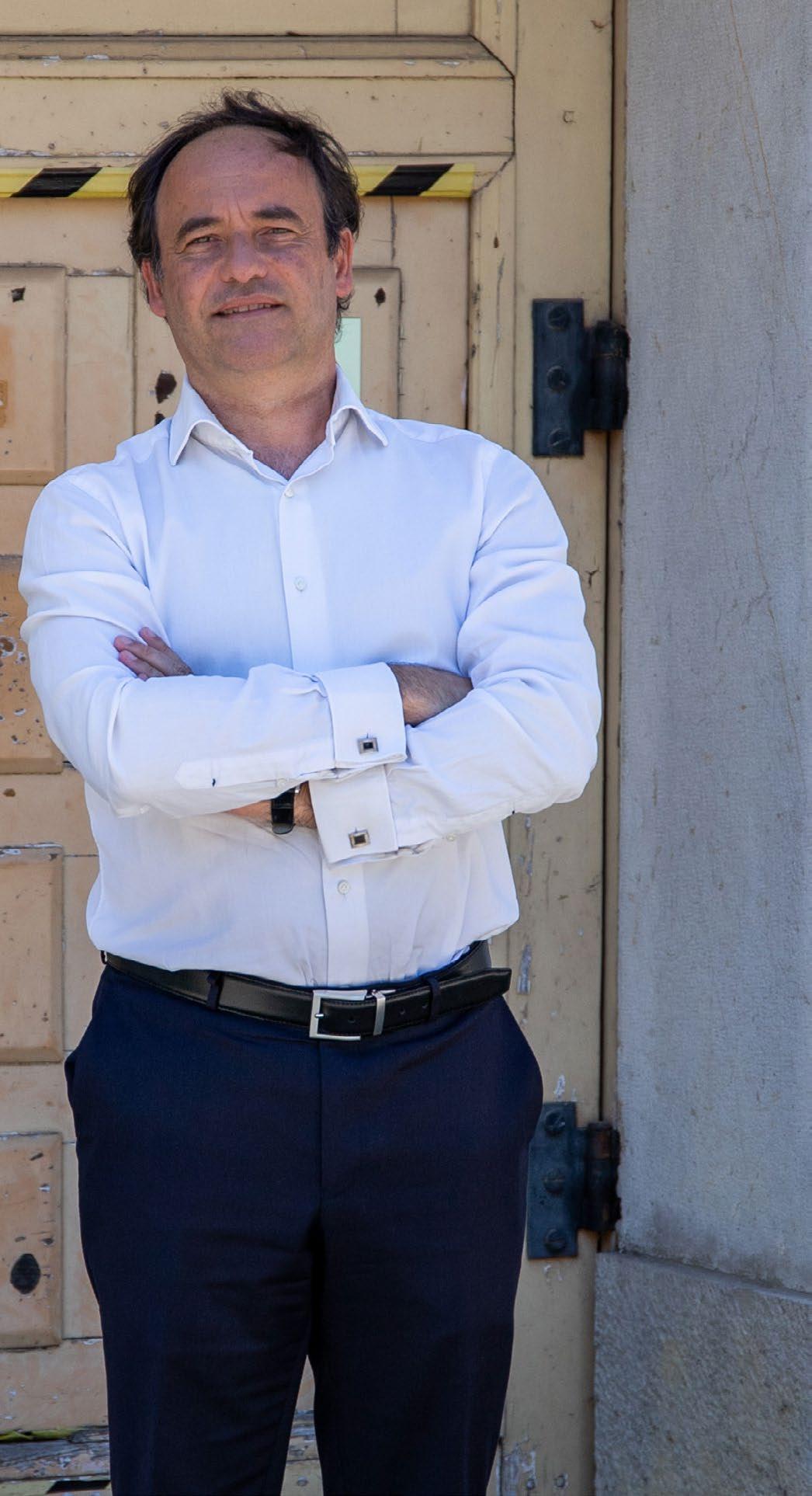
"After more than 20 years of development and application of WONE® and the Asset Management System, EPAL is now more efficient and resilient"
like cybersecurity in its increasingly digital systems?
EPAL is developing a program to incorporate AI across its core areas, aiming to optimise various organisational processes and develop predictive models to improve water system operations, anticipate events, reduce energy and reagent costs, and ensure better service quality for customers.
In asset management, data is the most valuable asset. Sensorization is essential for data collection, and the development of analytical models, digital twins (hydraulic and energy), and machine learning algorithms for functional condition assessment are among the immediate needs. These technologies are already available, but their integration into organisational routines and the ability to leverage their benefits are still evolving.
Finally, what key lessons or best practices from EPAL’s recent projects would you share with other utilities?
At EPAL, we believe successful projects are those embraced by all employees, where engagement across departments adds value. Projects with strong C-level sponsorship, shared goals across teams, and measurable outcomes – regardless of tangibility – are more than halfway to success.
Faced with the growing global water crisis, India is facing the challenge of ensuring a safe, sustainable and high-quality water supply. In this scenario, Oriented PVC (OPVC) is emerging as a key technology in the modernisation of water infrastructure, offering efficient, durable and environmentally friendly solutions. Molecor's TOM® pipes and ecoFITTOM® fittings represent a decisive advance in ensuring water purity from source to final consumption.
India, like much of our planet, is experiencing increasingly frequent and widespread water shortages, with demand for this vital resource continuing to grow, making water supply a priority challenge for public and private institutions. Leaks, network contamination and the degradation of traditional materials pose both an economic and health risk, making it essential to adopt innovative solutions.
In this context, Oriented PVC has become an exceptional ally for water systems thanks to the watertightness it offers. Compared to other materials used in the construction of supply networks, OPVC offers numerous advantages thanks to its superior mechanical and physical properties, including high pressure resistance, greater ductility and a longer service life.
It is not only necessary to transport water but also to maintain its exceptional quality in order to prevent contamination of crops and livestock, and even to protect human health when the network is intended for human consumption.
With the advancement of the sector in the country, Molecor's TOM® Molecularly Orientated Pipes, manufactured in the highest possible Class, 500, are beginning to stand out.
TOM® represents a revolution in the sector with a new limit to the orientation of the material. This means that the performance of these pipes is unbeatable.
Why choose OPVC to maintain water quality?
Unlike other materials, OPVC is a non-toxic, inert material that is immune to corrosion and chemicals found in nature. This is the first example of how, unlike other conventional materials, Oriented PVC can be a perfect solution for maintaining the quality of piped water.
Over time, pipes made from other materials tend to suffer internal degradation and the creation of sediment due to the operation of the network itself. Unlike these materials, OPVC, being a
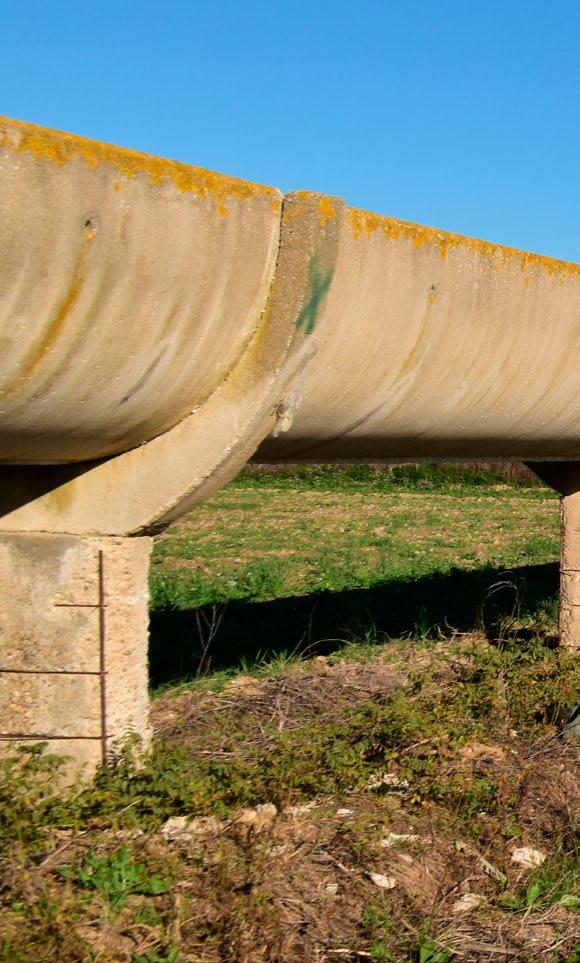


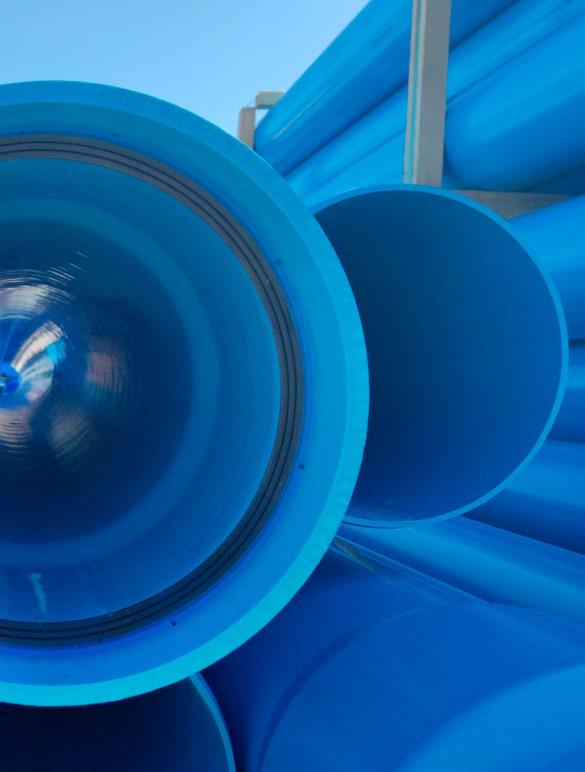
non-degradable material, eliminates the need for special coatings, reducing maintenance costs while maintaining water quality throughout the network.
This unique quality of Oriented PVC is combined with the watertightness offered by TOM® pipes. Besides this, OPVC prevents the filtration of external substances into the network, and what is more, TOM® pipes reinforce the complete isolation of the network with a significant advance in jointing. The secret lies in the joint included in Molecor pipes, which, while facilitating the installation of the piece in the network, prevents possible water leaks and the entry of substances present in groundwater into the network.
Furthermore, the complete compatibility of these pipes with ecoFITTOM®
OPVC fittings, also supplied by Molecor, reinforces the network's watertightness to preserve water quality and extend the benefits of OPVC to the more delicate points, offering greater homogeneity throughout the system.
Furthermore, the use of OPVC contributes to the Sustainable Development Goals (SDGs) by promoting more sustainable infrastructure, reducing energy consumption
The watertightness and compatibility of the TOM® and ecoFITTOM® pipes and fittings guarantee networks without leaks or external contamination
TOM® pipes made from Oriented PVC (OPVC), developed by Molecor, emerge as an advanced and highly efficient solution for modernising agriculture
in transport and minimising environmental impact. Its recyclability and low installation cost make it an ideal solution for urban and rural supply projects.
Molecor's TOM® pipes and ecoFITTOM® fittings are therefore an innovative and efficient solution for maintaining water quality in the supply network, becoming a strategic ally for water conservation and guaranteeing a quality water supply for all.
Upgrading agricultural irrigation: from open canals to buried oriented PVC pipelines
Agriculture remains a key pillar for local economies and food security, making efficient water management more critical than ever. Climate change, growing urbanisation, and the overexploitation of water resources have made the modernisation of irrigation infrastructure an urgent priority. Traditionally, many agricultural areas in India still rely on open canals or ditches, systems that, although effective for generations, show significant limitations in the face of today’s challenges.
The transition to pressurised systems using buried pipelines represents a transformative shift in how irrigational water is distributed.
Solutions to the new needs of the agricultural sector
At a time like the present, when energy efficiency and reducing electricity bills
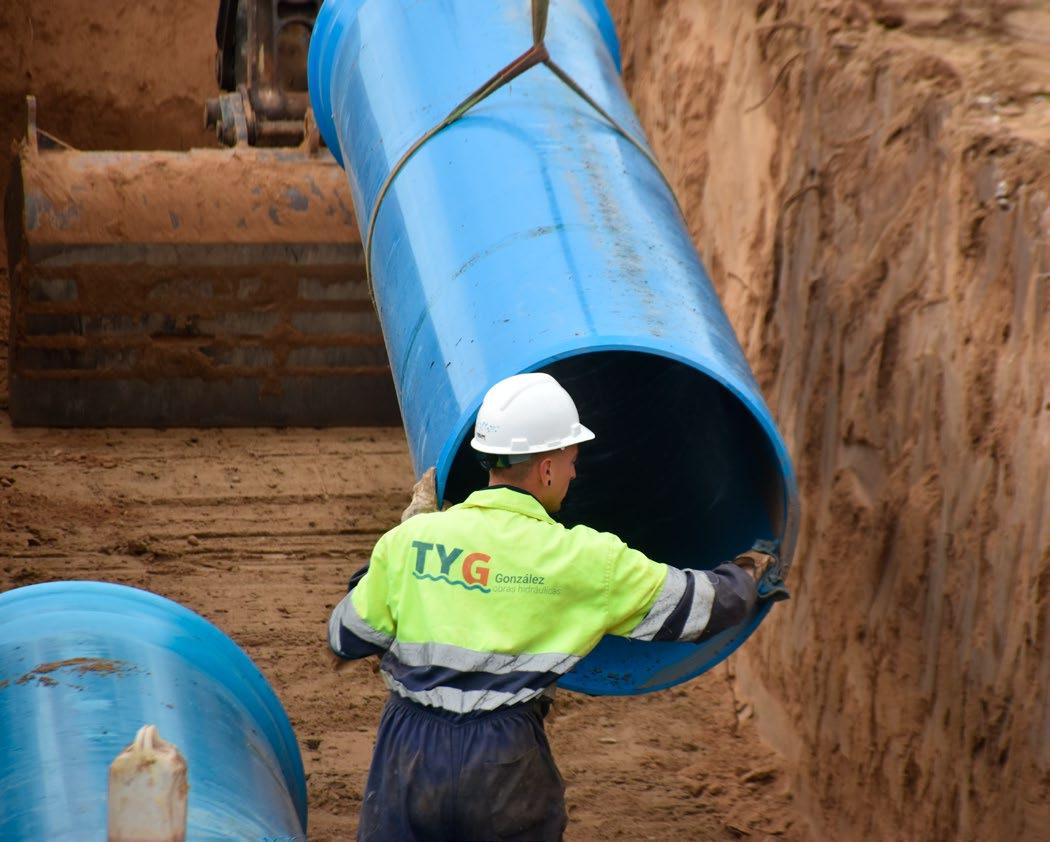
are the main concerns of irrigation communities, suppliers play a fundamental role in their ongoing commitment to offering solutions that improve the performance of irrigation systems and the energy efficiency of facilities.
As a leading supplier of OPVC solutions for water supply, Molecor offers innovative, high-quality systems for irrigation pipelines, providing the market with top-quality products that improve the overall performance of installations, ensure water quality, optimise water transport and respect the environment.
TOM® pipes and ecoFITTOM® fittings made of Oriented PVC (OPVC) are one of the best alternatives on the market for pressurised water irrigation projects, with the aim of managing water resources intelligently. Pipelines are subject to physical, mechanical, chemical and microbiological stresses and strains.
These factors are present both in the soil and in the quality of the water being transported.
The interaction of these factors determines the durability of an installation. Among its advantages are its greater hydraulic capacity, which allows it to transport larger volumes of water; its extraordinary resistance to water hammer, due to the smoothness of its interior walls, which reduces pressure loss during water transport; and the complete watertightness of the OPVC system, which drastically reduces water loss compared to other systems, contributing to the optimisation and reduction of the operating costs of a hydraulic network.
These products are more efficient, sustainable and have a longer service life for pressurised water conveyance, offering significant environmental and installation advantages, as well as high cost efficiency and better technical performance.
Irrigated areas that have modernised their facilities have managed to reduce water consumption by up to 27.7 per cent, which contributes to the sustainability of agricultural activity. This modernisation not only refers to water savings and the efficiency of the facilities, but also to the implementation of new technologies and digitalisation as a guarantee for the future.
For centuries, open ditches have been the conventional method for distributing water in rural farming areas, where gravity could be used to great effect. However, over time, these infrastructures have revealed significant drawbacks under modern agricultural demands. Water losses due to infiltration and evaporation, difficulties in ensuring equal distribution between plots, and high maintenance costs
are just a few of the challenges. Additionally, being exposed to the elements leads to sediment build-up, algae growth, and debris intrusion, ultimately lowering the quality of water reaching the crops.
In response to these issues, many farmers have opted to upgrade their water networks, replacing open canals with buried pipeline systems, among which OPVC stands out as one of the most efficient and sustainable solutions available. This type of pipeline not only drastically reduces water losses by preventing leakage and evaporation but also improves flow and pressure control, allowing for much more precise water resource management.
OPVC pipes offer significant technical advantages. Their mechanical strength and light weight make them easy to install and long-lasting, even in remote or hard-to-reach agricultural areas. Thanks to their extremely smooth interior surface, water flows with less friction, which
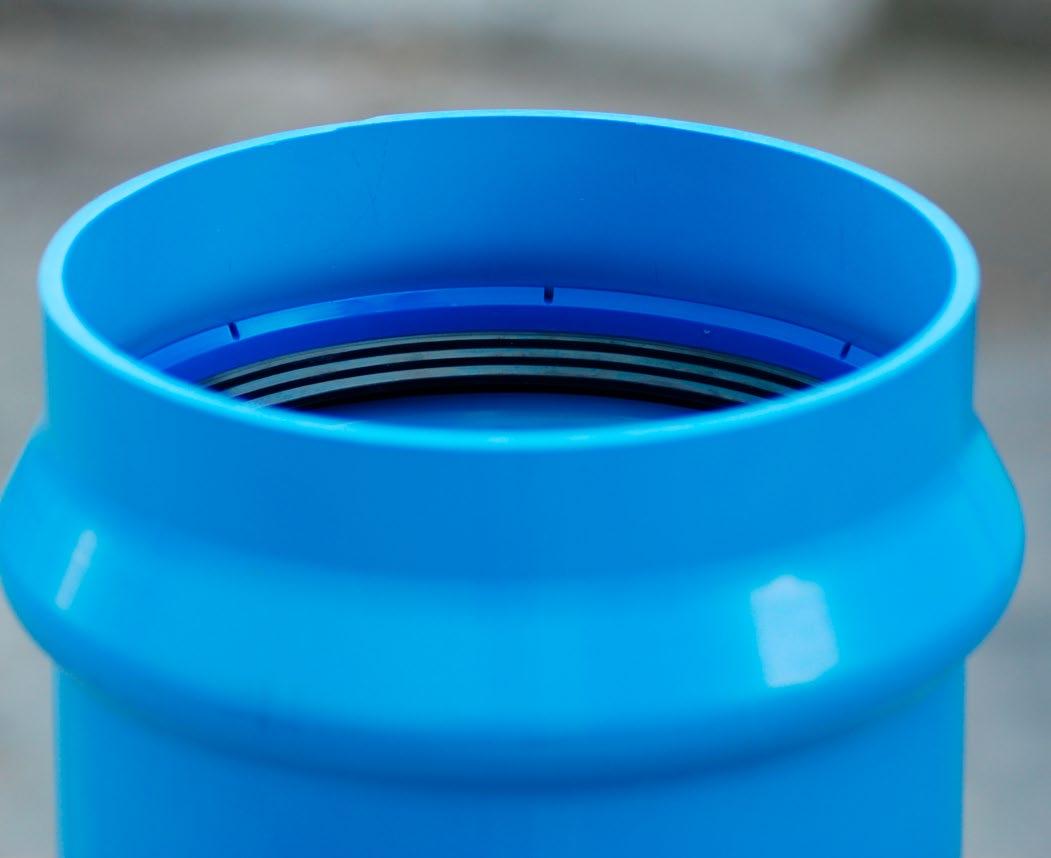
Leaks,
contamination and degradation
of
traditional materials pose an economic and health risk, making it essential to adopt innovative solutions
means less energy is required to move it. Furthermore, their durability and resistance to corrosion ensure a long service life with minimal maintenance.
Among the many options on the market, Molecor sets itself apart through its unique technology, which leads the way in OPVC water transport innovation. Thanks to Molecor’s exclusive air-based molecular orientation system, the company can manufacture Class 500 OPVC pipes with nominal diameters of up to 1200 mm and nominal pressures of up to 25 bar.
Beyond their technical benefits, TOM® pipes are also recognised for their low environmental impact. In addition, Molecor has published an Environmental Product Declaration (EPD), independently verified, which provides objective data confirming the reduced environmental footprint of its pipes throughout their lifecycle.
Compared to other materials used in the supply networks, OPVC offers numerous advantages thanks to its superior mechanical and physical properties
When it comes to ensuring clean, reliable water for a growing region of more than three million residents, Metro Vancouver is looking deep underground. The regional federation unites 21 municipalities, one electoral area, and one treaty First Nation to manage services that transcend local boundaries. It delivers the essentials that keep the region liveable: drinking water, wastewater treatment, solid waste and recycling, regional parks, air quality regulation, and housing programs.
When it comes to ensuring clean, reliable water for a growing region of more than three million residents, Metro Vancouver is looking deep underground. The regional federation unites 21 municipalities, one electoral area, and one treaty First Nation to manage services that transcend local boundaries. It delivers the essentials that keep the region liveable: drinking water, wastewater treatment, solid waste and recycling, regional parks, air quality regulation, and housing programs.
Through this collaborative model, Metro Vancouver provides infrastructure at a regional scale that individual cities could not efficiently achieve on their own. That shared approach is now being put to the
test through one of the most ambitious underground water initiatives in Canada — a network of major water supply tunnels designed to safeguard the region’s lifeline against earthquakes, climate uncertainty, and future population growth.
The initiative is a cornerstone of Metro Vancouver’s long-term resilience strategy, guided by seismic risk modelling and reinforced by lessons from international earthquake events. In a recent interview, Murray Gant, Director of Major Tunnelling Projects, Project Delivery, described how the organisation is building resilience from the bedrock up. “Making sure our regional infrastructure is resilient to earthquakes is a top priority for Metro Vancouver,” Gant said. “It’s critical that our water facilities remain operational following an earthquake and that we design our infrastructure and systems to meet seismic design requirements.”
The current wave of deep-tunnel investment stems directly from Metro Vancouver’s comprehensive review of seismic

hazards across its water network. That assessment identified several marine crossings as both vulnerable and strategically vital for maintaining supply following a major earthquake — notably the Port Mann, Second Narrows, Cambie-Richmond, and Pitt River crossings.
The Port Mann Water Supply Tunnel, completed in 2017, was the first of these deep, resilient crossings. Since then, Metro Vancouver has advanced the Second Narrows Water Supply Tunnel into the final stages of construction, while the Cambie-Richmond and Pitt River tunnels are moving through conceptual and preliminary design.
Beyond those strategic crossings, several other tunnelling projects are underway that will add significant resilience to the regional water system and provide for growth, maintenance, and
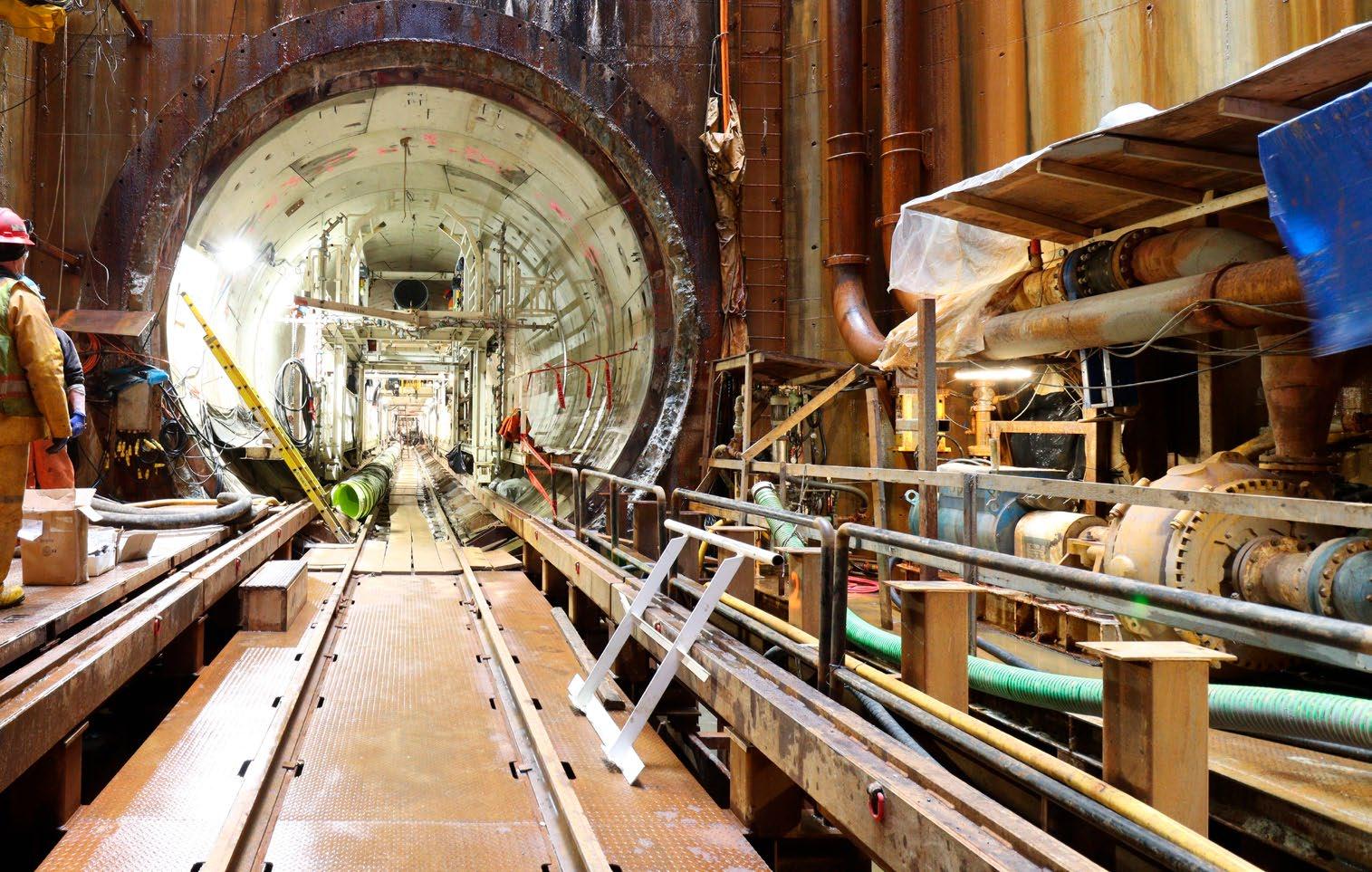
minimise surface impacts. Among them is the Stanley Park Water Supply Tunnel, where construction began in December 2024 and shaft excavation is now starting.
Seismic risk modelling played a defining role in how the tunnel projects were prioritised. As Gant explained, Metro Vancouver has been focusing on improving the resiliency of key crossings to withstand a Maximum Credible Earthquake (MCE) — the most severe earthquake reasonably expected to affect the region. These are precisely the crossings that would be hardest to repair in the aftermath of a disaster, making them a logical focus for early investment. While the costs are significant, Gant emphasised that the stakes are far higher: “The cost of failure — loss of water supply to three million residents during a disaster — is far greater.”
Seismic risk modelling guides project priorities, focusing on critical crossings most vulnerable to earthquake damage yet hardest to repair
The tunnels are designed to last more than a century and to increase overall system capacity, ensuring both resilience and long-term value. Metro Vancouver’s decision-making has also been shaped by international precedents. “Our resilience planning was influenced by earthquake events in New Zealand and Turkey,” Gant said, “which demonstrated the devastating impact of inadequate infrastructure resilience.”
That focus on preparedness extends across the regional system. “It is critical that our entire water system is resilient to seismic risk, and this begins with the water supply dams,” Gant noted. Both supply dams have been seismically upgraded, and a seismic hazard and stability assessment is ongoing. Meanwhile, treatment plants, in-system reservoirs, and nearly 50 pump stations are being
upgraded in sequence based on their age and vulnerability.
A more flexible and redundant network
The tunnels’ deep alignment and robust seismic design standards will fundamentally reshape how Metro Vancouver operates its regional transmission network. Beyond resilience, the projects introduce new operational flexibility, redundancy, and emergency response
Each tunnel adds redundancy and flexibility, allowing water to be rerouted and minimising single points of failure during emergencies
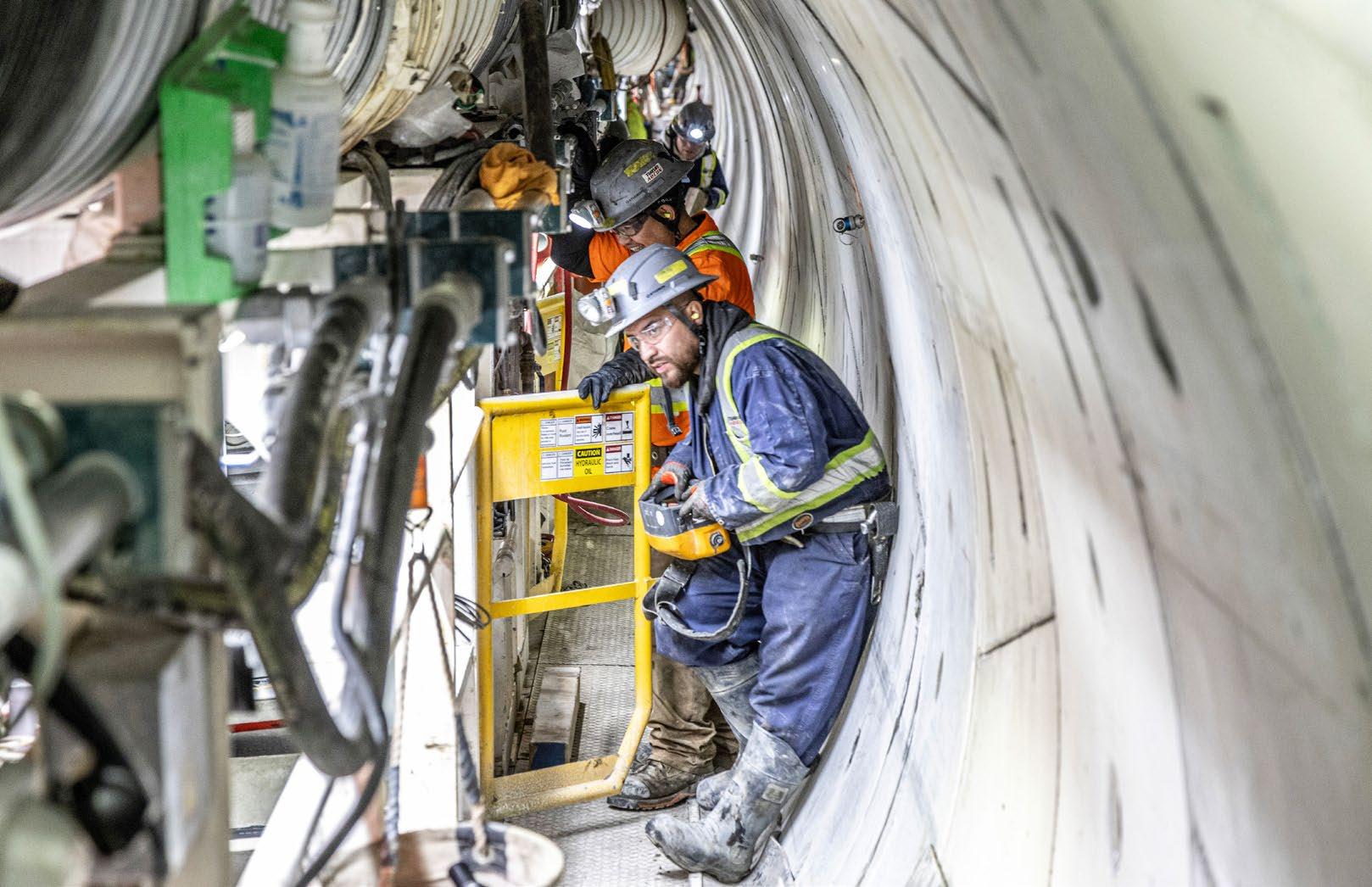
capabilities — essential for both routine operations and crisis management.
“Multiple valve chambers are being constructed at tunnel shaft sites, allowing operators to control and redirect water flows more dynamically,” Gant explained. This means water can be rebalanced across different parts of the region more easily, particularly during maintenance or peak-demand periods.
The tunnels provide additional transmission routes, significantly increasing redundancy. “If one pipeline is compromised, others can maintain service,” Gant said. “The new tunnels ensure backup capability and reduce single points of fail-
Deep alignments through bedrock protect infrastructure from seismic shaking and surface disruption, ensuring tunnels remain operational
ure.” Each tunnel is equipped with valve chambers and backup power systems to further enhance reliability.
Deep underground placement — often in dense, stable soils or bedrock — provides protection against seismic shaking and surface disruption. “These tunnels are engineered to remain operational during and after a major earthquake,” Gant said. “In the event of a rupture or disaster, the system can isolate damaged sections and reroute water through unaffected tunnels.”
Centralized control through new valve chambers will also speed up response coordination in emergencies. Beyond emergency response, the tunnels support population growth and climate resilience. By expanding capacity and integrating seamlessly with existing infrastructure, they ensure the region can continue delivering high-quality drinking water under both normal and extreme conditions — while minimizing surface disruption to communities and the environment during construction.
Financing future-proof infrastructure
With tunnelling projects valued at more than $2 billion, Metro Vancouver has adopted a measured, long-term financial strategy to sustain its investment in resilience without imposing sharp cost increases on residents. “Metro Vancouver is ensuring the financial sustainability of its water supply tunnel program through a combination of long-term financial planning, diversified funding models, and strategic cost management,” Gant said.
A key part of that approach is gradual, predictable rate increases for households, spreading the cost of construction over time and avoiding sudden spikes. The utility has also deferred or reprioritized lower-risk projects to focus resources on critical infrastructure and is exploring provincial and federal grants that align with its resilience objectives, particularly for projects in high-growth or environmentally sensitive areas.

Affordability is supported by strong governance and transparent consultation. Budgets and rate impacts are reviewed annually with member jurisdictions, First Nations, and the public. Metro Vancouver’s long-term planning forecasts reinvestment needs and capital requirements, ensuring financial decisions align with system performance and community expectations.
Metro Vancouver’s governance model also ensures equitable cost-sharing. The organization is governed by a Board of Directors of elected officials from each member jurisdiction. “Water services are funded through regional utility water rates on a cost-recovery basis,” Gant explained. “Development cost charges are
levied on new developments to ensure that growth pays for growth.”
Metro Vancouver’s deep-tunnel program is not only about seismic resilience; it also addresses long-term growth and climate change. The region’s population is projected to rise by more than one million people by 2050, reaching over four million residents. This growth is central to Metro 2050, the region’s comprehensive plan for land use, infrastructure, and environmental resilience.
“The tunnel projects are part of a broader infrastructure upgrade to ensure the continued delivery of high-quality drinking water to a growing popula-
tion,” Gant said. Metro Vancouver’s Water Supply Outlook 2120 study extends that view to the next century, modelling future demand under scenarios of population growth, climate variability, and seismic risk. The study confirms that additional infrastructure, including deep tunnels and expanded access to Coquitlam Lake, will be essential to avoid seasonal shortages by the mid-2030s.
Climate change is already influencing hydrology across the region, with changing snowpack, drought frequency, and water quality challenges. The tunnels form part of Metro Vancouver’s broader adaptation strategy, ensuring that transmission capacity and redundancy remain strong under shifting conditions.
Metro Vancouver’s earlier Port Mann Water Supply Tunnel, completed in 2017, laid the foundation for this next generation of projects. Lessons from that work have guided current and upcoming tunnels, informing design choices, construction methods, and system integration. Each new crossing extends that legacy — part of a deliberate effort to ensure the regional water system can endure and adapt through the next century. “We’ve learned from every project,” Gant reflected. “Each tunnel reinforces the value of deep, resilient infrastructure as the foundation of regional water security.”
As Metro Vancouver looks toward 2050 and beyond, its tunnelling program stands as a model for strategic resilience — ensuring clean, safe water continues to flow for generations to come. More

PROGRAM MANAGER, CDM SMITH
Smart Water Magazine’s June 2025 edition, Reuse is the Future, highlighted global leaders and EU advances in water resilience and circular economy. The growing call for sustainable water use urges us to take tangible action.
As potable water reuse gains more momentum worldwide, investing in pilot facilities becomes a valuable early step in evaluating treatment options. Potable reuse, the advanced treatment of effluent from a water reclamation facility to produce highly purified drinking water, accelerates what nature has done for millennia. In the United States (U.S.), regulations do not always require pilot operations before full-scale facilities are permitted. While pilots can increase implementation schedules, the decision to take this path is best faced before a crisis occurs and dire straits kick in – and quite possibly before everyone is on board with the idea of wastewater’s transformation into purified drinking water.
Early engagement with regulators through a pilot facility fosters long-term collaboration and success. Participation by an independent technical advisory panel helps build regulatory confidence. Pilot data demonstrate compliance with health and environmental standards and streamline full-scale permitting.
Not all wastewater is the same. Local sewage sources and regional conditions create unique characteristics that influence advanced water treatment design and operation. Pilot facilities bridge the gap between theory and practice, allowing technical teams to validate and refine under site-specific conditions. Insights at this stage reduce the risk of unforeseen operational challenges.
Pilot data also help identify the optimal treatment train while empirically confirming contaminant removal, energy use, and system resilience. By optimising design and performance at pilot scale, projects move forward with greater confidence, lower risk, and potential savings in capital and operating costs.
Physical pilot facilities offer invaluable opportunities for public engagement by turning abstract concepts into tangible experiences. They provide a hands-on platform to demonstrate the safety and reliability of potable reuse, fostering pub-
lic and political acceptance. Through transparent, site-specific outreach, pilot facilities help address community concerns and build lasting trust.
Talent shortages in the water industry can be tackled through pilot projects that train operators on advanced technologies. Success depends on multidisciplinary teams collecting reliable data and long-term studies that capture seasonal shifts and stress testing. Partnerships with colleges and communities support certification and workforce development. Collaboration with researchers blends theory and practice. As one colleague put it, pilots let us “turn knobs and push the envelope” to explore more efficient, cost-effective solutions and drive innovation.
In a recent water reuse pilot, CDM Smith tested carbon-based and reverse osmosis process trains side-by-side to
"By optimising design and performance at pilot scale, projects move forward with greater confidence, lower risk, and potential savings"
evaluate treatment effectiveness. Two leading purification technologies were assessed: (1) Ultrafiltration, Reverse Osmosis, and Advanced Oxidation Process (UF-RO-AOP), and (2) flocculation/sedimentation, ozone, Biologically Active Filtration (BAF), and AOP (ozone-BAF-AOP). CDM Smith supported field ops and bench-scale testing to optimise performance. Based on the results, the client selected UF-RO-AOP for full-scale implementation.
Potable reuse pilots offer far-reaching benefits: technical validation, regulatory confidence, stakeholder trust and confidence, workforce development, and innovation — all key drivers for success. By investing in pilots, utilities can build resilient, efficient, and sustainable reuse systems that support community needs and a circular water economy.
Key results from SWPC Forum demonstrate its impact, high level of engagement, and the significant milestones achieved throughout the event that took place in Riyadh 30+
50+
25
1,600+
600+ Participating Countries
12+
Speakers Panel Discussions and Presentations
100+
Staff Members
100+ 2025
Attendees Hours of Live Broadcasting
Media Materials Produced Social Media Posts
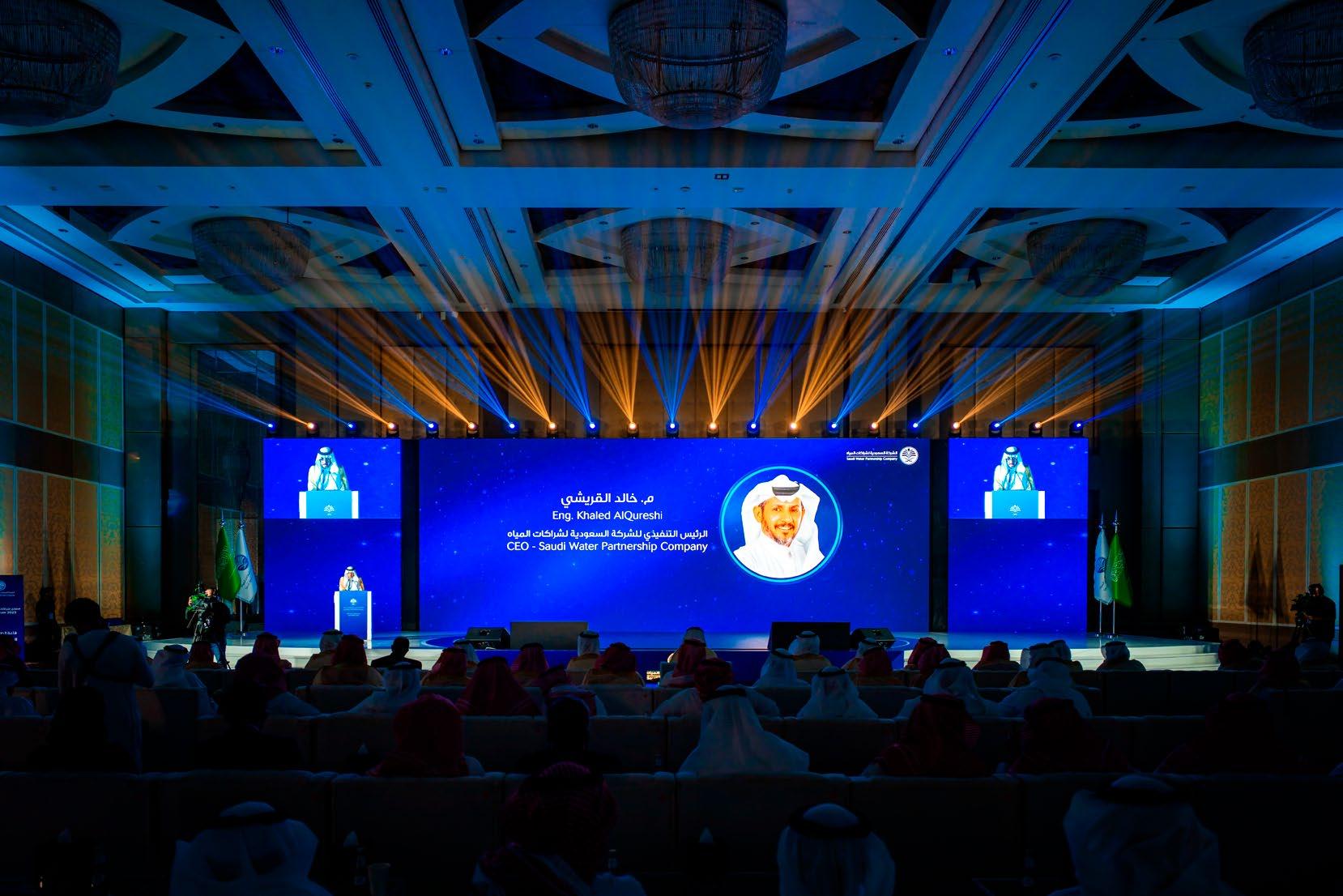

Australia is confronted with some of the world’s most acute water challenges, shaped by its unique geography, climatic extremes, and the uneven distribution of its population. With a long history of severe droughts, bushfires, and floods, the country remains highly exposed to the accelerating impacts of climate change, factors that increasingly compromise the availability, quality, and reliability of its water resources.
Despite possessing a mature regulatory framework and advanced infrastructure, the Australian water sector is facing growing pressures from rapid population growth, expanding industrial activity, and the imperative to manage resources more sustainably. This evolving landscape is driving demand for resilient, efficient, and innovative water solutions. Notably, the market is marked by a commitment to decarbonisation, circular economy principles, and environmental, social and governance (ESG) standards, positioning Australia as fertile ground for water sector innovation and investment.
Strategically, Australia is not only a critical market in its own right, but also serves as a gateway to the wider Asia-Pacific region. Here, many countries are grappling with comparable water-related challenges, although with diverse levels of infrastructure maturity and investment capacity.
Strategic investment: Almar Water Solutions enters the region
In 2023, recognising the significance and potential of the Australian and Asia-Pacific water markets, Almar Water Solutions made a strategic move by acquiring a majority stake in Aqualyng Australia. With more than 15 years of experience in delivering bespoke water treatment and reuse solutions for industrial and municipal clients, Aqualyng brought deep local insight and technical capability to the table.
This investment was underpinned by a long-term vision: to establish a robust local presence supported by in-house operational, commercial, and technical expertise, using Australia as a launchpad for broader regional expansion.
Through this acquisition, Almar Water Solutions gained immediate access to a skilled team, a portfolio of reference projects, and a client base across key industries, including mining, oil and gas, food and beverage, pharmaceutical, power generation, textile, semiconductor and micro electronics, and municipal utilities. The integration also brought a culture of technical rigour, customer dedication, and a strong safety ethos, fully aligned with Almar’s global standards.
Crucially, the partnership unlocked synergies between Almar’s global experience in developing, financing, and operating large-scale water infrastructure and Aqualyng’s nimble, fit-for-purpose approach to localised water solutions.
Rebranding: the emergence of Almar Water Solutions Australia
As part of its integration strategy, and to reflect the enhanced capabilities of the business, Aqualyng Australia formally adopted the Almar Water Solutions brand in 2025, re-emerging as Almar Water Solutions Australia.
This rebranding represents more than a change in name. It marks a new era of regional leadership and global alignment, reinforcing the company’s ability to leverage international expertise while maintaining a strong local commitment to clients, employees, and communities.
For the Australian market, it sends a clear signal: Almar is here for the long term, bringing investment, operational excellence, and a sustainability-driven agenda to the national water sector.
Competitive advantages and strategic framework
Almar Water Solutions Australia’s development model is structured around three
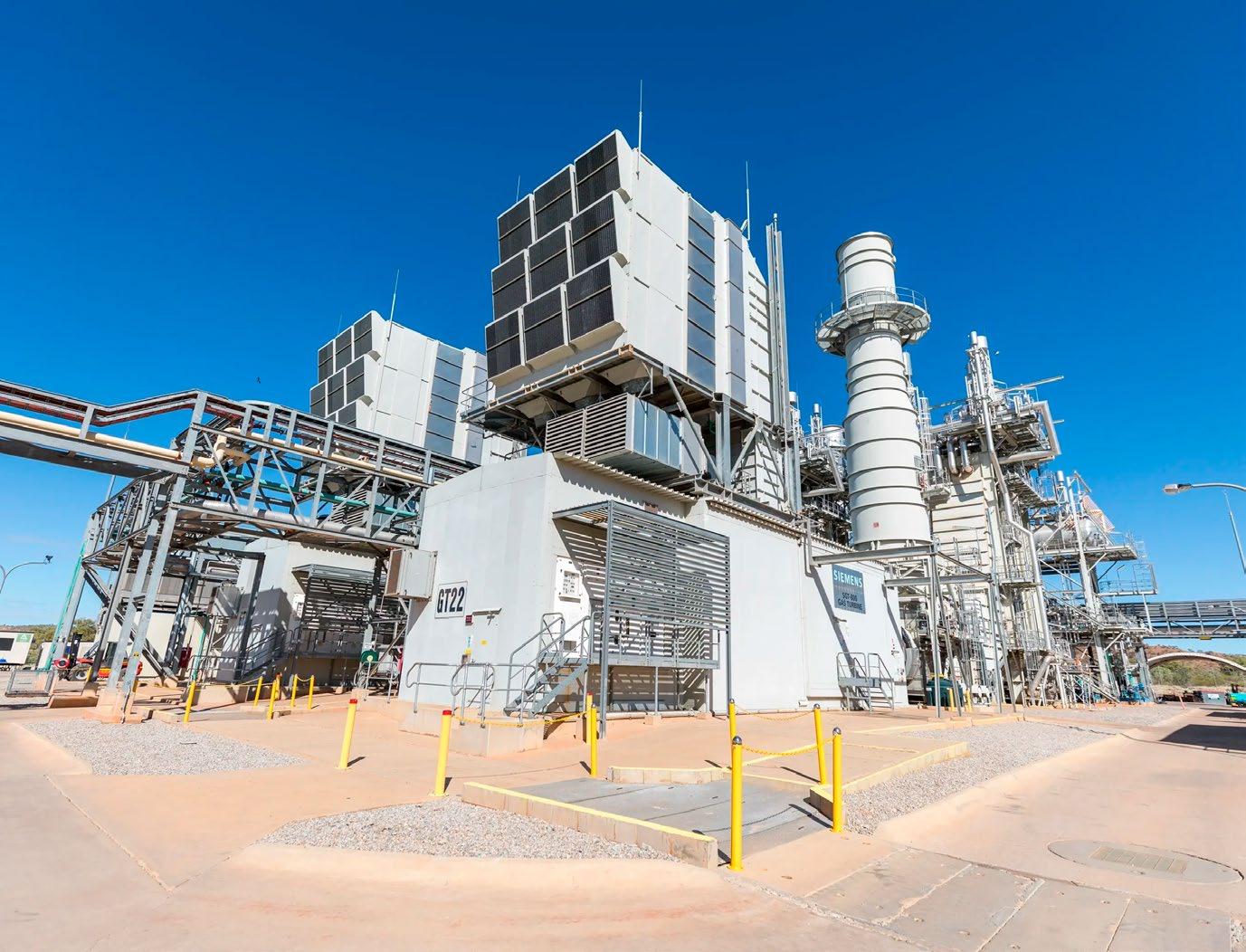
strategic pillars — Consolidate, Reposition, and Grow — designed to deliver sustained impact for clients and stakeholders, while contributing meaningfully to the communities it serves.
Consolidate: Strengthening relationships with existing clients by enhancing service delivery, meeting and exceeding operational commitments, and ensuring technical excellence. This pillar also includes internal initiatives to reinforce company culture, invest in talent, and engage meaningfully with local communities.
Reposition: Evaluating and evolving the project portfolio to better respond to the changing needs of the Australian water market. This involves in-
tegrating cutting-edge technologies, forging strategic alliances, and designing innovative process flows that deliver measurable ESG outcomes.
Grow: Scaling the company’s presence by tapping into the global capabilities of the Almar Water Solutions network. This includes deploying flexible financial models — such as equity investments and long-term operations and maintenance (O&M) contracts — and pursuing mergers and acquisitions across the region to broaden its reach and diversify its offering.
At the heart of this strategy lies Almar Water Solutions Australia’s most vital asset: its people. The company is cultivating a team that combines deep industry
Almar Water Solutions’ acquisition of Aqualyng marked a pivotal move to blend global infrastructure expertise with agile local delivery
The rebranding to Almar Water Solutions Australia signals a long-term commitment to operational excellence and sustainability
knowledge with fresh perspectives, enabling it to deliver impactful technical solutions while remaining agile and responsive to client needs.
Reference projects: demonstrating local impact and technical excellence
Almar Water Solutions Australia is actively delivering innovative water solu-
tions across key sectors, demonstrating its ability to adapt international best practices to local conditions. These initiatives exemplify how technically advanced, environmentally conscious water infrastructure can unlock value for both clients and communities.
A standout example is a BOOT (Build-Own-Operate-Transfer) project
From oil and gas to food and beverage, Almar Water Solutions Australia delivers decentralised, circular, and communitydriven water solutions


for the oil and gas sector in Queensland, developed to treat water produced from coal seam gas (CSG) extraction. The purpose-built facility converts a previously discarded by-product into a high-quality water source suitable for irrigation and livestock use. This initiative embraces circular economy principles, offering a sustainable, cost-effective alternative to traditional disposal methods while improving the environmental credentials and operational efficiency of the client.
In the food and beverage industry, the company has deployed a fully automated, containerised MBR (Membrane Bioreactor) wastewater treatment system, also in Queensland. Designed to treat site-wide effluent to Class A standards, the system is integrated into the client’s digital control platform for real-time remote operation. By eliminating the need for off-site transport and enabling water reuse for irrigation, the solution significantly reduces both carbon emissions and operating
costs, setting a benchmark for sustainable practices in industrial water management. Meanwhile, in Western Australia, Almar Water Solutions has implemented a potable water treatment plant for municipal services in a remote area. The system addresses elevated nitrate levels in bore water and ensures full compliance with the Australian Drinking Water Guidelines. Designed for minimal operator intervention, it provides a reliable, high-quality water supply while reducing reliance on bottled water logistics. This project highlights the potential of decentralised, resilient solutions to enhance community wellbeing and support regional development.
Together, these projects underscore Almar Water Solutions Australia’s capacity to deliver sustainable, technically sophisticated water infrastructure tailored to local needs — contributing to a more secure and climate-resilient water future across Australia and the Asia-Pacific.
As water challenges intensify globally, the role of regional service platforms becomes increasingly vital. The ability to deliver water infrastructure and services that are both technologically advanced and finely tuned to local conditions is essential for long-term resilience and impact.
Almar Water Solutions Australia exemplifies this model. By embedding itself within the local context — geographically, operationally and culturally — while drawing upon the depth and scale of its international parent company, it offers a compelling value proposition: global expertise with local execution.
This dual approach enables Almar Water Solutions to be both a trusted local partner and a forward-thinking innovator, contributing not only to Australia’s water security but also to the broader development of sustainable and adaptive water solutions throughout the Asia-Pacific region.
Z Cristina Novo
Mallak Bani Mustafa, Innovation Project Manager at Southern Water, describes her job simply: she gets paid to ask, “Can we do this smarter?” With a career that’s taken her from mega-projects in Saudi Arabia to grassroots innovations across North Africa and Asia, Mallak treats the world like one big water lab. At Southern Water, she hunts for clever ideas and technologies, so they can be trialled, and — if they work — be scaled up. For her, innovation isn’t just about shiny tech; it’s about people, practicality, and solutions that make a real difference. In this conversation, she shares what makes real-world innovation tick and how to turn pilots into lasting change.
You’ve built a career at the intersection of engineering, innovation, and sustainability. What led you to focus on the water sector, and what does your role as Innovation Project Manager at Southern Water involve today? For ten years of my life, I lived with a disability that made walking impossible. My engagement in school was minimal, and my world felt very limited. I never aspired to be something I couldn’t see.
But what I did see every day was my father, a farmer in Jordan, struggling with water scarcity. So water meant crops, and crops meant dinner. I didn’t read about water scarcity in books; I lived it. That’s why I chose water.
At Southern Water, I basically get paid to ask: “Can we do this smarter?” I hunt for global water tech trends like a detective with a passport, bring them home, trial them, and if they work, we scale them. It’s like matchmaking but for pumps and sensors.
Having worked across different countries and contexts, what perspectives have shaped the way you approach water challenges today?
MALLAK BANI MUSTAFA
INNOVATION PROJECT MANAGER, SOUTHERN WATER
“The future of water is scrappy, smart, and full of heart. And it’s already here”
With a global perspective on water innovation, Mallak Bani Mustafa explores how creativity, collaboration, and bold experimentation can help utilities turn new technologies into smarter, more sustainable ways of delivering water — and real impact for the people they serve.

Let me tell you, working in Saudi Arabia is like stepping into a sci-fi movie. Projects are massive, deadlines are yesterday, and ambition is served gold-plated. Blink twice, and a desalination plant appears.
Then you land in the Netherlands, and it’s a whole different vibe. They’ve got more water than they know what to do with. Egypt? One river, 108 million people, and a whole lot of creativity. Every drop counts, and they stretch it like magic. I saw some places in India where innovation is a bucket, three wires, and a prayer, and somehow, it works better than some million-dollar systems.
What I’ve learned is this: innovation doesn’t always wear a lab coat or come with a price tag. Sometimes it’s a clever tweak, a local hack, or a community idea that’s been quietly working for decades. The best solutions aren’t always imported; they’re often already in someone’s backyard.
So my approach today? Stay curious, stay humble, and never underestimate the power of a well-placed bucket.
When assessing emerging technologies, what criteria or indicators do you rely on to determine whether they’re ready for real-world deployment at scale?

I wish there were a magic checklist, but honestly? You’ve got to test it. I’ve seen tech that worked in California, failed in Kent, and then somehow thrived in Amman. At Southern Water, we use a pyramid model: visibility (can we see it working?), viability (can we actually use it?), and value (does it save money, time, or the planet?).
One time, we found a brilliant sensor system that could detect leaks before they happened. Amazing, right? Except…it costs more than a private jet. So we asked: if we replace the old system, will it actually save us money or just look cool in a PowerPoint? That’s the real test.
From your experience, how can utilities translate promising technologies into dependable operational performance and measurable improvements in service delivery?
Start small, fail fast, learn faster. Utilities love big plans, but the magic is in the pilot. You need to involve the operators, the people who actually press the buttons and fix the pipes. If they hate it, it’s doomed.
Collaboration is key to success in regulated utilities. What, in your view, makes partnerships between utilities, regulators, and innovators genuinely effective?
Three things: snacks, shared goals, and no jargon. I’ve been in meetings where
"I get paid to ask: 'Can we do this smarter?' I hunt for global water tech trends, bring them home, trial them, and if they work, we scale them"
"Innovation doesn’t always wear a lab coat or come with a price tag. Sometimes it’s a clever tweak, a local hack, or a community idea"
regulators speak Latin, innovators speak startup, and utilities speak spreadsheet. You need a translator, or better, a shared language.
The best partnerships I’ve seen are the ones where everyone’s honest about the risks, open about the data, and willing to co-design. Also, if you bring good coffee to the workshop, people listen more. True story.
Introducing new technologies is as much about people as it is about technology. What have you found helps teams and organisations embrace innovation and turn it into lasting change?
Make it fun, make it useful, and make it theirs. I once ran a workshop in the Czech Republic where we let operators name the new tech. They called it “Leakzilla.” Suddenly, everyone wanted to use it.
People resist change when it feels imposed. But if they’re part of the process testing, tweaking, and naming, they become champions. Also, celebrate small
"We use a pyramid model: visibility (can we see it working?), viability (can we use it?), and value (does it save money, time, or the planet?)"

wins. If a new valve saves 5 minutes a day, that’s a coffee break earned. That’s motivation.
You’ve reflected on water innovation across West Asia and North Africa, where conditions and resources vary widely from high-tech investment hubs to communities innovating under constraint. What stands out to you about how different contexts in the region approach water resilience and technology adoption?
The WANA (West Asia and North Africa) region is like a water innovation buffet, every country brings a different flavour, and none of them follow the same recipe.
In the Gulf, innovation comes with a drone, a dashboard, and probably a minister’s blessing. It’s high-tech, high-speed, and high-budget.
Then you cross over to Jordan, where I grew up, and it’s a different story. Water scarcity isn’t a policy issue, it’s a daily reality. I’ve seen farmers use greywater from washing machines to irrigate tomatoes. That’s not just innovation, it’s survival engineering.
In Tunisia, I worked with youth-led startups turning olive waste into biofilters. In Morocco, I saw solar-powered pumps built from recycled car parts. And in Palestine, I met engineers who designed rainwater harvesting systems using nothing but local stone and grit because that’s what they had.
The contrast is striking: some countries innovate with millions, others with necessity. But what stands out is that resilience doesn’t always come from resources; it comes from creativity. Whether it’s a university lab in Abu Dhabi or a community garden in Amman, the spirit of innovation is alive.
Looking ahead, what gives you optimism about the future of water innovation and the next generation of professionals driving change in the sector?

Easy; I am the next generation. And we’re not waiting for permission. We’re building water startups in our kitchens, turning olive waste into filters, and pitching ideas on global stages with Wi-Fi that barely works. We speak code, climate, and community. We challenge legacy systems with one hand and design low-cost solutions with the other.
I lived with a disability for ten years, so trust me, I know how to adapt. That mindset now drives how I lead projects at Southern Water and beyond. The future of water? It’s scrappy, smart, and full of heart. And it’s already here.
As Saudi Arabia advances its Vision 2030 goals, the Saudi Water Partnership Company (SWPC) has become a driving force in transforming the nation’s water sector. Through an ambitious program of public–private partnerships, environmental stewardship, and local talent development, SWPC is redefining how large-scale water infrastructure is financed, delivered, and managed. Its 2024 Sustainability Report highlights a clear vision for the future.
The Saudi Water Partnership Company (SWPC) has emerged as a cornerstone of Saudi Arabia’s water sector, pioneering a new model that aligns with Vision 2030. Established in 2003 as a joint venture between the Saline Water Conversion Corporation (SWCC) and the Saudi Electricity Company SEC, SWPC was tasked with purchasing water and electricity from private projects and selling water to national utilities.
A 2017 Cabinet resolution expanded SWPC’s remit to include all forms of water, desalinated, treated, untreated and purified, and transferred full owner-
In its Report, SWPC highlights how sustainability is embedded across its operations, from carbon reduction to infrastructure planning
ship to the Ministry of Finance. Today, SWPC works closely with private-sector partners to secure a reliable and sustainable water supply for the Kingdom. It has grown into a major off-taker of water, overseeing dozens of projects and billions of riyals in investment.
In its first Sustainability Report, issued in 2024, SWPC highlights how sustainability is embedded across its operations, from carbon reduction to long-term infrastructure planning, describing its vision as providing “sustainable and reliable water in partnership with the public and private sectors”, making clear that its PPP strategy, environmental stewardship and Saudization efforts are central to achieving that vision.
SWPC identifies environmental stewardship as a core value within its corporate strategy. The company reports stringent compliance standards and an ongoing drive towards net-zero emissions. In 2024, it continued its efforts to

reduce carbon output across its projects.
Eng. Khaled Al Qureshi, SWPC’s Chief Executive Officer, notes that recent initiatives have reduced annual emissions by 100,000 tonnes while contributing to the planting of 30,000 trees through afforestation schemes. These actions reflect SWPC’s commitment to the environment and society, balancing water production with ecological preservation. SWPC has also been expanding the use of renewable energy across its facilities. The Jubail 3A desalination project, for example, incorporates a 45.5 MW solar PV installation. This integration offsets around 60,000 tonnes of carbon emissions each year and contributes to record-low energy use below 2.8 kWh per cubic metre. In 2023–24, SWPC commissioned a further 61 MW solar
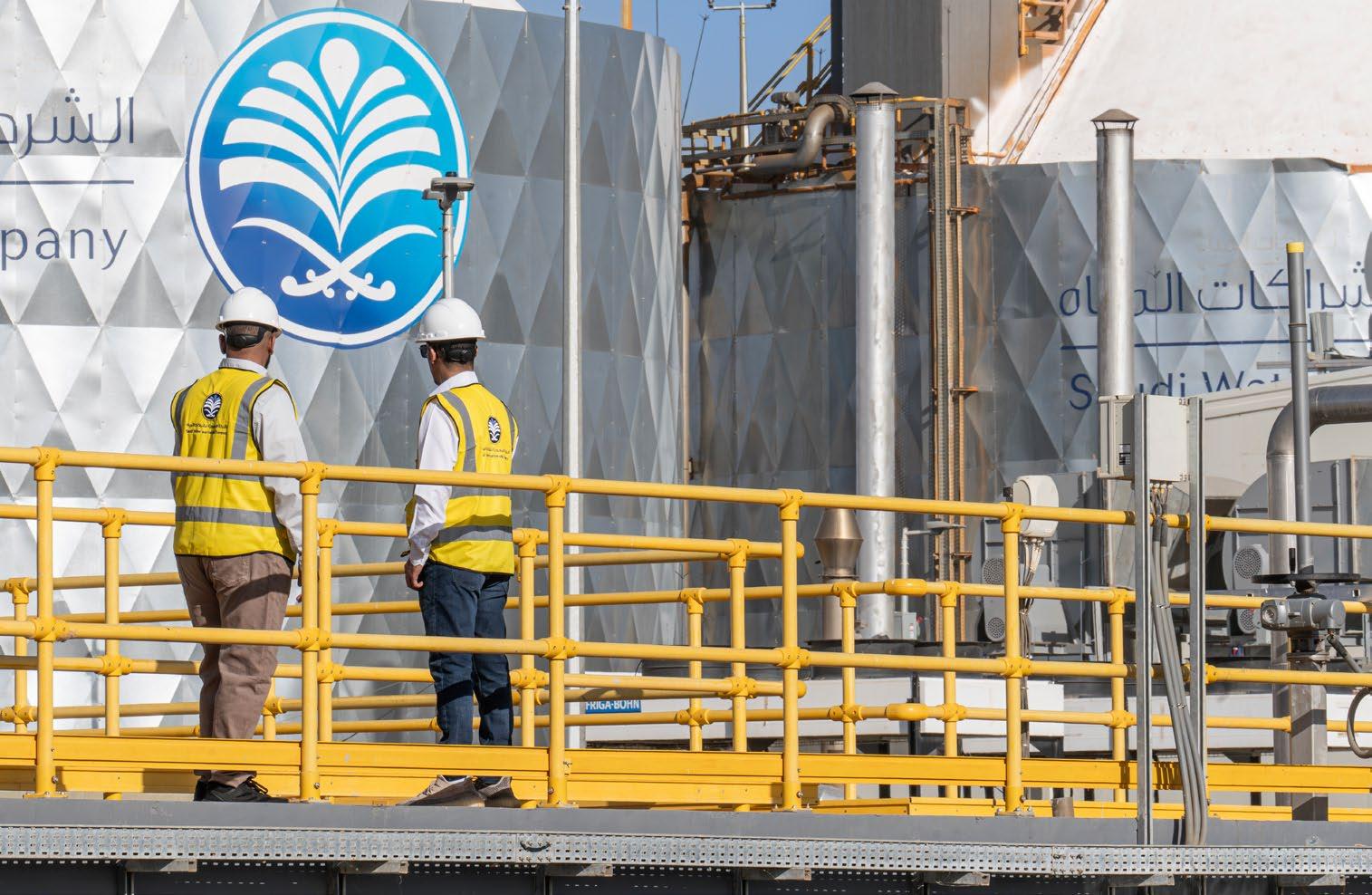
system at Jubail 3B, covering 17 per cent of the plant’s energy needs, and has similar solar arrays planned for Shuaibah 3 in 2025 and Rabigh 4 in 2026.
Together, these projects make a material impact. SWPC reports total annual carbon savings of 10.5 million tonnes through efficiency gains, technology upgrades and renewable power adoption, representing tangible progress towards its vision of a net-zero future. Beyond energy, SWPC’s environmental commitments extend to comprehensive monitoring of emissions, waste and compliance. The company is preparing to implement a formal Environmental Management System aligned with ISO 14001 in 2025, and all its facilities currently achieve 100 per cent compliance with environmental permits under the
National Center for Environmental Compliance (NCEC). Some plants also capture biogas from wastewater treatment to further reduce emissions.
Therefore, SWPC’s environmental protection policy covers regulatory compliance, energy efficiency, water stewardship and resource conservation. It represents an integrated framework designed to “minimise the ecological impact of our operations”. For SWPC, environmental stewardship is not an adjunct but a prerequisite for national water security.
At the heart of SWPC’s operating model lies its partnership with private developers. Acting as the Kingdom’s water privatisation arm, the company fosters collab-
oration between government agencies and industry. A key theme in 2024 was the expansion of Public-Private Partnerships (PPPs) to meet rising demand.
SWPC oversees the planning, construction and operation of dozens of water projects, from desalination plants and wastewater treatment facilities to transmission pipelines. Together, these projects have pushed Saudi Arabia’s total
SWPC identifies environmental stewardship as a core value within its corporate strategy, reporting stringent compliance standards
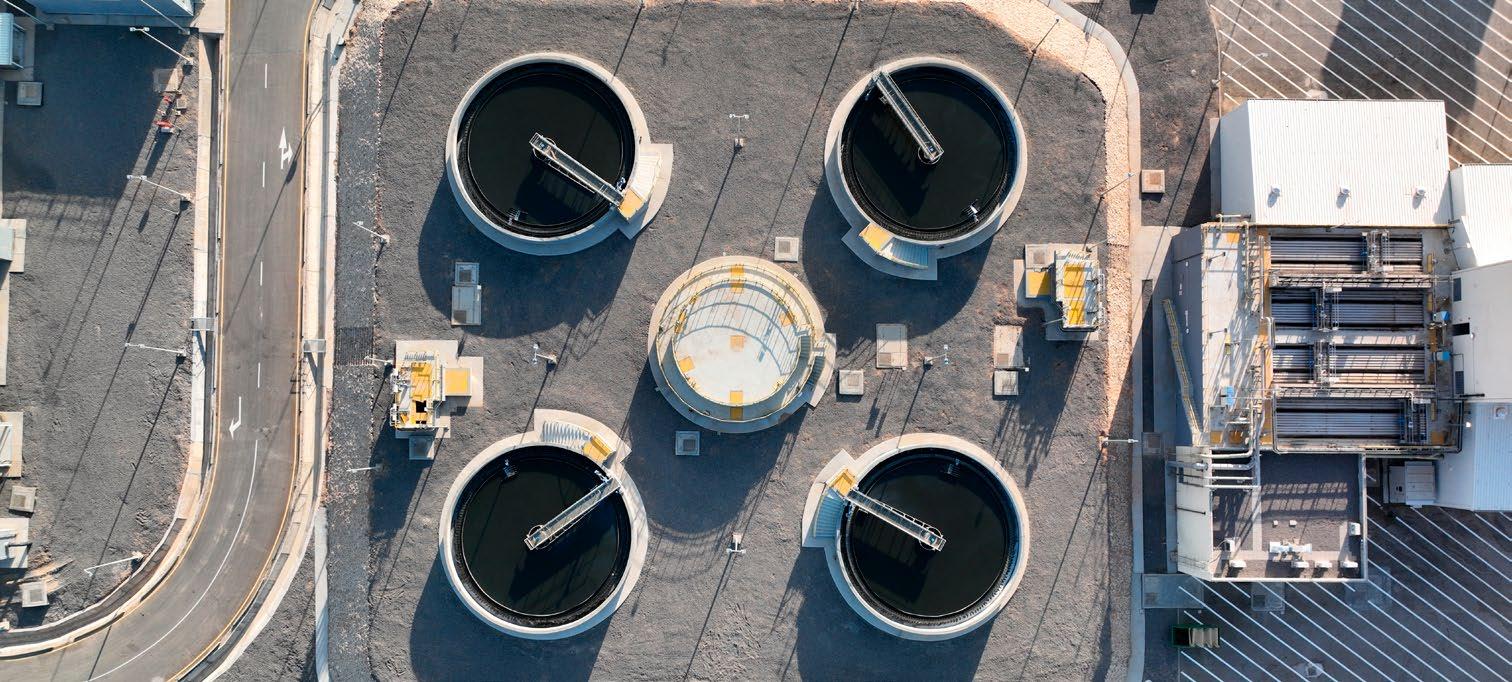
contracted production and treatment capacity, public and private, to 13 million cubic metres per day. Among them are the Kingdom’s first transmission pipelines developed under PPP contracts. SWPC has set ambitious service targets of 100 per cent potable water coverage and 95 per cent wastewater coverage in planned areas. One notable initiative is the Riyadh–Qassim Independent Water Transmission Pipeline project, which attracted multiple bids from international developers.
The company also plays a coordinating role in PPP tendering and project delivery. Its advisory services cover feasibility studies, bidding, contract management and more. In 2024, SWPC hosted its annual forum under the theme Empow-
SWPC reports total annual carbon savings of 10.5 million tonnes through efficiency gains, technology upgrades and renewable power adoption
ering Partnerships for a Sustainable Water Future, drawing more than 500 industry leaders and government officials. At the event, the company announced over ten Memoranda of Understanding with partners including ACWA Power, Veolia, TAQA and ENGIE, formalising cooperation on infrastructure development and technology exchange. This year, The Water Partnership Forum took place on November 2–3, 2025, bringing together leaders, experts, and stakeholders to advance dialogue and collaboration within the water sector.
Looking ahead, SWPC has set out a seven-year strategic plan for 2024 to 2030 aligned with national goals. It focuses on five key infrastructure pillars: desalination plants, wastewater treatment plants, strategic reservoirs, transmission pipelines and dams. Among its milestones are full private-sector participation in desalinated water production by 2030 and a sharp rise in local content across projects.
In practice, this translates into more capacity built through PPPs. The Jubail 3A plant, for example, was com -
pleted in just 27 months, setting what SWPC calls a “global benchmark” for speed and efficiency. To ensure a robust project pipeline, SWPC has launched a Developer Qualification Programme and a Contractor Qualification Initiative, pre-approving local and international firms while offering training on national standards. By streamlining tender processes and strengthening local capacity, the company is broadening the base of qualified contractors able to deliver major water projects in Saudi Arabia.
As the Sustainability Report highlights, such achievements showcase Saudi Arabia’s leadership in delivering innovative, large-scale water solutions that balance reliability, efficiency and environmental responsibility.
Saudisation and local talent
Human capital development and national workforce participation are central to SWPC’s sustainability agenda. The company supports a range of Saudisation and training initiatives designed to build local expertise.
The
commitments extend to comprehensive monitoring of
waste and compliance
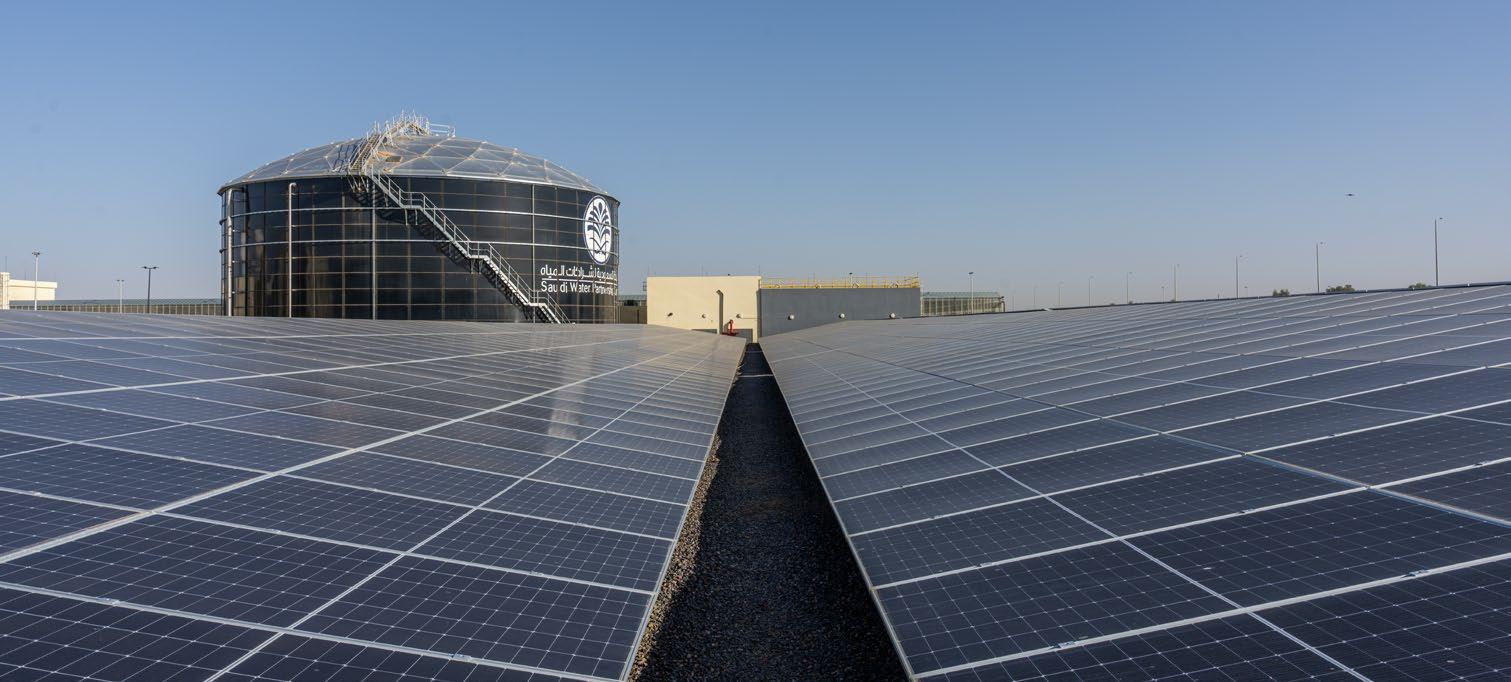
In particular, the Sharakah Initiative, launched in 2020, helped to prepare Saudi graduates for the water sector. Through hands-on training rotations and mentorship, Sharakah has already trained hundreds of young professionals. In 2024 alone, SWPC launched the fourth and fifth editions of the initiative and organised a career day to connect graduates with employment opportunities in the industry.
Complementary programmes include the Contractor Incentivisation Initiative and the Contractor Qualification Initiative, which help local contractors understand privatisation projects and raise their competitiveness in SWPC tenders.
These efforts are reflected in the company’s workforce figures. Saudi nationals now account for 90 per cent of SWPC employees. In project management roles, 514 Saudi professionals were employed across SWPC-operated plants in 2024. The company also invested heavily in local supply chains, spending SAR 1.4 billion on local content that year and applying domestic content requirements of 40 to 70 per cent across
projects. The Jubail 3A build achieved 40 per cent local content, while the Taif and Shaqiq projects recorded over 60 per cent during operations.
By nurturing Saudi engineers, managers and suppliers alongside world-class infrastructure, SWPC is helping ensure the Kingdom’s water future is managed by its own people and industries.
SWPC’s 2024 Sustainability Report outlines a clear roadmap for meeting Saudi Arabia’s long-term water needs. Its seven-year strategy from 2024 to 2030 aligns closely with the National Water Strategy, focusing on efficiency, localisation and private-sector collaboration. By 2030, SWPC aims for all new water capacity to be delivered through private partnerships, supported by strengthened Environmental, Social and Governance frameworks.
A formal Environmental Management System, compliant with ISO 14001, is due for implementation in 2025, reflecting SWPC’s intent to embed sustainability into every aspect of
its operations and governance. Environmental protection and stakeholder engagement will remain priorities across all activities.
Collectively, these measures position SWPC as a driving force for water security and sector transformation in Saudi Arabia. As H.E. Eng. Abdulrahman bin Abdulmohsen Al-Fadhli, the Saudi Minister of Environment, Water and Agriculture and SWPC’s Chairman, notes in the Report, by embedding sustainability and innovation into its operations and pursuing large-scale PPP projects, SWPC is “building a more resilient, adaptive and future-ready water ecosystem” for the Kingdom.
By

APURV JOHARI
VICE PRESIDENT OF PRODUCT MANAGEMENT AND MARKETING, ITRON
The United States loses billions of gallons of treated water every day, and trillions annually. These losses stem from leaks, crumbling infrastructure and fragmented data systems that prevent utilities from identifying problems before they escalate. Simultaneously, networks have grown more complex, making traditional methods of water management unable to keep pace with increasing demand, ongoing climate volatility and mounting financial pressures.
The challenge beneath the surface
Across North America, thousands of miles of water mains beneath cities have exceeded their intended lifespan, resulting in leaks, pressure fluctuations and rising repair costs. These issues are compounded by a mix of legacy and modern systems that often fail to communicate. While each system generates valuable data across metering, asset management and customer service, much of it remains siloed. Without full network visibility, operators are forced to make reactive decisions, often addressing issues only after damage has occurred.
The lack of comprehensive insight into system performance often leaves utilities at a disadvantage. Operators may know there's a problem, but they lack the necessary context or timely information to identify the root cause or to proactively address the issue before it escalates. This reliance on reactive maintenance is inefficient and costly, especially in a time when water conservation and system efficiency are top priorities.
To move toward a proactive stance, operators are adopting an intelligence-driven approach that treats data as a strategic asset rather than a by-product of operations. The foundation of this approach lies in real-time visibility. Smart meters, sensors and monitoring systems provide continuous data streams, allowing operators to detect anomalies before they escalate into major leaks or outages. Through this approach, utilities can allocate resources based on actual network performance rather than assumptions.
Advanced analytics deepen that intelligence. Machine learning analyses years of historical data alongside real-time readings to pinpoint where failures are most likely to occur. This predic-
tive capability allows utilities to plan maintenance strategically, extend asset life and avoid costly emergency responses.
The key to making this intelligence actionable lies in unified data management. When data from metering systems, GIS platforms and SCADA networks are consolidated into a single environment, utilities gain a comprehensive, real-time view of their operations. This holistic visibility enhances collaboration across teams, automates compliance reporting and improves customer service.
Most utilities already have the foundational tools to operate proactively. Rather than undergoing a complete overhaul, they simply need to connect and optimise the systems they already have. Targeted pilot programs such as predictive maintenance
"Rather
than undergoing a complete overhaul, water utilities simply need to connect and optimise the systems they already have"
or pressure optimisation can help uncover technology gaps and deliver measurable improvements in reliability and efficiency. Success in these initiatives builds a strong case for broader transformation across the organisation.
An intelligence-driven approach enables utilities to do more with the systems they already have. By connecting and optimising existing infrastructure, this approach helps mitigate non-revenue water, reduce operational expenses and strengthen assets to extend their lifespan.
As climate impacts intensify and infrastructure continues to age, the future of water management will be defined not by how utilities respond to incidents, but by how they predict and prevent them. By embedding intelligence across operations, utilities can turn data into foresight and ensure that every drop counts.

One is a drink. The other is a world leading water information system.
Trusted by 1000s of users worldwide, WISKI by KISTERS collects, validates, harmonises environmental data – so agencies, utilities, and scientists can turn streams of information into confident decisions. Discover WISKI.
kisters.eu/wiski

On November 5, 2025, Smart Water Magazine and Xylem Vue convened professionals from across the sector for the webinar From Data to Action: Building a Digital Twin of Brabant Water’s Network with Xylem Vue. The session brought together Brabant Water’s Wouter Huisman, Program Manager, and Ludo Beumer, Project Manager IT, alongside Maricruz Olivas, Project Manager at Idrica, with moderation by Ruth Clarke, Xylem’s Head of Digital for the UK & Ireland.
Over one hour, the panel offered an inside look at Brabant Water’s multi-year effort to build a real-time, data-driven model of its drinking water system. Spanning 20,000 kilometres of mains across the southern Netherlands, the initiative reflects a wider shift in utilities: moving from fragmented datasets toward integrated, predictive insights. As speakers walked participants through the project — from strategy to a live demonstration — they highlighted the planning and collaboration required to turn data into operational intelligence. The result is not only a technical accomplishment but a redefinition of how the utility understands and manages its network in real time, creating a stronger basis for future digital initiatives.
"Projects like this succeed because leadership, data, and people move together — technology only works when the culture supports it"
Ruth Clarke, Head of Digital, UK&I at Xylem
A webinar organised by Xylem Vue focused on Brabant Water’s digital twin project, highlighting how the utility is using real-time modelling, data integration, and cross-team collaboration to reshape operational performance and enhance service for its customers.
Opening the discussion, Wouter Huisman framed the digital twin within Brabant Water’s evolving context. “We have a limit to our water sources, and with an increasing population, we have a very big challenge to deal with that,” he said. Despite the Netherlands’ water-rich reputation, the province has experienced recurring droughts, forcing utilities to balance constrained groundwater with rising demand. An ageing workforce and higher energy costs added further pressure and heightened the need for improved insight.
For Huisman, data-driven operations offered a way to respond. “In 2025, Brabant Water has a real-time hydraulic model of the distribution network — and we call this the digital twin — and use this digital twin to be able to carry out data-driven interventions,” he said.
That ambition took shape as SOFIA — Smart Operations from Intelligent Assets — the company’s innovation track within its wider modernisation agenda. Developed with Xylem Vue, SOFIA set out the roadmap for change: sensor deployment, IT architecture, workforce skills, training, and organisational
"From the start, we set a clear scope for the digital twin — that focus helped us avoid unnecessary complexity and stay on track"
Wouter Huisman, Program Manager at Brabant Water


adjustments. By starting with a comprehensive plan, Brabant Water ensured the digital twin would function within a broader operational model linking people, data, and processes.
Building the digital core
With the strategy established, the next phase focused on constructing the technical foundation. Ludo Beumer described the decision to host the data solution on Microsoft Azure, citing reliability, security, and Dutch-based redundancy. Azure now underpins an integration platform serving as the digital twin’s backbone, linking Brabant Water’s systems — ERP, GIS, SCADA, and customer databases — with the Xylem Vue environment.
“It’s the bridge that keeps everything working together,” Beumer explained. The platform manages authentication, data traffic, and formatting without disrupting operations. “That gives us flexibility and control of our own data.” His advice to peers was measured: “Don’t integrate everything. Make wise decisions — dynamic data, of course, but not all the static asset data needs to be integrated.” By prioritising frequently changing information, Brabant Water kept the architecture streamlined and adaptable.
Seeing the digital twin in action
A live demonstration from Huisman showed how the system supports day-to-day operations. Using the Xylem Vue interface, he simulated a valve closure. Within seconds, nodes on the map turned red, indicating pressure drops and the customers likely to be impacted. “Now we know which customers are likely to be impacted, we can also connect this with our customer systems,” he said.
He then simulated a burst scenario, illustrating how the model recalculates in real time. Operators can visualise impacts and test responses before acting in the field. “These simulations and insights from the platform help us to get an overview,” he said. “They also support our new control room.” Beumer added: “The most valuable part of the platform is that you can predict what is likely to happen if a certain scenario takes place.”
The transformation extended beyond systems: it reshaped roles, collaboration, and culture. New positions have emerged
"Don’t integrate everything. Make wise decisions — dynamic data, of course, but not all the static asset data needs to be integrated"
Ludo Beumer, Project manager IT at Brabant Water
Live simulations help operators test scenarios, predict impacts and guide field teams, strengthening incident response and communications
— including data scientists, IoT managers, and test specialists — and departments that once worked separately now collaborate closely. “What we see with this project is that we are really breaking through silos,” Huisman said. Training followed a hybrid model: key users received initial vendor training and then trained colleagues internally.
Although the project continues to evolve, early results include greater visibility, improved control, and opportunities for customer services such as early warning notifications or automated billing. But for Huisman, the most significant shift is mindset. “Be agile, and just take the step forward,” he said. “You can sit for hours and days in meeting rooms discussing how things should look, but reality will always be different.”
In the Q&A, moderator Ruth Clarke guided a discussion on complexity, collaboration, and governance. Huisman cited coordination as the hardest part: “You have so many pieces in the puzzle that you have to bring together … you have to bring everybody together and speak the same language.” Beumer noted the complexity of aligning partners with different backgrounds: “The landscape is quite complex … the part we did very well is to align all those parties to give them a common goal.”
Olivas highlighted the cooperative mindset behind the programme: “The goal was not to deliver Xylem Vue modules, but the digital twin for the smart operation. It’s not them or us — it’s us.” She stressed the need for a structured plan but also flexibility: “Keep the end goal in sight, and adapt to real conditions.”
The panel also discussed scope and user adoption. Huisman explained that the original blueprint provided clarity: “If people have questions — can we do this or that — we go back to the blueprint.” Beumer noted that the team also narrowed the scope when certain features required disproportionate effort.
"It’s important to have a plan, and also not to lose sight of the end goal, and be able to work flexibly and accommodate"
Maricruz Olivas, Project Manager at Idrica
As climate change intensifies, so does the number and severity of natural disasters. In this context, multilateral financing seeks not only to respond after the event, but to prevent, mitigate, and financially prepare countries to respond more effectively.
Climate change is altering the usual patterns of extreme weather events. According to data from Europa Press, 398 natural disasters were recorded in 2023, resulting in economic losses of $380 billion and 95,000 deaths — the highest figure since 2010. Among the most devastating events were the earthquakes in Turkey and Syria, floods in China, Hurricane Otis in Mexico, and droughts across the La Plata region and the United States. Floods alone have made headlines in Pakistan, India, Central Europe, and Spain in 2024, and more recently in Texas and Vietnam in 2025.
Two of the four types of natural disasters mentioned above are directly related to water — or its absence. The growing frequency, intensity, and extent of catastrophic flooding worldwide reveal a troubling trend. This is partly driven by climate change, which increases extreme precipitation (heavier but shorter rain events) and raises sea levels, worsening coastal flooding.
Indeed, across the wide spectrum of environmental and social risks — from earthquakes to epidemics — studies show that flooding poses a greater threat to people than any other natural hazard, especially for populations living in coastal cities.
Against this backdrop, it is worth examining how international organisations are responding.
It is clear that natural disasters inflict enormous economic, social, and human
losses, particularly in developing countries. Prevention, preparedness, and proactive financial planning — before disasters strike — can significantly reduce their impact. Consequently, many disaster response programs emphasise not only financial instruments but also institutional capacity and risk assessment.
Today, resilience to natural disasters, defined as “the ability of communities to adapt, recover, and grow after adverse events, while minimising their impact”, has become a central pillar of programs and strategies run by development cooperation agencies, NGOs, multilateral financial institutions, and other actors. Resilience is increasingly viewed as a tool to combat poverty, inequality, climate change, and vulnerability to catastrophic risks.
Although the United Nations had been promoting global initiatives to reduce
a troubling trend, partly driven by climate change



disaster risk since the early 1990s, the turning point came with the Second World Conference on Disaster Reduction (WCDR), held in Hyogo, Japan, in 2005.
The devastation caused by the 2004 Indian Ocean earthquake and tsunami, along with the destruction left by Hurricane Katrina in 2005, spurred a global rethinking of resilience as a guiding framework for managing climate crises.
Since then, numerous programs have emerged to build disaster resilience.
For instance, UNOPS (the UN Office for Project Services) leads the Cities Alliance, a partnership of bilateral and multilateral development agencies, governments, NGOs, foundations, private-sector companies, and research institutions operating a Multi-Donor Fund to enhance urban resilience against natural disasters.
The World Bank (WB) is another key player. Through its City Resilience Program (CRP) — supported by the Global Facility for Disaster Reduction and Recovery (GFDRR) — the Bank underscores that “investing in urban resilience is essential to ensure sustainable development and poverty reduction”. Established in 2017, the CRP provides technical and financial assistance for proactive investments in areas such as flood control,
Studies show that flooding poses a greater threat to people than any other natural hazard, especially for populations living in coastal cities
Prevention, preparedness, and proactive financial planning, before disasters strike, can significantly reduce their impact
water management, sanitation, energy, urban transport, upgrading informal settlements, and land cadastre systems.
The Disaster Risk Financing and Insurance (DRFI) Program, jointly run by the International Bank for Reconstruction and Development (IBRD) and the World Bank, aims to strengthen the financial protection of governments, households, businesses, and farmers against natural disasters. Its four core areas include: (1) sovereign disaster risk financing, (2) insurance market development, (3) actuarial and financial analysis, and (4) global partnerships and knowledge management.
In Latin America and the Caribbean — the most urbanised developing region in the world, where over 80% of the population lives in cities — the Inter-American Development Bank (IDB) launched the Emerging and Sustainable Cities Initiative (ESCI) in 2010 to help cities manage their vulnerability to natural disasters and adopt climate mitigation measures. The IDB also developed the Regional Disaster Risk Transfer Pro-
The World Bank is a key player, providing technical and financial assistance for proactive investments through its City Resilience Program


gram, allowing vulnerable countries to transfer the risks of extreme events (hurricanes, floods, droughts, earthquakes) to reinsurance and capital markets.
In Europe, the EU-funded project BINGO (Bringing Innovation to Ongoing Water Management), launched in 2015, aimed to provide practical


knowledge, innovative solutions, and advanced prediction tools for integrated water management under climate change. Led by Portugal’s National Civil
Since the Second World Conference on Disaster Reduction, held in 2005, numerous programs have emerged to build disaster resilience
Engineering Laboratory (LNEC), it involved 20 European partners — including research centres, local governments, and water companies — across Germany, Cyprus, Spain, Norway, the Netherlands, and Portugal. Using innovative modelling tools (1D-2D simulations), the project assessed the social, economic, and environmental impacts of floods and developed integrated drainage–marine systems for evaluating the effects of wastewater discharges on beaches.
In Asia and the Pacific, the Asian Development Bank (ADB) has launched the Disaster Risk Management Action Plan 2024–2030, focusing on both structural and non-structural measures for resilience in the world’s most disaster-prone region. Meanwhile, the African Development Bank (AfDB) implements the Africa Disaster Risk Financing Programme (ADRiFi) to strengthen African countries’ capacity to assess climate risks, design adaptation measures, and deploy disaster risk financing tools. The Multi-Donor Trust Fund (MDTF) behind ADRiFi finances climate insurance premiums, early warning systems, and data analytics.
In recent years, multilateral development banks have deepened their collaboration to operate “as a system” in climate and disaster strategies — enhancing early warning systems, policy coherence, and national resilience platforms. The International Flood Initiative (IFI), led by organisations such as UNESCO-IHP, WMO, UNDRR, and UNU, promotes integrated flood management through modelling tools, training, knowledge exchange, and the establishment of national and regional water and disaster resilience platforms (e.g., in the Philippines, Myanmar, Pakistan, and Sri Lanka).
Ultimately, these programs demonstrate that the goal is not merely to react after a disaster but to prevent, mitigate, and financially prepare countries to respond more effectively. Incorporating disaster risk into investment frameworks, infrastructure planning, and development policies is essential to reducing future vulnerability.
Finally, there is growing interest in market-based instruments — such as parametric insurance, contingent debt, and adaptive loans — to help cover the financial impacts of natural disasters.
All these initiatives offer opportunities for collaboration. ICEX works to identify such opportunities and provides Spanish companies with advisory, training, information, and promotion programs within this multilateral framework.
Experts in digitalisation and cybersecurity gathered for a webinar organised by HMS Networks to discuss how data, connectivity, and resilience are transforming the water sector — enabling smarter, more secure, and sustainable operations worldwide.

On October 23, 2025, HMS Networks and Smart Water Magazine hosted the webinar Shaping the Future of Water: Sustainability, Cybersecurity & Smarter Operations in Practice. Experts from technology, cybersecurity, and policy discussed how digital transformation and resilience are redefining the water industry.
The panel explored how utilities can turn data into value while safeguarding critical infrastructure — emphasising that digitalisation and cybersecurity are inseparable. To build the water systems of the future, utilities must unite connectivity and intelligence with security and trust.
Speakers included Xavier Cardeña, Market Manager at HMS Networks; Philip Lander, Software Product Owner at inCTRL Solutions; Eric Gervais, Chief Information Security Officer at SKion Water; and Gijs van Loon, Cyber Researcher and Workshop Facilitator.
Opening the discussion, Xavier Cardeña stressed that digitalisation and automation are essential for efficiency, flexibility, and competitiveness in water management. He defined smart water as “the combination of systems — connectivity, data, and automation — that make water truly smart,” emphasising the need to optimise limited resources through digital tools.
He advised starting small: “Start with pilot projects that can demonstrate quick wins and be scaled up.” Many initiatives, he noted, fail due to vague objectives or unrealistic timelines. Reliable, connected data must come first: “Before analysing data, make sure you can trust it.”
Digitalisation benefits every part of the water value chain. Integrators gain remote monitoring and performance optimisation; industrial users can outsource specialised tasks; utilities can centralise operations. “Without data, there is no intelligence,” he summarised.
From connectivity to cloud intelligence
Philip Lander explained how cloud-based monitoring systems are transforming operations. “The greater the distance between the operation and the people who need to monitor, the greater the benefit in remote monitoring,” he said, citing examples from mobile wastewater trailers in the U.S. to manufacturing plants where operators track performance via smartphones.
Cloud-native solutions simplify asset management by unifying functions in one platform. “Technicians can digitise procedures, attach photos, and access manuals on their phones — all in one place,” Lander said. For small and medium-sized utilities, this reduces complexity and supports continuity without large IT departments.
He also noted that data sharing is reshaping supplier–customer relationships. Membrane manufacturers maintain live data links with clients to improve service and warranties. “It’s a win-win,” he said, “but it’s important to be clear about who owns the data.”
Both Lander and Cardeña agreed that while technology is ready, cultural adaptation remains a challenge. “Digitalisation stops feeling like a threat and starts feeling like an opportunity,” said Cardeña.
Cybersecurity: from barrier to enabler
Eric Gervais noted that many still see cybersecurity as an obstacle. “We all know cybersecurity is important for OT and digitalisation, but there are still misconceptions,” he said. Some utilities think they’re too small to be targeted or safe because they’re offline. “Maybe that was true once, but today IT and OT are converging. Not having a plan is planning to fail.” Cybersecurity, he argued, should be a foundation of digital progress, not a constraint: “It should be part of early discussions — an enabler of effective digitalisation.”
Gijs van Loon warned about escalatory hacktivism — politically motivated cyberattacks that can cause physical damage. He cited recent attacks on water infrastructure in Europe and North America linked to global conflicts. “Hacktivists are showing willingness to cause cyber-physical impact — this is something we need to take seriously,” he said.
Van Loon, co-author of Under Pressure: Securing Europe’s Resource-Constrained Critical Infrastructure, called for stronger political protection of water systems. “States should hold malicious actors accountable and signal that cyberattacks on water infrastructure will have real consequences.”
Gervais recommended the SANS Institute’s five ICS critical controls: incident response readiness, network segmentation, continuous monitoring, secure remote access, and risk-based vulnerability management. He compared them to a “hierarchy of needs” for cyber maturity: “Start small, start now, be consistent — chip away at your cybersecurity gaps.”
"Start small, start now, be consistent about it — chip away at your cybersecurity gaps and improve your posture"
Eric Gervais, SKion Water GmbH
"Hacktivists are showing willingness to cause cyber-physical impact — this is something we need to take seriously"
Gijs Van Loon, Cyber Researcher and Workshop Facilitator
"Start small, with pilot projects that can demonstrate quick wins, that can be scaled up with an affordable budget"
Xavier Cardeña, HMS Networks
"A digital initiative should be focused on value — be intentional about the value, and flow everything from that edict"
Philip Lander, inCTRL Solutions
Van Loon emphasised collaboration: “Look at your processes from the perspective of a criminal group, and practice with that. Exchange information and work together.”
The panel highlighted real-world examples. Cardeña cited an Italian manufacturer using HMS Networks’ remote access solution, saving over €200,000 annually in travel and improving response times. “Remote experts can now assist customers immediately,” he said. He also noted that intelligent monitoring enables quick responses to anomalies in pumps, pressure, and temperature. Some utilities have achieved energy savings of up to 30% through optimised operation of pumps and blowers.
Lander described how Metro Water Recovery in Denver uses control-loop performance monitoring to manage energy costs, while a biogas plant improved output by detecting early process upsets. “Smart water is not a distant vision but an achievable reality,” he said.
As the session closed, Lander emphasised purposeful digital transformation: “A digital initiative should be focused on value — be intentional about the value, and flow everything from that edict.” Gervais urged continued engagement with cybersecurity as a living discipline. “Talk about cybersecurity risk in business language,” he advised. “Work with trusted providers, start small, and be consistent.” Van Loon underlined collaboration as key to resilience: “Innovative efforts and cybersecurity go hand in hand. Look at your processes from a criminal’s perspective and collaborate across the sector.”
Finally, Cardeña closed with optimism: “It’s not necessary to do it alone — this is a moment of partnerships.” The water sector, he concluded, stands at a pivotal moment — one defined by cooperation, innovation, and shared purpose toward a smarter, safer, and more sustainable future.
MARKUS WEIDLING · CEO, WE DATA EUROPE
SOFIA LETTENBICHLER · MANAGING DIRECTOR, WE DATA EUROPE
"Digitalisation is not a luxury, it’s an essential part of water resilience and our industry stands ready to make this a reality"
A new pan-European study highlights the power of digital tools to boost water efficiency. WE Data Europe’s Markus Weidling and Sofia Lettenbichler discuss how smart metering, data transparency, and supportive policy can accelerate Europe’s transition toward a more sustainable and resilient water future.
Z Cristina Novo
As Europe faces growing challenges around water scarcity and resource efficiency, the digital transformation of the water sector has never been more urgent. WE Data Europe, the European Association for Energy and Water Data Management, unites companies and organisations leading the way in smart metering and data-driven resource management. In this interview, Markus Weidling, CEO, and Sofia Lettenbichler, Managing Director of WE Data Europe, discuss how digital metering empowers both utilities and consumers to use water more efficiently. They share insights from a new pan-European study showing that smart water metering can reduce
"Digital metering enables real-time insights into how water is used, helping consumers understand and optimise their consumption"
household consumption by up to 25%, highlighting how data, technology, and policy alignment can drive Europe’s transition towards a more sustainable and resilient water future.
WE Data Europe, the European Association for Energy and Water Data Management, brings together companies and organisations at the forefront of digital metering and data management across Europe. Could you briefly explain WE Data Europe’s mission and how it supports the digital transformation of the water sector?
Markus Weidling: At WE Data Europe, our mission is simple but powerful: you can’t manage what you don’t measure. We represent the companies that make it possible to collect, analyse, and act on energy and water data in buildings. By promoting the rollout of smart water and energy metering, we accelerate Europe’s transition towards more efficient, sustainable, and resilient resource management.
Sofia Lettenbichler: The digital transformation of the water sector starts with data. Digital metering enables real-time

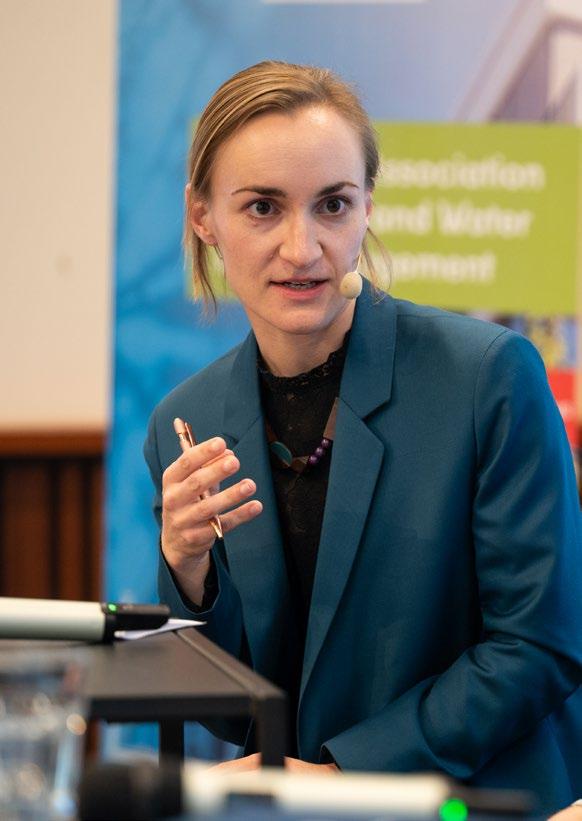

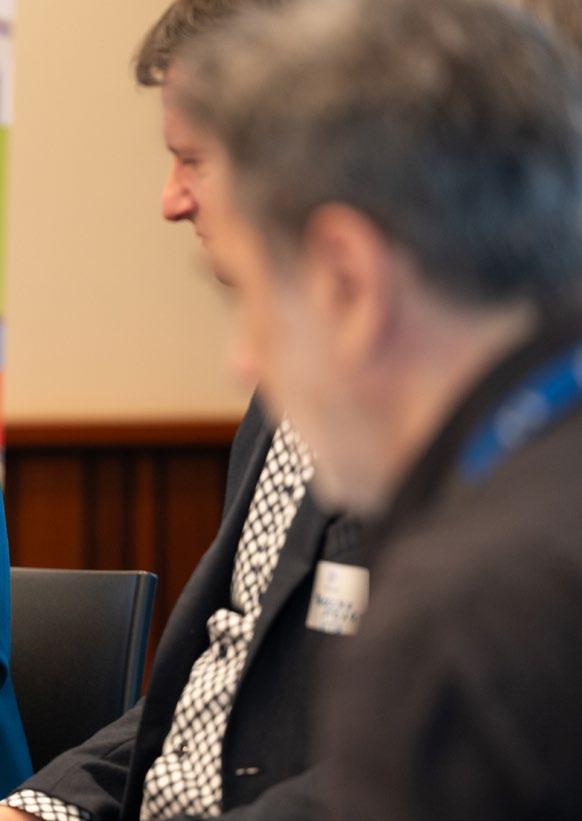
insights into how water is used, helping consumers understand and optimise their consumption. Our role is to bridge innovation and policy so that these solutions can scale across Europe.
You have just released a pan-European study, conducted by VITO, showing that smart water metering can reduce household consumption by up to 25%. What was the main motivation behind commissioning this research, and what do you consider its most significant finding?
S. L.: We wanted to move beyond assumptions and provide solid, Europe-wide evidence on how metering and submetering actually affect water use. Until now, most studies were national or local. This is the first analysis covering data from six EU Member States over multiple years. The results clearly show that digital metering, enabling leak detection, consumption-based billing, and feedback tools, can reduce water use by up to 25%.
M. W.: And the motivation was very practical. With the EU’s goal to improve water efficiency by at least 10% by 2030, our members knew we could already deliver much of that target today, with technologies that are tested and proven. The study confirms that smart water metering is one of the most cost-effective measures to achieve Europe’s water resilience objectives.
The study analysed data from six EU Member States and found water savings between 5% and 12% through the use of digital water meters. How should we interpret these figures in the broader context of Europe’s water efficiency and resilience goals?
M. W.: These figures are not theoretical, they’re real savings observed across thousands of households. A 5-12% reduction when moving from an analogue to a digital meter alone may sound modest, but it’s hugely significant when scaled to mil-
lions of dwellings across Europe. It shows that even before major infrastructure upgrades, we can already deliver meaningful efficiency gains.
S. L.: Exactly, and the savings potential doesn’t stop there. When you add behavioural feedback, leak detection, and awareness campaigns, the reduction is cumulative and reaches 25%. So, digitalisation is not just a long-term enabler, it’s a solution that delivers tangible results today.
From your perspective, what are the key takeaways for European water utilities? How can utilities leverage digital metering not only to save water but also to improve operational performance and customer service?
S. L.: Digital metering isn’t just about saving water, it’s about smarter operations. Utilities equipped with granular, real-time data can identify leaks faster, optimise pressure management, and reduce non-revenue water. They can also offer better customer service by helping users understand and control their consumption.
M. W.: From a management perspective, digitalisation helps utilities become more resilient. It enables predictive maintenance, water management and more transparent reporting. By tapping into the savings that digital metering provide, water utilities future proof their operations for the years and decades to come.
WE Data Europe represents both the energy and water data management communities. How can the lessons learned from energy digitalisation be applied to accelerate digital transformation in the water industry?
M. W.: In energy, particularly for heating and cooling, we’ve seen what’s possible when the right framework is in place. The Energy Efficiency Directive mandates that every consumer is billed according to their actual consumption
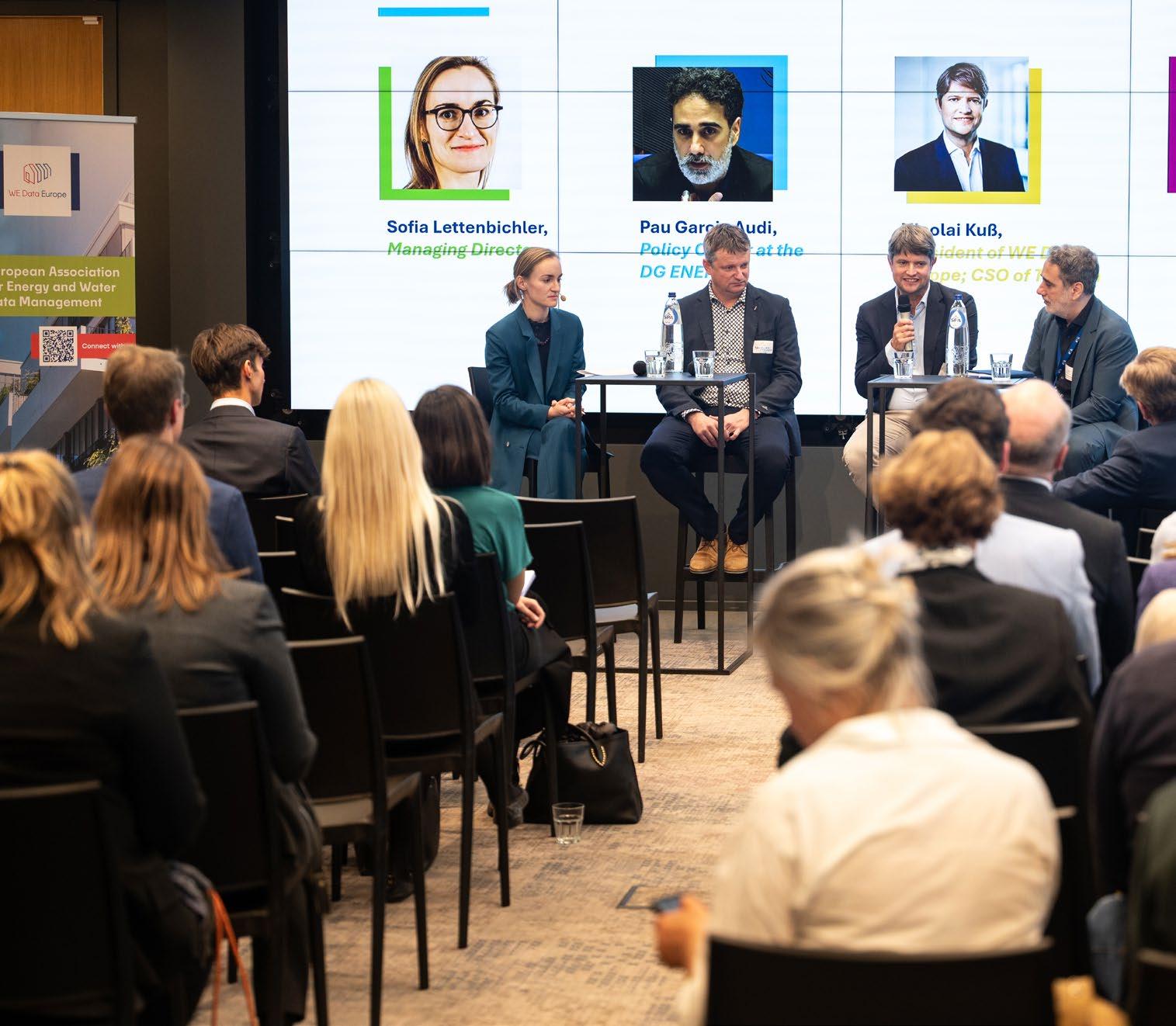
"The study confirms that smart water metering is one of the most costeffective measures to achieve Europe’s water resilience objectives"
— not estimates or averages. That simple principle has driven awareness, accountability, and ultimately, efficiency gains of 10–15% across Europe.
S. L.: We know it works because we have witnessed it. Once users can see their own consumption and are billed for what they truly use, behaviour changes naturally. The same approach can transform the water sector. If Europe estab-
lishes a comparable legal framework for individual water metering and consumption-based billing, we can replicate those efficiency gains and make water savings a reality everywhere.
The study highlights behavioural change as a major driver of savings. How can digital tools and data transparency help utilities engage consum-

ers more effectively to achieve sustained reductions in water use?
S. L.: Behavioural change is where data truly becomes value. When people can see their consumption, in an app, on a bill, or via alerts, they start adjusting habits almost immediately. The study shows that awareness alone can lead to reductions between 7% and 20%. Real-time feedback turns
"A 5-12% reduction when moving from an analogue to a digital meter alone may sound modest, but it’s huge when scaled to millions of dwellings"
passive users into active participants in water efficiency.
M. W.: And this creates a virtuous circle. Consumers save water, utilities reduce losses, and we can counteract water shortages before they occur.
Submetering — installing individual meters for each dwelling — has proven to be an effective way to reduce water consumption, yet it is still not required in some European countries. What do you see as the main barriers and opportunities for adopting submetering more widely as a policy tool to improve water efficiency across Europe?
M. W.: The barriers are mostly regulatory and structural. In many Member States, submetering isn’t yet required or is only mandatory for new buildings. The opportunity lies in harmonising legislation and recognising submetering as a policy tool for water efficiency, much as it already is for energy.
S. L.: Our study shows that countries with submetering obligations also show higher installation rates and – of course - achieve higher savings. If we could mainstream submetering across Europe, we would unlock enormous untapped potential, not only saving water but also improving fairness and transparency in billing.
By 2030, the EU aims to achieve at least a 10% improvement in water efficiency. As utilities move toward a digital, data-driven model, how do you see smart metering evolving, and what would success look like for Europe’s water utilities by 2030?
S. L.: Success means that digitalisation becomes the norm rather than the exception, that every building and every consumer has access to accurate, timely data on their water use through smart water metering. By 2030, we should see measurable progress towards the EU’s water efficiency target, driven by data and empowering citizens.
M. W.: Beyond efficiency, success also means resilience. In a changing climate, utilities that can monitor, predict, and optimise in real time will be the ones securing Europe’s water future. Digitalisation is not a luxury; it’s an essential part of water resilience, and our industry stands ready to make this a reality for consumers throughout Europe.
"By
tapping into the savings that digital metering provides, water utilities future-proof their operations for the years and decades to come"
In the global water sector, efficient motion control is no longer optional — it is a foundational requirement for operational and environmental performance. WEG’s drive portfolio, including low- and medium-voltage variable frequency drives (VFDs), is designed to meet the demands of water, wastewater, and desalination systems.
Water infrastructure faces growing pressure to improve efficiency, reduce costs, and comply with sustainability targets. Energy represents one of their largest expenses, particularly in pumping, aeration, and membrane filtration. In this context, variable frequency drives (VFDs) have become a key technology, enabling precise motor control and real-time adaptation to fluctuating system demands. Their use not only lowers energy consumption but also improves reliability, process flexibility, and equipment longevity.
A variable frequency drive is an electronic device that regulates motor speed and torque by adjusting frequency and voltage. In water systems, this allows pumps and other motor-driven components to operate only when needed, minimising wear, energy use, and water waste. VFDs also ensure smoother starts
Drives are a key enabler of smart water networks, continuously adjusting pump speed to match real-time flow and pressure demand
and stops, better process control, and improved system stability.
At WEG, these principles are embodied in a comprehensive and adaptable portfolio of drive solutions.
Versatile drive solutions as the backbone of water efficiency
WEG offers a broad portfolio of variable frequency drives and motor-drive packages designed to meet the full spectrum of water-sector needs — from compact booster stations to large desalination or wastewater treatment plants. Each solution can be adapted to site-specific requirements such as supply voltage, ambient conditions, enclosure protection, and preferred communication protocols, ensuring optimal performance and reliability in every environment.
A key strength of WEG’s drive architecture is its modular design philosophy. The drives are engineered in configurable building blocks that simplify installation, streamline maintenance, and make future expansion straightforward. This modularity allows plant operators to scale capacity or reconfigure systems as demand evolves — without the need for a complete infrastructure replacement.


Beyond the hardware, WEG integrates advanced control and diagnostic capabilities directly into the drives. Real-time monitoring, intelligent fault detection, and seamless connectivity with SCADA and IoT platforms empower operators to optimise energy use, anticipate maintenance needs, and safeguard continuous operation. In modern water systems, this intelligence transforms the drive from a simple speed controller into a central element of efficiency and operational resilience.
Among the quantifiable benefits of these solutions are typical energy savings of up to 20% and a significant reduction


in maintenance costs. In many cases, the payback period for VFD installations ranges between 2 and 5 years, depending on load profile and electricity costs.
Enhancing efficiency in pumping, treatment and desalination systems
Pumping stations, treatment facilities, and desalination plants all face high energy demands and dynamic hydraulic conditions. VFDs offer a powerful solution by precisely adapting motor speed to real-time requirements, reducing energy waste and mechanical stress across a wide range of applications.
In pumping stations, where energy consumption can exceed 50% of total operational costs, VFDs avoid inefficiencies caused by constant-speed operation. By continuously adjusting motor speed to match real-time hydraulic demand (flow and head), variable frequency drives keep the system operating close to its optimal efficiency point. This dynamic adaptation minimizes energy losses that occur when pumps run at constant speed under partial load, and significantly reduces mechanical stress on both the motor and piping network. As demand fluctuates throughout the day, VFDs en-
sure smooth speed transitions, eliminate abrupt torque changes, and help prevent hydraulic issues such as pressure surges or water hammer.
In water and wastewater treatment, as well as desalination plants, VFDs control
Advanced diagnostics in VFDs detect anomalies early, helping utilities prevent faults and avoid costly unplanned shutdowns
blowers, mixers, dosing pumps, sludge systems, and high-pressure reverse osmosis (RO) units. They ensure smoother system startup, reduce hydraulic shock, and extend equipment life — especially in membrane-based processes. VFDs also optimise differential pressure in RO systems and align pump schedules with energy availability in hybrid (grid + renewable) power configurations.
By integrating with SCADA and IoT platforms, WEG’s drives enable predictive control, fault prevention, and plantwide energy optimisation. This intelligence transforms conventional pumping and treatment infrastructure into adaptable, resilient systems aligned with modern efficiency and sustainability goals.
One of the greatest challenges in the water industry is the modernisation of ageing infrastructure. Many facilities still rely on fixed-speed motors and outdated control systems, leading to high energy costs and limited operational flexibility. Retrofitting these systems with variable frequency drives provides an immediate upgrade in performance, often without the need for full equipment replacement. By integrating VFDs with digital monitoring and control platforms, legacy systems can be transformed into smart, data-driven assets. This transition not only reduces energy consumption and

wear but also brings these installations in line with modern standards of efficiency, automation, and remote management.
WEG not only supplies advanced hardware, but also enables digital integration through artificial intelligence (AI), machine learning, and connectivity with IoT platforms. These capabilities support predictive monitoring, demand forecasting, and real-time optimisation.
Case studies: real impact, real savings
Rabigh 3 and Rabigh 4 Desalination Plants, Saudi Arabia
At Rabigh 3, WEG delivered a complete solution of motors and medium-voltage drives. The drives are tasked with con-
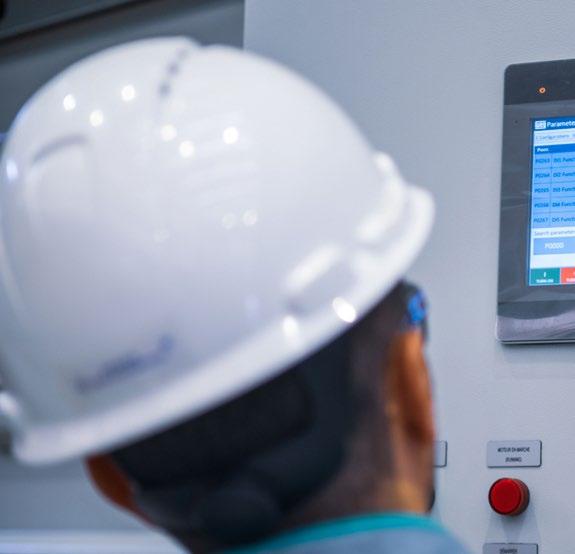
trolling the full chain from seawater intake to brine discharge, optimising flows across varying demand profiles and load conditions. The result: one of the lowest energy footprints per volume of produced water worldwide, a benchmark for large desalination facilities. This success was replicated at Rabigh 4, where WEG supplied 18 MVW3000G2 drives and 16 W60 motors ranging from 2.6 MW to 6.5 MW, continuing our contribution to the Saudi water infrastructure with a fully integrated high-performance drive system.
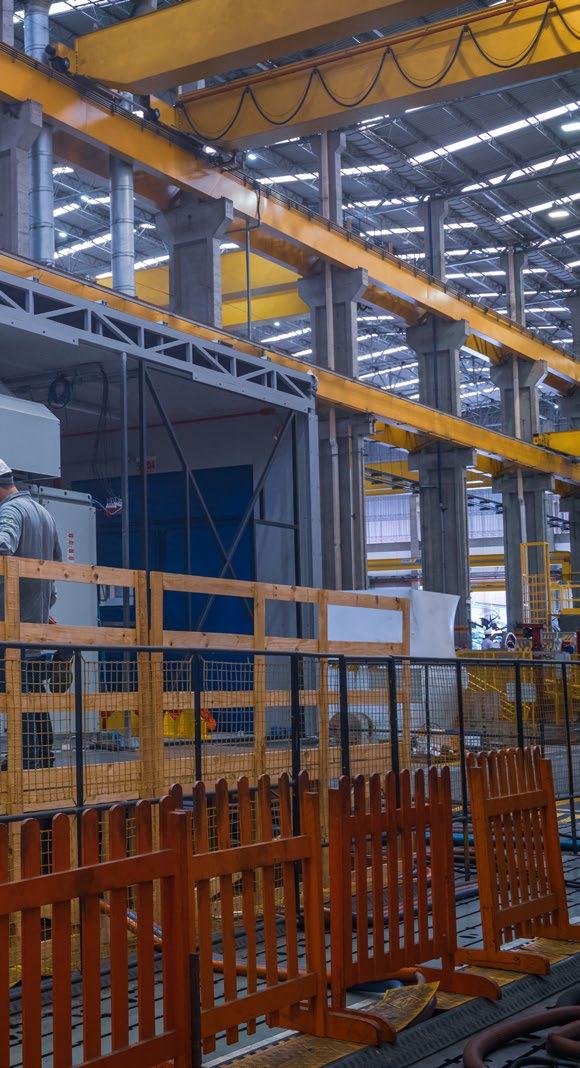

Ras Al Khair to Riyadh Water Transmission System
This large-scale transmission project spans 391 km of pipeline and delivers 1.2 million m³/day of potable water across the region. WEG’s scope included 30 water-cooled MVW01 drives (4160 V, 50°C), 30 W60 motors, and 10 standalone 1.7 MW motors (13.8 kV).
The integrated high-power drive systems ensure efficient long-distance water transport under extreme ambient conditions, representing a milestone in
high-capacity infrastructure for the Saudi Water Authority.
Canoas Lift Station, Bogotá, Colombia
The Canoas Lift Station handles over 6.4 m³/s of sewage, pumping it a vertical height of 51.6 metres. WEG provided a complete turnkey solution, including a 115 kV substation, vertical motors, and optimally matched variable frequency drives. The VFDs ensure reliable start and stop even under extreme hydraulic loads, enable smooth speed transitions, and continuously monitor operational parameters to support predictive maintenance and maximise system availability.
Cúcuta Metropolitan Aqueduct, Colombia
As part of the aqueduct’s expansion program, WEG supplied medium-voltage W60 motors (1,575 HP, 6.6 kV) and MVW3000 drives. The drives helped optimise pumping schedules and reduce line losses. Operators observed a smoother load management curve and reduced margin losses, enhancing hydraulic resilience under population growth pressure.
Operational advantages and lifecycle cost reductions
Energy savings are just the starting point. VFD-enabled systems reduce mechanical and thermal stress, improving the lifespan of bearings, couplings, shafts, and gaskets. The smoother ramp-up and deceleration avoid current spikes and mitigate harmonics, lowering electrical stress.
Furthermore, built-in diagnostics can flag anomalies (vibration, over-temperature, phase imbalance) before they escalate. This predictive insight reduces unplanned shutdowns and drives maintenance toward condition-based servicing rather than scheduled overhaul.
The broader impact: energy, water and sustainability
By optimising the energy consumption in water systems, VFDs contribute to lower greenhouse gas emissions and support corporate and municipal decarbonization targets. In regions where energy is largely generated from fossil fuels, each kWh saved directly reduces the carbon footprint of water operations.
Additionally, more efficient pumping means less pressure drop and leak stress, which can reduce water losses in distribution networks. VFDs thus contribute indirectly to reducing non-revenue water (NRW). In an era when every litre counts, optimised energy and hydraulic control become vital tools in water conservation.
Looking ahead: digital integration and Smart Water grids
As water systems evolve into smart grids, drives must go beyond motion control — they must communicate, predict, and adapt. WEG is leading this shift by embedding AI and machine learning into its solutions, enabling real-time optimisation and demand forecasting.
Future drives will integrate seamlessly with IoT, edge computing, and cloud platforms, allowing water facilities to proactively optimise energy use, reliability, and cost.
VFDs are not just improving operations — they are reshaping water infrastructure into smarter, more sustainable systems. For WEG, this evolution reflects a lasting commitment to innovation, efficiency, and resilience.
The net effect: lower total cost of ownership (TCO), higher availability, and better return on investment (ROI). Over a multi-year horizon, the payback period for a VFD installation in a water plant often falls within 2 to 5 years, depending on load profile and electricity cost. Retrofitting

MANAGING DIRECTOR AT CYBER READINESS
INSTITUTE
The integrity of water systems is both a public health and national security concern. Yet these essential systems have become increasingly soft targets in a rapidly changing cyber threat landscape. As treatment plants, distribution networks, and dams adopt digital tools to improve efficiency and reliability, they also expose themselves to new vulnerabilities that must be addressed with focus and collaboration.
Across the globe, utilities are linking systems through Supervisory Control and Data Acquisition (SCADA) technology, Internet of Things (IoT) sensors, and remote management platforms. These digital tools enable real-time monitoring and automation, helping operators manage resources more effectively. However, they also create additional entry points for cybercriminals and hostile actors seeking to exploit weaknesses in critical infrastructure.
Recent incidents in Norway, Poland, and the United States underscore the reality of these risks. In Norway, a water supply facility attack exploited outdated software and poorly segmented networks, disrupting operations and raising concerns about water quality. In Poland, hackers attempted to alter the chemical dosing systems that regulate chlorine levels, putting thousands of residents at risk. A similar event in a small U.S. town demonstrated how even small utilities are vulnerable. While these attacks were contained before causing physical harm, they highlight the urgent need for stronger cybersecurity protections in the water sector.
Our work with U.S. water utilities highlights the practical challenges many operators face in improving cyber readiness. Smaller utilities often rely on legacy equipment and have limited to no dedicated IT or cybersecurity staff. Many were designed for reliability, not resilience, leaving them open to unauthorised access or remote exploitation. Because digital controls directly influence physical operations, a successful cyberattack could have immediate, far-reaching consequences, contaminating water or disrupting supply.
Improving cybersecurity across the water sector requires a multilayered approach. Modernising infrastructure is essential, replacing unsupported or outdated systems with secure and well-maintained solutions. Network segmentation should sep-
arate operational technology from corporate networks and the wider internet to limit lateral movement in the event of a breach. Regular patching, access control and continuous monitoring can further reduce vulnerabilities and improve early detection. Yet technology alone is not enough, and often we see that budgets prevent organisations from being able to make such investments. There is hope, however, as technology alone is not enough, and there are steps organisations can take to improve their cyber resilience by looking at their processes and people. Many cyber incidents begin with phishing or social engineering. Training employees to recognise and report these attempts is one of the most effective defences. Every utility should have a clear, tested incident response plan to contain and recover from an event quickly while maintaining public trust.
"Every utility should have a clear, tested incident response plan to contain and recover from an event quickly while maintaining public trust"
Regulation and collaboration are equally important. Governments and industry regulators must establish and enforce minimum cybersecurity standards for critical infrastructure. International cooperation is also needed to share threat intelligence, develop best practices and coordinate responses. Cyber threats do not respect borders, and protecting the water sector requires consistent global engagement.
Cybersecurity in the water industry is about protecting communities, not just networks. As utilities modernise and embrace digital transformation, security must evolve alongside innovation. With thoughtful investment, cross-sector collaboration and a commitment to continuous learning, we can build the resilience needed to safeguard one of our most vital resources and ensure the utilities the public counts on remain secure, reliable and trusted.

SARAH TAYLOR SENIOR ENVIRONMENTAL ECONOMIST AT WRC GROUP
By 2030, global freshwater demand could exceed supply by about 40%, and roughly a quarter of people already live under extreme water stress. Water utilities feel this pressure every day: intermittent supply, sewer overflows, and rising expectations. Climate change is intensifying floods and droughts and driving sea-level rise, making many of yesterday’s plans unreliable. Some regions face floods that inhibit networks; others endure droughts that cut reliable deployable output.
As an environmental economist, I see two forces converging. Regulators and disclosures are shifting from outputs to proven outcomes - fewer days of restriction, fewer spills, cleaner rivers and beaches, nature impacts disclosed. And funders want measurable resilience and assets that cope with extremes.
That’s why water utilities should widen their strategy lenscatchment to coast. By “catchment to coast” I mean managing the whole journey of water - from headwaters and aquifers, along rivers and through cities and estuaries, to the sea - so supply, demand, and environment are planned, valued, and managed together. This is as much governance as engineering: work outside your asset boundary to form new partnerships on shared models and monitoring, and sequence spend so low-impact measures lead while higher-impact options are right-sized for the remaining risk.
On paper - think EU Water Framework Directive - management can run river-to-coast; in practice, delivery too often stops at the river with coastal work siloed. There is proof it can deliver: one UK utility works with farmers to cut nitrogen to a coastal harbour, improving bathing-water outcomes. But progress is patchy; it needs a stronger push with shared models, joined-up governance, and outcome-linked funding.
The ocean often enters the discussion when water utilities diversify supply via desalination. Even without desalination on your roadmap, the ocean still shapes your risk and operating conditions - from permits and hydraulics to source quality and asset life. Extreme storms pulse sediment and nutrients; surges can force outfalls to backflow; and sea-level rise can drive saltwater into aquifers and shift the salt–fresh boundary upstream, undermining surface-water quality unless managed.
What does targeted adaptation look like through a catchment to coast lens?
A pragmatic sequence often begins with closing the demand gap - leakage, efficiency, reuse, and recharge - so any coastal new build, such as desalination, is only used when necessary and sized for the shortfall that remains. Run a balanced portfolio: pair new capacity with maintenance, treat the ocean as a stakeholder, and invest early in understanding site-specific environmental risks - brine dispersion, energy footprint, and cumulative coastal effects.
Depending on local hydrology, exposure, and community priorities, utilities could consider using climate-risk models to anticipate surface-water changes and monitor groundwater for saltwater intrusion; managed aquifer recharge with advanced
"Catchment to coast is the mindset utilities need for the decade ahead: portfolios over projects and the ocean treated as a stakeholder"
treatment and strict monitoring; upgrading coastal pumps to reduce backflow during surges; work with partners to conserve and restore buffer-zone habitats; and integrating climate risk and defensible monitoring, reporting, and verification into capital plans so investments are right-sized, auditable, and improve receiving waters alongside reliability.
Catchment to coast is the mindset utilities need for the decade ahead: portfolios over projects, outcomes over equipment lists, and the ocean treated as a stakeholder, not an afterthought. You can’t push against the tide, so plan with it - start upstream, use integrated models to test your portfolio, right-size any new build for the residual gap, and show receiving waters improve. That’s how reliability rises, bills stay fair, and rivers, estuaries, and coasts recover alongside the services communities rely on.
The water industry manages one of the world’s most complex and vital infrastructures, an interconnected system that must remain secure, connected, and operational at all times. With deep expertise in access management and integrated security, ALCEA helps water utilities protect across their network, from source to tap.
Behind that mission lies one of the most complex and critical infrastructures in the world, spanning storage reservoirs, treatment plants, pumping stations, and an interconnected distribution network. It’s a system that never stops. Behind every valve, control room, and chemical storage area lies an ecosystem of assets that must stay secure and operational around the clock. It’s this invisible layer of protection - physical and digital - that keeps the entire network resilient.
These assets are often remote, widely dispersed, and vulnerable to a range of threats, including accidental or intentional contamination, vandalism, theft, increasingly sophisticated cyberattacks, and digital disruption.
Protecting people and infrastructure in today’s connected environment means staying ahead of evolving threats, as resilience is built, not fixed
As operations evolve, so do the risks. The growing interconnection between operational technology (OT) and information technology (IT) has blurred traditional boundaries, exposing critical systems to new points of entry and potential compromise. What once required physical access can now be targeted remotely, making visibility, integration, and control more important than ever.
Protecting water at every stage, from storage to treatment and distribution, requires more than vigilance. It demands resilience, compliance with strict regulations, and the ability to withstand extreme weather and physical threats.
We get it. The network is vast. Assets are scattered. Systems must communicate with each other and with you. As digital transformation accelerates, so does the pace and complexity of attacks. New technology brings opportunity, but also new vulnerabilities. In today’s environment, understanding these challenges and pain points isn’t just important; it’s essential for building trust and delivering uninterrupted service.

Every site, every person plays a role in keeping water infrastructure safe. Centralised visibility turns that responsibility into control

Because in the water sector, downtime isn’t an option. Safety, compliance, and continuity are intertwined and protecting one means protecting them all.
The challenge: a complex network that never stops
From source to storage, treatment to tap, every part of the water network is connected, and none of it can afford downtime.
But with that connectivity comes complexity. Water utilities often manage a patchwork of systems, including access control, CCTV, intrusion detection, and alarms, each from different vendors, operating on various platforms, and communicating in different ways. This fragmentation makes it difficult to see the full picture. Information gets siloed, alerts compete for attention, and operators are left piecing together data when what they really need is clarity.
The result? Slower operations. Fragmented visibility. Delayed responses when every second counts.
That’s why integration is no longer a luxury; it’s a necessity. A unified view of physical security, monitoring, and reporting empowers water companies with the control they need to enhance protection, streamline compliance, and improve operational performance. When systems talk to each other, response times shrink, blind spots disappear, and decision-making becomes proactive rather than reactive. Integration transforms complexity into coordination and coordination into resilience.
The shift: from fragmented systems to unified control
Digital transformation has redefined what resilience looks like. In today’s environment, data isn’t just helpful, it’s critical. The most effective water utilities are those that can identify issues and respond to them in real time.
That’s where unified management comes in. Bringing access control,
alarms, cameras, and intrusion detection into a single platform gives teams the ability to see the whole picture at once one interface, one source of truth.
It’s about replacing complexity with clarity. Instead of juggling multiple dashboards and logins, operators can monitor every site from one central point, gaining the situational awareness needed to make fast, confident decisions.
The impact is immediate and measurable:
Faster response: no switching screens. No second-guessing. Teams can detect, assess, and act on threats the moment they appear.
Operational efficiency: less time managing systems. More time managing outcomes. Automation and interoperability free staff from repetitive tasks and help them focus on what matters most.
Simplified compliance: automated reporting and full traceability make audits smoother, documentation easier, and oversight more transparent.
Continuity: a safer, smoother, more predictable operation that helps protect infrastructure and supports uninterrupted service.
Unified control also creates a foundation for innovation. With integrated systems, utilities can leverage analytics, AI, and predictive maintenance tools to anticipate issues before they escalate, turning data into foresight and foresight into resilience. The move from fragmented systems to unified management isn’t just a technical upgrade; it’s a strategic shift toward smarter, more sustainable operations that evolve with the threats they face.
A total solution isn’t just convenient; it’s the foundation for smarter, safer, and more sustainable operations built on efficiency and trust

The value: partnership built on understanding
Absolute security starts with understanding. Water utilities operate at the intersection of technology, regulation, and public trust, where reliability isn’t optional and precision leaves no room for error. Every decision made has a direct impact on safety, compliance, and the confidence of the communities they serve.
That’s why expertise matters as much as equipment. Designing secure, efficient operations requires more than just a product; it takes a partnership. A true partnership goes beyond supplying technology; it means understanding the environment in which it will live, the people who will use it, and the challenges they face every day. It starts with listening, planning togeth-
er, and developing solutions that reflect reality on site, not just theory on paper. Because no two facilities are the same, and no two risks are identical.
Every successful project begins with a conversation. From consultation and design to installation and long-term support, each step is about turning complexity into clarity and data into confidence. Collaboration ensures that systems are not only robust but also adaptable, capable of evolving as technology advances and threats change.
Behind the scenes, ALCEA and ASSA ABLOY bring decades of experience in securing critical infrastructure. Their combined expertise in access management, integration, and physical security helps utilities achieve a higher standard

of resilience; one built on trust, transparency, and long-term collaboration.
But real success isn’t measured by technology alone. It’s measured by peace of mind, the confidence that every process and every site is protected. It’s when water companies can focus on what matters most: delivering trust, one drop at a time.
Building trust for a sustainable future
Water is essential, and so is the responsibility that comes with managing it. Clean water, effective treatment, and environmental protection are the foundations of a sustainable future. For water utilities, that means securing every part of the network while delivering uninterrupted service to the communities that rely on it.
By connecting systems, people, and data, water companies can strengthen both security and sustainability, protecting the flow today and for generations to come. Unified control enables smarter energy use, reduces waste, and supports predictive maintenance, ensuring that assets last longer and resources are used more efficiently. When operations are transparent and traceable, environmental responsibility and operational resilience go hand in hand.
Behind every resilient network is collaboration. It’s built by those who design it, manage it, and protect it together. Engineers, operators, and technology partners each play a vital role in creating systems that are not only secure but adaptable, ready to meet the challenges of a changing world.
When we work in step, we don’t just make infrastructure smarter. We make it stronger. Together, we can ensure that every decision taken today contributes to a safer, cleaner, and more sustainable tomorrow.
Let’s keep the water industry moving forward, secure, connected, and uninterrupted, together.
Every project begins with a conversation, understanding how to make daily operations safer, simpler, and more seamlessly connected
Located on the island of Funen, Odense has a rich history that stretches back over 1,000 years. For centuries, Denmark’s third-largest city has been synonymous with commerce and trade. It was home to the country’s biggest shipbuilding facility until 2012, and today, the city’s industrial parks teem with high-value manufacturing activity. Now, Odense can tell a new chapter in its story.
It started off in 2009 with Danish water utility company VandCenter Syd (VCS) setting an ambitious goal: to make its largest facility, Ejby Mølle Water Resource Recovery Facility (WRRF), energy-positive within five years. Fast forward to today, VCS’s quiet ambition has delivered one of Europe’s most impressive energy transitions. Formerly a large-scale consumer of power from the grid, it now produces significantly more energy than it consumes, while meeting stringent effluent nutrient requirements. This transformation happened within a shorter timeline and with a smaller-than-usual investment outlay. The site not only powers itself but now plays an
Denmark’s broader national climate ambitions provided a supportive backdrop, but the progress at Ejby Mølle was locally driven
active role in Odense’s local energy mix, exporting renewable electricity and heat. All of this signals a broader recognition of utilities as enablers of decarbonisation and resilience within city-wide climate strategies. Denmark’s broader national climate ambitions provided a supportive backdrop, but the progress at Ejby Mølle was locally driven. It was a product of committed leadership and strong technical alignment. The plant’s success is a reminder that innovation is often most effective when implemented at the operational level, close to the challenge itself.
How did Ejby Mølle gain energy independence so quickly?
The answer is straightforward: a combination of visionary leadership, technical expertise, global collaboration, and continuous innovation was central in converting an ageing treatment plant into a world leader in energy efficiency. The result is not just a better plant, but a redefined role for utilities in supporting local decarbonisation efforts.
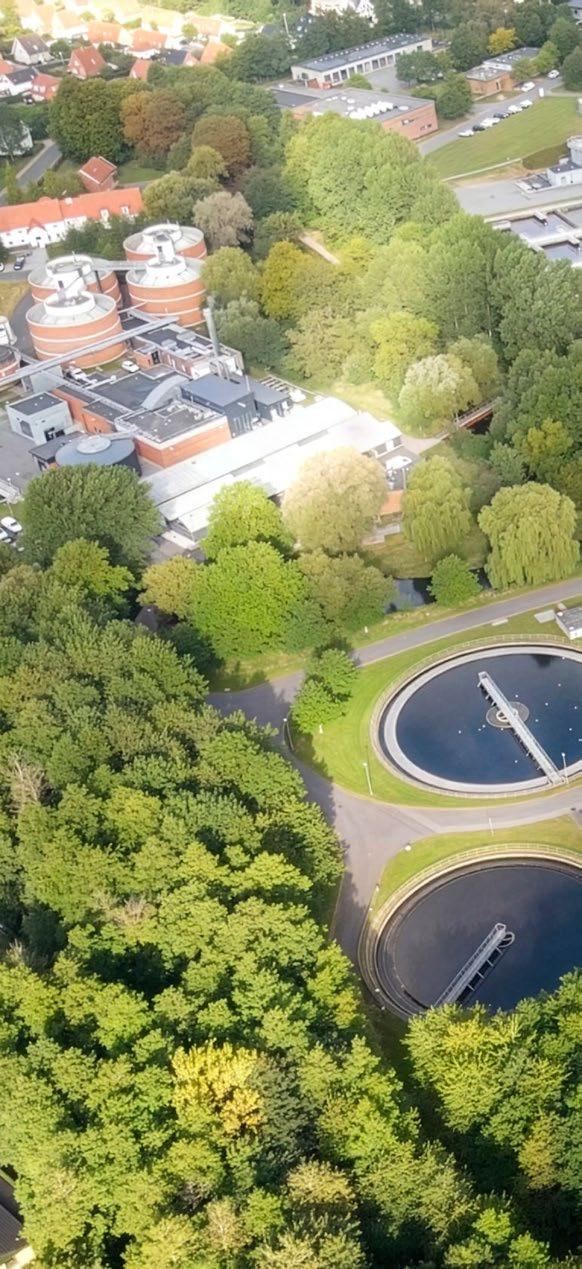
A phased approach to self-sufficiency
However, the project’s journey was not always straightforward. From the outset, it faced significant challenges. Wastewater treatment is a high-cost, energy-intensive public service, accounting for more than 1% of total electricity consumption in Europe. WRRFs also emit high greenhouse gas levels, especially nitrous oxide, which is approximately 300 times more potent than carbon

dioxide. Additionally, most utilities of Ejby Mølle’s size achieve only 40–50% energy self-sufficiency, with full energy positivity often taking decades and requiring major capital investment. For a utility serving a population of more than 400,000, any major upgrades also had to be made without service interruption, further complicating the task. As one of Denmark’s oldest facilities, Ejby Mølle’s infrastructure was ageing, and there were
strict nutrient limits in its discharge into a local river. In response, VCS set out to redefine the parameters of energy efficiency projects, without compromising environmental compliance.
By 2012, the utility’s own measures saw Ejby Mølle attain 77% energy self-sufficiency. Many of these early improvements were low-cost and involved optimising existing systems, proving that innovation doesn’t always require large
capital outlay. The phased approach gave VCS the flexibility to assess results after each stage and build support incrementally, both internally and with external stakeholders.
Achieving full energy positivity required the support of an outside partner. VCS reached out to Jacobs, on the back of a technical paper the solutions provider had developed about energy optimisation. Initially, the collaboration focused on the development of modelling and diagnostics that simulated every component of the plant – from nutrient removal and sludge processing to biogas generation – allowing efficient and thorough evaluation of alternative operating and facility upgrade scenarios.
The use of plant-wide modelling gave both parties the ability to test assumptions, run scenario planning and avoid costly missteps during implementation. This methodology became a foundation for every technical decision made over the following decade. It enabled the team to prioritise interventions based on measurable return, not assumptions. By using real operational data, the team could better understand interdependencies across the plant, an essential step in moving from partial gains to full energy self-sufficiency. Rather than relying on isolated upgrades, Jacobs and VCS committed to holistic, long-term improvements.
These measures focused on process changes to reduce energy consumption and increase power generation. One of the first steps involved re-routing organic
The plant’s success is a reminder that innovation is most effective when implemented at the operational level, close to the challenge itself
treatment is a high-cost, energy-intensive public service, accounting for more than 1% of total electricity consumption in Europe
carbon in wastewater from early treatment stages to anaerobic digesters, producing methane-rich biogas while reducing power demand in subsequent treatment. This renewable energy powers a combined heat and power system that delivers electricity to the facility and heats local homes and buildings via a distribution network spanning more than 20 kilometres from Ejby Mølle. These changes improved energy efficiency, reduced operational risk and created greater flexibility in plant performance.
VCS also piloted a full-scale membrane aerated biofilm reactor (MABR) system – one of the first in Europe. This technique diffuses oxygen directly through membranes into biofilms, significantly cutting energy costs and facility footprint. To enhance capacity while reducing energy use, Jacobs recommended granular deammonification, a biological process that supports efficient ammonia removal.
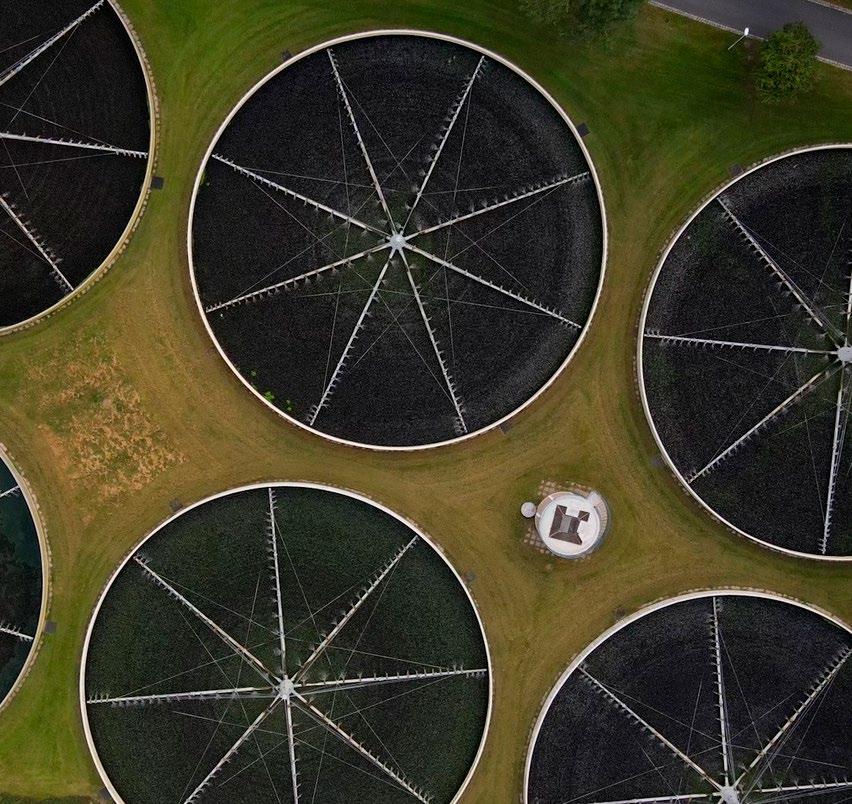
The use of plant-wide modelling enabled both parties to test assumptions, plan scenarios, and avoid costly missteps during implementation
Most recently, Jacobs has deployed its proprietary microbial hydrolysis process (MHP) at Ejby Mølle. Developed in collaboration with Brigham Young University, MHP converts hard-to-digest organics into acids, which are processed into biogas, increasing energy generation by more than 25% while reducing biosolids yields. This reduces the volume of material transported or disposed of offsite, lowering cost and environmental impact. It reflects a broader shift toward resource recovery in wastewater management, not just waste removal. With MHP, the facility can extract more value from the same waste stream, reinforcing wastewater’s role in circular economy models. The upcoming full-scale implementation of MHP, scheduled for completion in 2026, is expected to take
energy performance at Ejby Mølle even further – making the facility one of the most advanced in Europe.
Supplying the grid with renewable energy
Ejby Mølle achieved energy neutrality in 2013, two years ahead of target, with a capital investment of just $2 million. VCS and Jacobs have also overseen the facility’s transition from a major electricity consumer to a power self-generator. By 2015, Ejby Mølle was producing 150% of its energy requirements. The excess electricity is sold to the local grid, with its thermal energy distributed to homes and commercial buildings across Odense. Efforts by VCS didn’t end there: Ejby Mølle now also recovers thermal energy from treated effluent, owned and operated by sister utility Fjernvarme Fyn. This addi-
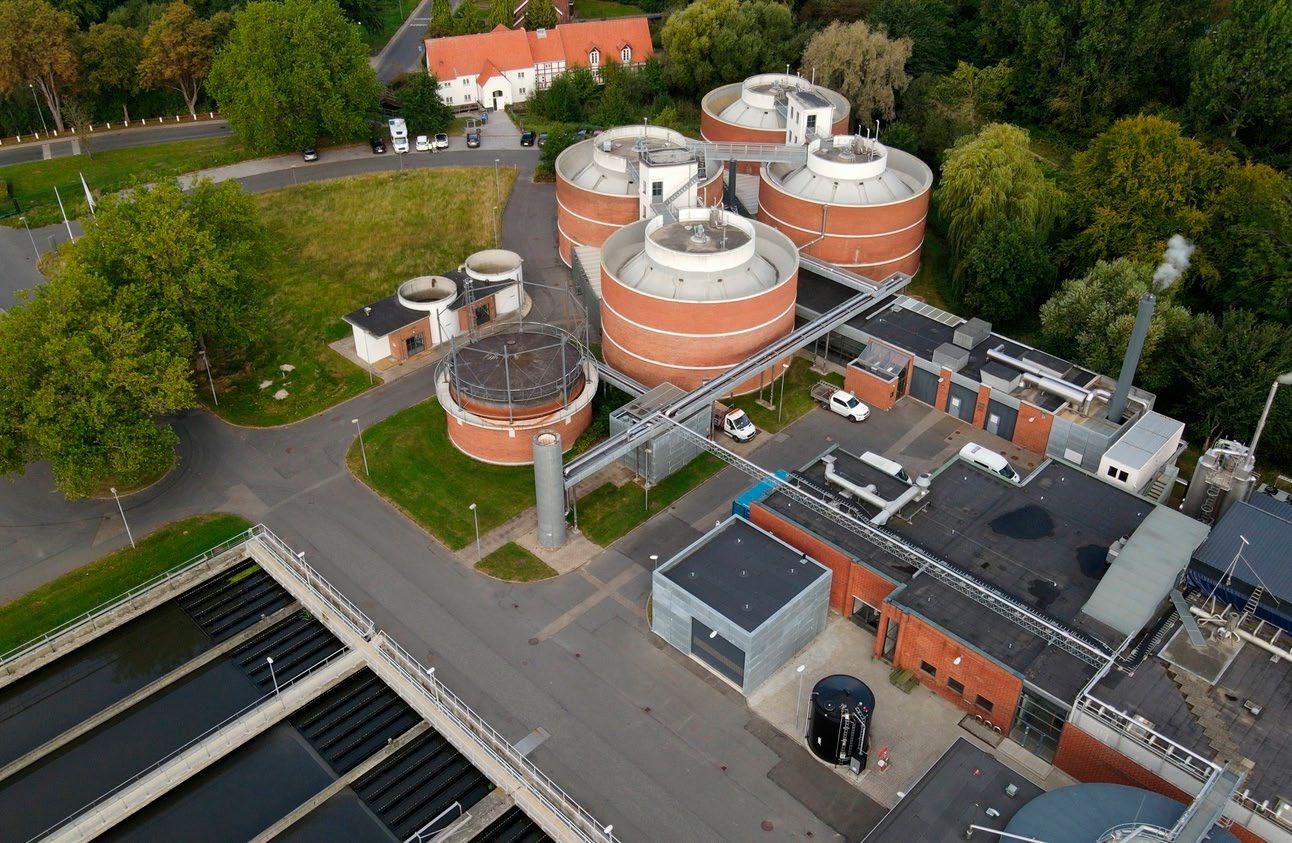
tional recovery work saw the plant reach an astounding 330% net energy self-sufficiency in 2024. In practice, this means the plant produces more than three times the energy it consumes, transforming a traditional treatment plant into a net contributor of renewable energy.
Importantly, the project meets or exceeds all environmental regulations. The plant consistently achieves nitrogen concentrations below 6.0 mg/L and phosphorus below 0.5 mg/L, without needing to import external carbon sources. This compliance is maintained year-round, despite seasonal and load variability, highlighting the resilience of the upgraded system. Energy, emissions and effluent targets have been met without compromising on cost-effectiveness, safety, or operational reliability. The plant’s
performance shows that ambitious environmental goals can be met within realistic operational budgets when data and collaboration are at the core.
The transformation of Ejby Mølle shows that legacy facilities can lead the way in the clean energy transition. So much so that Ejby Mølle has received global recognition, including a Silver Award in the International Water Association’s Project Innovation Awards and Water Project of the Year in the 2025 Sustainability Delivery Awards. The project creates a benchmark for other utilities looking to decarbonise. It shows that instead of being a waste byproduct that needs to be treated, wastewater can become a valuable source of renewable energy.
Ejby Mølle is also a testament to what happens when strong partnerships lean into innovative processes to realise ambitious goals. The result is a model for clean energy that can help to power the cities of the future. As the global water sector looks for ways to reduce climate impact, Ejby Mølle offers a demonstrated, operational model that can be scaled and adapted in cities around the world.
With MHP, the facility can extract more value from the same waste stream, reinforcing wastewater’s role in circular economy models
Southern Water has enhanced its handling of pump station alarms through the adoption of an AI-powered alerting system. In partnership with StormHarvester, the utility shifted from being reactive to proactive in its pump performance management, improving response efficiency, protecting the environment, and giving staff new confidence in the alerts they receive. The result is a network that is smarter, safer, and far more efficient – one alert at a time.
For years, Southern Water’s sewer network was monitored by static hi-hi alarms triggered whenever wet-well levels rose above a fixed threshold. During heavy rainfall, dozens of pump station alarms could sound at once, yet there was little insight into which sites truly needed attention. With no intelligent filtering, the operations team faced a barrage of alerts – most of them non-critical. Staff became overwhelmed and uncertain which alarms warranted action, undermining confidence in the system. Critical issues sometimes went unnoticed until a pump had already failed and an incident (like an overflow) was underway. This left Southern Water stuck in reactive mode: crews were dispatched after failures (often outside normal hours), leading to disruptive emergency callouts, higher costs, and increased operational strain. The need for a smarter, more discerning monitoring approach was clear.
For years, Southern Water’s sewer network was monitored by static hi-hi alarms triggered whenever wet-well levels rose above a fixed threshold
AI solution: smarter pump station alerts Southern Water’s answer was to deploy StormHarvester’s Pump Station Alerting solution – a cloud-based platform that brings real-time intelligence to pump monitoring. This system continuously analyses each pump’s start/stop patterns, run times, and wet-well water levels, while correlating them with live local rainfall data to discern normal behaviour from anomalies. By leveraging machine learning, the platform learns what “normal” looks like for every station and can detect subtle deviations that signal trouble long before a pump fails. When the AI spots an anomaly, it issues a descriptive alert explaining the likely issue and context, rather than a generic high-level alarm. By filtering and interpreting the raw telemetry in this way, StormHarvester’s platform turns a flood of data into a trickle of actionable insights that operators can trust. Crucially, the alerting logic accounts for weather conditions. Under heavy rain, rising water levels are expected and do not trigger false alarms. The AI effectively “knows” when a spike in pump activity is justified by rainfall and when it is truly abnormal. This integration of hyper-local weather
data prevents the nuisance alarms that previously overwhelmed staff, ensuring that when an alert comes through now, it likely signals a real issue in need of attention. As StormHarvester describes it, Pump Station Alerting uses simple pump telemetry combined with rainfall data and AI analytics to detect a wide range of


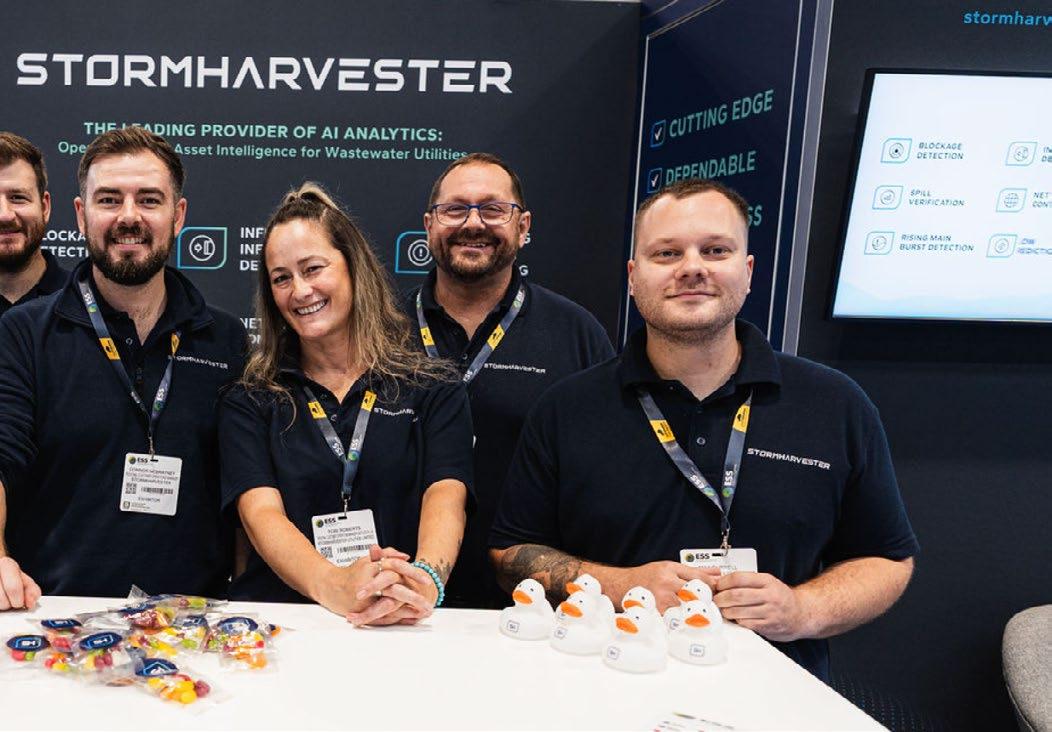
potential pump performance problems early on. For Southern Water, this meant moving from hindsight to foresight in network operations – the alarm flood has been replaced by a concise stream of credible alerts.
Implementing the new AI system across Southern Water’s vast territory (spanning Kent, Hampshire, Sussex and beyond) was an ambitious endeavour, yet the rollout was remarkably swift. Thousands of pumping stations were onboarded each Southern Water
By leveraging machine learning, the platform learns what “normal” looks like for every station and can detect subtle deviations
week during deployment. In fact, most sites became “alert-active” within about two weeks of project kick-off. Even stations that initially needed sensor metadata updates or configuration tweaks were integrated shortly thereafter. StormHarvester’s engineers worked hand-in-hand with Southern Water’s operations staff to ensure a smooth transition. Daily check-in meetings were held during the first month to embed the technology into routine workflows and fine-tune the alert parameters in real time. This close collaboration helped build trust in the new alerts and transferred know-how to Southern Water’s team. After the intensive launch period, the cadence eased to weekly check-ins as the platform became part of day-to-day operations. By actively involving control centre operators in the process, the system was never a mysterious “black box” – it became a familiar tool that staff could understand and rely on. The rapid, well-supported rollout meant Southern Water began seeing ben-
Pump Station Alerting uses pump telemetry, data, and AI analytics to detect a wide range of potential pump performance problems early on

efits almost immediately, with minimal disruption to its existing processes.
The impact of the AI alerting solution has been transformative. Southern Water has effectively moved from a reactive posture to a proactive one, using data-driven foresight to fix problems before they escalate. Instead of reacting to pump failures or sewer overflows after the fact, teams can now intervene at the first sign of a performance anomaly – often during normal working hours. Early warnings of developing issues have greatly reduced the frequency of middle-of-the-night emergencies. Machine learning-based dynamic thresholds (which adjust to weather and each station’s typical performance) are catching subtle faults that previously slipped through the cracks. Operators now receive alerts for the kinds of problems that once went unnoticed until they caused a failure. These alerts flag a wide range of underlying issues that can occur in pumping stations, enabling crews to address them proactively. For example, the system has identified issues such as:
Partial blockages or pump clogs (e.g. due to wet wipes, rags or debris restricting flow).
Worn or damaged pump impellers and components.
Pumps not properly seated or experiencing air lock issues.
Excessive buildup of debris in wet wells affecting capacity.
Stuck or faulty non-return valves (backflow prevention valves).
Tripped pump fuses or other electrical/control faults.
Failing level sensors providing incorrect readings.
Burst rising mains
Each alert comes with context and a likely cause, which eliminates guesswork and ensures the response is targeted to the real issue at hand. After resolving initial data quirks and fine-tuning the system’s sensitivity, Southern Water’s alert “hit rate” – the percentage of alerts that lead to a verified issue – climbed dramatically. About 88% of alerts now correspond to real, actionable problems, meaning nearly nine out of ten times the alarm is worth staff attention. This
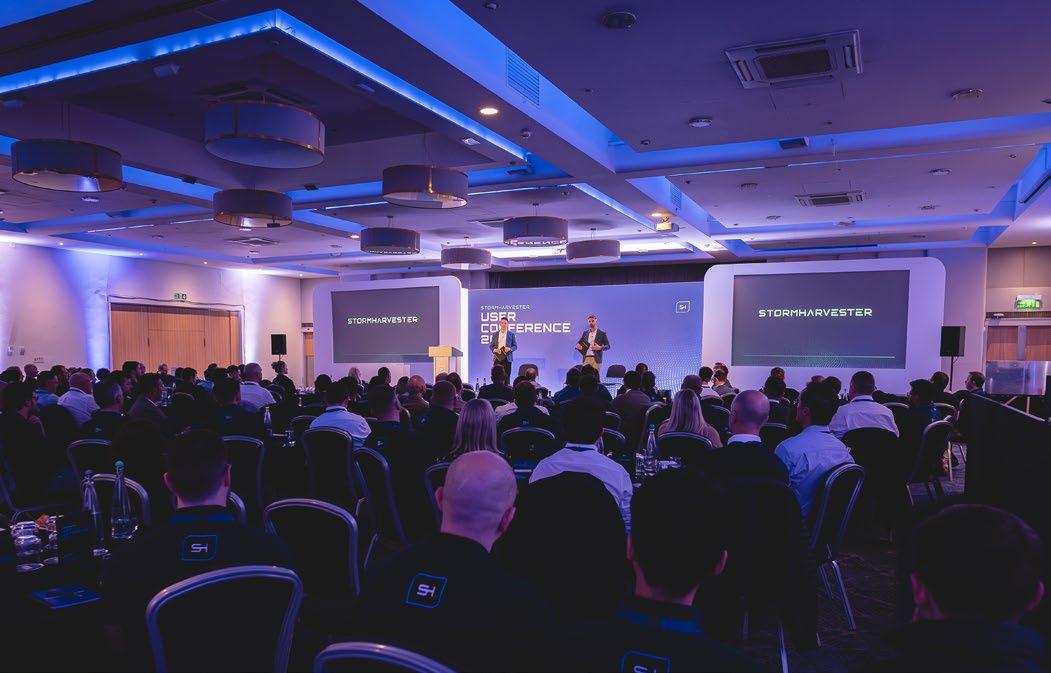
high accuracy (far beyond the old hi-hi alarms) has given operators confidence that when the system pings, something is genuinely amiss. As the control centre saw the AI consistently point them to actual faults, they grew to trust the alerts and even began actively using StormHarvester’s pump station dashboard for real-time visibility. Instead of feeling overwhelmed, the team can clearly see what is happening at each site and prioritise work accordingly.
Southern Water’s leadership has noted qualitative improvements as well. Richard Martin, Head of the Operational Control Centre (Waste) at Southern Water, explained that their previous monitoring platform struggled with an “overwhelming amount of data waste” that was difficult to translate into actionable tasks. However, “By leveraging StormHarvester’s advanced machine learning and artificial intelligence capabilities, we have been able to significantly reduce this waste, enabling our teams to focus on meaningful, high-impact jobs. This shift has not only enhanced the quality and relevance of the insights we receive
By involving control centre operators, the system was never a mysterious “black box”, but a familiar tool that staff could understand
but also improved operational efficiency across the board,” Martin said.
He further praised the system’s user-friendly design, noting that StormHarvester’s intuitive interface and streamlined workflows have empowered staff to make faster, better-informed decisions. In short, the technology has improved both the precision of the utility’s data and the productivity of its people.
One real-world example illustrates how these smarter alerts avert problems. In June, StormHarvester’s system detected that Pump 2 at one wastewater pumping station was taking longer than usual to drain the wet well after it started. This subtle change triggered a “pump running longer than normal” alert for the operations team. Trusting the AI, the team dispatched a maintenance crew to investigate. Upon inspection, they discovered that Pump 2’s impeller was damaged and a soft blockage –a mass of rag debris and even a brick –was partially obstructing the flow. These issues were causing the pump to struggle. The crew promptly pulled the pump, cleared the blockage, and
repaired the impeller. Within a couple of days, Pump 2’s performance returned to normal, as confirmed by the telemetry on StormHarvester’s dashboard. A potentially serious pump failure or sewer overflow had been averted. What had started as a slight performance dip (invisible to legacy alarms) was caught by AI and translated into an actionable maintenance task. In the past, that minor clog might have gone unnoticed until it grew into a major incident – but now it was resolved before customers or the environment felt any impact.
Southern Water’s journey is a compelling case of turning an “alarm flood” into a manageable stream of intelligence. By combining simple pump telemetry with weather data and AI analytics, the utility is now getting the right alert at the right time instead of an indiscriminate torrent. The results speak for themselves: alert accuracy has soared (nearly nine out of ten alerts are valid), response times are faster, environmental incidents are fewer, and staff are empowered rather than overwhelmed. This project has set a new benchmark for what proactive operations can look like in the water industry. By embracing StormHarvester’s innovative solution, Southern Water has not only solved a persistent alarm fatigue problem – it has created a smarter, safer, and more efficient way to run a wastewater network, one alert at a time.

MANAGING DIRECTOR, PRIVATE EQUITY AND INFRASTRUCTURE INVESTMENTS, WATEREQUITY
OPINION
Rare earths, lithium, and cobalt dominate headlines today for their role in powering semiconductors, AI, and EV batteries. Yet, water — the critical enabler of these same technologies — remains largely overlooked. Chip fabrication consumes millions of gallons of water daily; AI data centres rely on water-intensive cooling; lithium extraction demands significant volumes. Ironically, many regions rich in critical minerals are also poor in water security. Climate-driven shifts in rainfall and rising temperatures, combined with declining water storage and lack of access to clean water, could shrink median GDP in high-income countries by 8% and in lower-income countries by 10–15% by 2050 — threatening supply chains and the resilience of local communities that depend on them.
Water supports over 60% of global GDP, including agriculture, energy, health, manufacturing and technology. Yet, according to the World Economic Forum, the sector receives less than 1% of climate-tech investment. If minerals are the hardware of the future, water is the operating system: powering progress, but chronically underinvested and dangerously close to crashing.
Private investors pour billions into water-dependent sectors, but only millions into water itself. Why? Water lacks visibility. Despite its ubiquity, or maybe because of it, water remains invisible. It’s not traded on global markets and is often perceived as a stagnant public good rather than a strategic asset. Its infrastructure is fragmented and localised, making it harder to scale global investment narratives. And while climate volatility makes water risk a near certainty, many investors still treat it as a peripheral risk.
This is a strategic blind spot, and as often noted in broader climate resilience discussions, “an unavoidable opportunity”. Water will be one of the first and most acute mediums through which climate disruption is felt, whether it’s scarcity, excess or volatility. Without investment, these disruptions will cascade into economic losses across sectors.
The World Bank estimates a $7 trillion global water infrastructure gap by 2030. As governments and corporates elevate water from niche to strategic priority, policy and regulatory frameworks are maturing to enable greater private participa-
tion. This is driving investable models with scalable revenue and measurable outcomes — and positioning private equity to help close the gap through capital, innovation, and speed.
Water infrastructure today goes beyond the pipes and pumps historically associated with the sector. It includes smart technologies like IoT sensors, AI-driven leak detection, and decentralised systems. Private equity is fuelling innovation through Water (and Wastewater)-as-a-Service models, shifting from centralised asset ownership to modular service delivery.
WaterEquity’s Water & Climate Resilience Fund demonstrates how private equity can help address global water challenges. With over $100 million raised, the fund targets water and wastewater infrastructure in emerging markets, where the
"If minerals are the hardware of the future, water is the operating system: powering progress, but chronically underinvested"
water investment paradox reveals both the greatest need and the most transformative opportunity for impact.
The Fund’s first investment, a $5 million commitment to SunCulture in Kenya, supports solar-powered water pumps and drip irrigation systems for smallholder farmers. SunCulture improves water access, reduces emissions, and boosts farmer productivity and earnings. Customers report saving about 17 hours per week compared with manually fetching water — resilience in action that is climate-smart, community-driven and commercially viable.
Water is no longer a niche concern; it’s a necessity. That it still receives a fraction of climate investment should be a wakeup call. As climate risks intensify and supply chains strain, the question is no longer whether to invest in water - it’s how fast we can mobilise capital to do so.
PORTRAIT OF A CHANGEMAKER: IN TRIBUTE
GLOBAL LEADER IN THE DEFENCE OF THE HUMAN RIGHTS TO WATER AND SANITATION

The international water community mourns the passing of Catarina de Albuquerque, one of the most influential voices in championing water and sanitation as fundamental human rights. A Portuguese lawyer and human rights expert, in 2008, she became the first United Nations Special Rapporteur on the human rights to safe drinking water and sanitation, playing a pivotal role in the historic 2010 UN General Assembly resolution that officially recognised these rights.
From 2018 until her passing, she served as the CEO of Sanitation and Water for All (SWA), where she strengthened collaboration among governments, international organisations, civil society, and the private sector to advance progress toward Sustainable Devel-
opment Goal 6. Her inclusive approach emphasised governance, equity, and accountability as cornerstones of public policies on water and sanitation.
Throughout her distinguished career, Catarina de Albuquerque received numerous honours for her commitment to human rights, including the Gold Medal for Human Rights from the Portuguese Parliament and the Order of Merit awarded by the President of Portugal. With a rare combination of legal rigour, leadership, and empathy, Catarina de Albuquerque leaves behind a legacy that transcends borders — that of a tireless advocate for water and sanitation as essential human rights for the dignity and development of all people.
Z Jean-François Allard, Director Pre-Sales EMIA Utilities & Communications
Sicily and Italy are the most extreme examples of a problem facing Europe's water systems: leaks. Italian cities lose a staggering 42% of their water to them, making the country the worst performer in Europe. On average, roughly 25% of treated water in the EU is lost before it reaches consumers. In the UK, that figure is about 19%, or 2.7 billion litres a day. The European Commission is calling for a 10% reduction in water use by 2030, largely through leak reduction.
This problem also reflects the complex reality water services face: their systems are old, rules are tightening and staff are retiring rapidly. In some utilities, up to half of the field and operations personnel could retire within 15 years.
At the same time, external pressures are increasing. Utilities must filter out microplastics, monitor emerging contaminants and prepare for more frequent droughts and floods. The cost of energy and chemicals has also risen sharply since 2021.
The result is a sector that must do more with rising costs and a shrinking workforce. Digital tools can help meet the moment, but they need to be rapidly effective, cost-efficient and can't create new work.
In this article, we present a four-pillar strategy that meets these criteria and has been implemented, fully or in part, by several major operators across the continent. It relies on several solutions within Hexagon’s portfolio that address these operational and regulatory challenges holistically, from asset management to compliance monitoring.
The foundation: establishing a single operational record
Water companies typically operate with very fragmented and siloed systems. Many utilities still depend on paper logs, spreadsheets or custom applications that don't communicate with each other.

"When the well is dry, we'll know the worth of water," Benjamin Franklin famously noted. This resonates particularly in Sicily, where wells have dried up this summer, forcing residents to buy large tanks to hoard water.
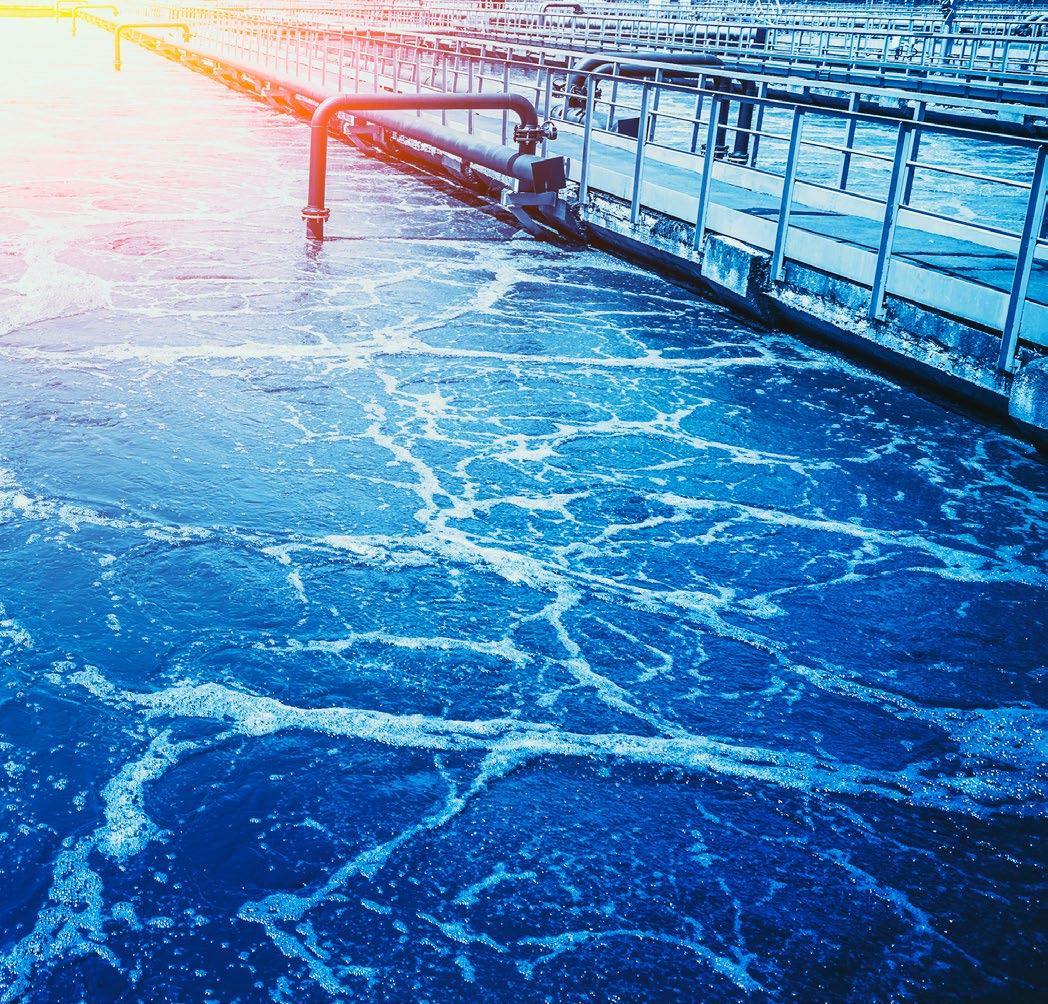
Information often varies in granularity, completeness and accuracy.
This fragmentation leads to several consequences.
The primary one is inflated maintenance budgets. At a wastewater treatment plant, where maintenance typically accounts for 15% to 25% of total operational costs, poor data management carries significant direct costs.
This number doesn't even account for indirect costs, such as the time wasted by maintenance teams acting on inconsistent or outdated information. This is particularly detrimental when an incident occurs, as it leads to slow, ineffective responses and costly repairs. Lastly, when regulators request evidence of maintenance or investment, staff must extract
and reconcile data from several systems, a process that can take days.
A unified asset and maintenance platform addresses these gaps. A powerful combination integrates a cloud GIS, such as HxGN NetWorks, with an Enterprise Asset Management (EAM) platform. This connects geospatial network data with asset condition and maintenance information to provide a single operational view of the network.
Take the example of Milan, one of Italy’s best-performing areas for drinking water loss. Gruppo CAP, which manages water and wastewater services for more than two million people around the city, moved from spreadsheets and paper records to a single asset management system. Using Hexagon’s HxGN EAM, the
Italy is the most extreme example of a problem facing Europe's water systems: leaks. Italian
cities lose 42% of their water to leaks
company consolidated all equipment, maintenance and field data. This shift provided a single view of the network and allowed the utility to prioritise repairs and investments based on asset performance.
This work is foundational; without it, teams across the companies are pouring their energy into broken processes and might end up too busy to improve.
Taming alarm systems and accelerating response
Delays in identifying and repairing leaks are also often a symptom of poor coordination. Many control rooms still rely on radio calls, paper maps or static GIS displays. A pressure drop may trigger hundreds of alarms and leave operators to triage manually.
Real-time network management systems can shorten that cycle. HxGN InService combines network modelling, telemetry and mobile workforce management. When a pressure anomaly occurs, the system maps the affected area, identifies isolation valves and locates the nearest crew. Dispatchers send instructions
At a wastewater treatment plant, where maintenance accounts for 15% to 25% of total operational costs, poor data management carries direct costs
External pressures are increasing; utilities must filter out microplastics, monitor emerging contaminants and prepare for more droughts and floods
directly to tablets, which reduces the time from alarm to on-site response.
This integration of data and dispatch can cut incident duration from hours to minutes, which makes a significant financial difference. It also produces a full record of actions taken, useful for internal review and regulatory reporting. For utilities facing stricter service continuity targets, such coordination is one of the few practical ways to meet performance metrics without expanding staff.
Digitising routine operations (without adding complexity)
Another area to examine for freeing up time and resources is routine documentation and daily operational processes. Every day, hundreds of operators fill in inspection sheets, shift logs and event reports, often by hand. While these records are crucial for safety and compliance, they're cumbersome to process. Information may sit in folders for days before review, making it less useful for decision-making. That's a shame because, when this information is effectively digitised and accessible, it can prove a gold mine to analyse and improve work processes.
That's why several utilities have replaced paper with structured electronic logs. At a major utility in the UK, Hexagon’s j5 Operations Management was introduced to standardise how events, handovers and instructions are recorded.
Operators now enter data into a single digital logbook that updates in real time across sites. Escalation steps are embedded in the software, ensuring that serious incidents trigger immediate notification to supervisors.
This kind of standardisation matters for two reasons. It enforces consistency across shifts and locations, and it creates usable data for trend analysis. Instead of aggregating handwritten forms, managers can pull incident counts, maintenance intervals or near-miss reports directly from the system.
A backbone that makes compliance an integral part of operations
This consistency also matters at a time when operators face a growing compliance burden. 2024 saw a sweeping revision of the Urban Wastewater Treatment Directive (UWWTD), which was positively received by the industry for its

Video management tools like Hexagon’s
Qognify record physical incidents, while j5 logs operational actions and HxGN EAM tracks maintenance
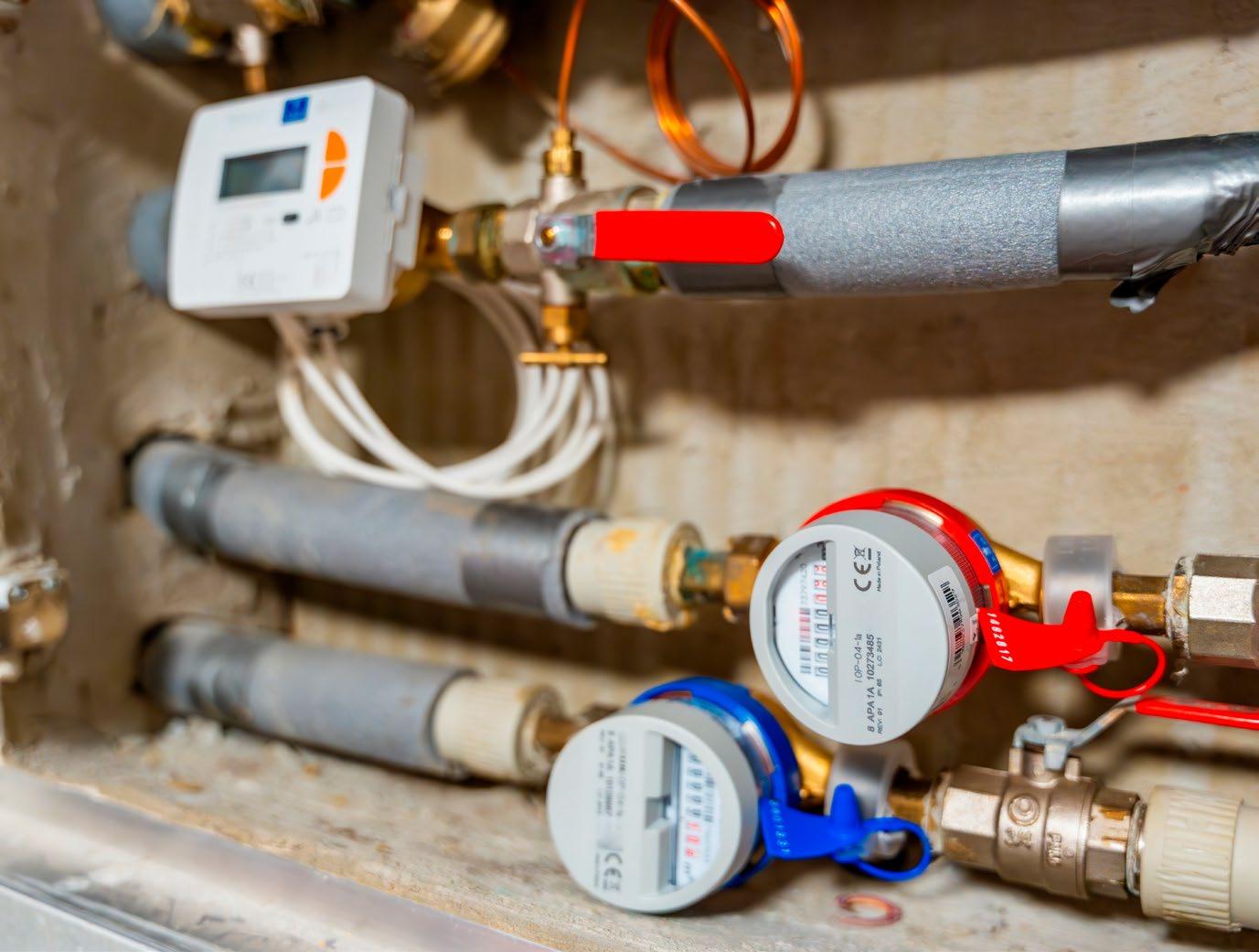
extension of the Polluter Pays Principle. However, it also imposes obligations on building and operating assets for quaternary treatment, increasing sampling and monitoring, providing tariff payers with compliance and cost data and achieving energy neutrality.
And the UWWTD is not the only text being revised. For example, the NIS2 directive, which covers drinking water and wastewater as essential services, requires rapid incident response and reporting and detailed recovery plans.
This regulatory context largely points to the same direction: operators where compliance is a cumbersome manual process stand to lose and spend an ever-increasing amount of time compiling
Beyond regulation, a complete operational record allows managers to analyse the cost and frequency of incidents and improve risk assessment
data. Manual reporting cannot keep up with the pace, but integrated digital systems can.
Consider leaks and the obligation to report performance publicly. Video management tools like Hexagon’s Qognify record physical incidents, while j5 logs operational actions and HxGN EAM tracks maintenance. Together, they form a verifiable timeline of events. For instance, if an alarm leads to a shutdown, the sequence, from first alert to restart, can be automatically reconstructed.
Beyond regulation, a complete operational record allows managers to analyse the cost and frequency of incidents and improve risk assessment. With intense public scrutiny of spills and overflows, au-
tomatic traceability reduces both administrative burden and reputational exposure.
This example, like the others in this article, points to the same truth. For water operators, the current context offers a way up and a way down.
The way down is to keep pouring water into already leaky buckets: fragmented systems, maintenance teams flying blind, manual data consolidation feeding a growing compliance burden. The way up is to use a solid digital foundation to improve processes, recover margins and simplify compliance. As the example of Sicily shows, what’s at stake is not only the financial solvency of utilities. It’s also the ability to maintain service continuity and an affordable water supply under stress.

On September 30, Bentley Systems and Smart Water Magazine hosted the final session of the three-part Smart Water Cities webinar series: The Urban Blueprint: Why Water Must Lead the Smart City Conversation. The discussion brought together three experts with complementary perspectives: Cecilia Correia, Global Water Industry Solutions Strategist at Bentley Systems; Siya Bashe, Director of Commercial Services at the City of Cape Town; and Cristina García, Product Lead for Enterprise Decision Analytics at Arcadis.
The session crystallised a shared view: water must be central to urban resilience and digital transformation. From Cape Town’s near “Day Zero” experience to Arcadis’ insights on data collaboration and Bentley’s vision of digital twins, the panel agreed that water can no longer be treated as a hidden utility — it is the foundation of smart, sustainable, and resilient cities.
Cape Town’s experience: surviving “Day Zero” and building resilience
Siya Bashe opened by reflecting on Cape Town’s close call in 2018, when the city nearly ran out of water. The lesson, she said, was clear: water must sit at the centre of urban planning. “Everybody knows that Cape Town survived Day Zero. Therefore, we all know that any drought crisis has the capability to make a city stumble.”
To prepare for the future, Cape Town adopted Our Shared Water Future, a comprehensive strategy to ensure safe water access for all, promote efficient use, diversify supply sources, and build a water-sensitive city. Key investments include groundwater development, desalination, reuse, and advanced metering infrastructure. Water resilience is now embedded in the city’s Vision 2050.
Bashe emphasised that resilience is not only technical but also financial. “When we put water in the centre of our planning, we don’t only focus on the technical side. We also put emphasis on ensuring financial sustainability, affordability, and tariffs that make the system resilient.” For Cape Town, true resilience means integrating water considerations into governance, finance, infrastructure, and community engagement.

"Cape Town’s experience showed that water must be central to planning, otherwise cities risk stumbling during crises"
Siya Bashe, Director, City of Cape Town
In the final Smart Water Cities webinar, experts from Bentley Systems, City of Cape Town, and Arcadis stressed that water must lead smart city planning: driving resilience, digital transformation, and truly sustainable, connected urban futures.
Water
Cristina García of Arcadis noted that water often lags behind energy, mobility, and data in smart city agendas — a mindset that must change. “Often water is an afterthought. Yet water is a foundation. It underpins everything — health, housing, and even energy production.”
Reframing water as a strategic asset allows cities to unlock wider benefits. García shared examples of cross-sector collaboration where shared data platforms enabled utilities and municipalities to manage stormwater, prioritise lead pipe replacements, and quantify the public health and energy benefits of water investments. “By making connections visible, we shift from water being a constraint to being an enabler.”
She highlighted the value of combining nature-based solutions with digital tools. Wetland restoration, green roofs, and permeable pavements can reduce flood risks, while digital modelling and twins provide the evidence base that builds trust. “Together they create resilience that’s physical, ecological, and also data-driven,” she said.
From Bentley’s perspective, Cecilia Correia focused on the transformative role of technology in elevating water’s visibility

"Nature-based solutions and digital tools go hand in hand — together they create resilience that is physical, ecological, and data-driven"
Arcadis
and importance. “If we want cities to elevate the water topic, we need to shift from seeing water as a hidden utility to a strategic asset. Technology will play a transformative role in making this system visible.”
She explained how digital twins, IoT sensors, and AI-driven analytics enable utilities and municipalities to monitor flows, detect leaks, simulate droughts and floods, and take proactive action. This visibility, she said, improves resilience while engaging citizens and policymakers. “These tools make water data more accessible and engaging, helping policymakers and the public understand the risks and opportunities.”
Innovation is also reshaping how cities think about stormwater. “Traditionally, it has been treated as a risk to manage. But now there’s a growing mindset that sees it as a resource to tap into. This change is sparking innovation across planning, design, and technology.”
For Cecilia, digital twins are strategic enablers of integration. By unifying fragmented infrastructure and data across departments and regions, they create shared platforms for collaboration — leading to better decisions, optimised performance, and more sustainable investments.

Tools such as digital twins, sensors, and AI are transforming water systems into visible, data-driven foundations for better city decisions
The panel agreed that digital technology alone is not enough. Effective governance, clear data-sharing rules, and trust between institutions are essential. Siya Bashe noted that Cape Town implemented a council-approved data strategy, an analytics operating model, and digital governance committees to ensure accountability and extract value from data.
Cristina García reminded participants that climate shocks do not respect organisational boundaries. Floods or droughts affect not just water utilities but also energy, housing, transport, and public health. Therefore, resilience strategies must be community-wide and ecosystem-based, not siloed.
Cecilia echoed this, identifying interoperability as both the challenge and opportunity: connecting water systems with energy, mobility, and climate strategies to achieve truly integrated smart cities.
The session ended with a call for integration, urgency, and a reframing of water’s role in urban development. Drawing from Cape Town’s experience, Siya Bashe stressed that resilience cannot be built in silos. Future-proof strategies must link water with energy, mobility, health, and governance to withstand climate shocks. Her message was clear: resilience depends as much on coordination and political will as on infrastructure.
Cecilia reflected on the unique responsibility of the water sector. Beyond technical expertise, water professionals are stewards of a resource that sustains every dimension of society — from energy and food to health and industry. She expressed optimism that digital innovation is moving toward purposeful, interoperable, and AI-driven solutions that support a sustainable and resilient future.
Cristina García emphasised the need for a cultural shift in how cities perceive and plan for water. Too often treated as secondary, water must be placed at the centre of smart city strategies. This shift, she said, is not only about resilience but also about narrative — cities must tell a stronger story about water’s value to secure investment, trust, and momentum for long-term change.
Together, the closing reflections underscored a shared vision: the resilient cities of the future will be those that recognise water as foundational, integrate it across sectors, and harness digital innovation not just to respond to crises, but to anticipate and prevent them.

"Technology will play a transformative role in making water systems visible — if we can measure, we can act, and we can prove value"
Cecilia Correia, Water Industry Strategist, Bentley Systems
Preventing pollution, reducing energy waste, and extending asset life are crucial for water utilities. Embracing digital tools, such as smart monitoring tools designed to continuously monitor asset health and performance, will help operators gain valuable insights, manage their networks more sustainably, and pave the way for a smarter, more resilient water sector.
Across the globe, water utilities face a daunting set of challenges. Ageing infrastructure and rising energy costs are straining resources. A shrinking maintenance workforce is stretched thin across vast asset fleets, making it harder to keep equipment in optimal condition. Meanwhile, the consequences of operational failure have never been higher: unplanned downtime, energy waste, and environmental harm from sewage spillages can cause significant financial penalties and lasting reputational damage.
For utilities determined to build resilience and efficiency into their networks, visibility of those networks is indis-
pensable. You cannot manage what you cannot see, and millions of their critical assets remain hidden from view. Pumps, motors, and other equipment often operate in harsh or inaccessible environments where traditional monitoring methods fail and sensor installation proves impossible. These blind spots leave utilities vulnerable to failures that could otherwise have been prevented.
At Samotics, we set out to solve exactly this problem. Our flagship monitoring solution, SAM4, uses the electrical signals of industrial assets - the heartbeat of industrial equipment - to deliver continuous, real-time insights into asset health, performance, and efficiency. By placing sensors in the motor control cabinet, rather than on the equipment itself, we make even the most remote or submerged assets visible from the control room. This visibility is already helping water utilities run more efficiently, and is laying the foundation for a smarter, more resilient water sector in the decades to come.

SAM4 is very good at monitoring exactly the kinds of assets that give water utilities headaches. For example, pumps frequently get clogged, but SAM4 detects blockages before they result in bigger issues such as pollution events. Instead of having to rely on routine inspections or reacting to failures after they have happened, operators can use the system to identify which assets require attention and when, reducing unnecessary site visits while also preventing catastrophic breakdowns. Pumps are also prone to harmful operating conditions such as dry running, cavitation, or airlocks, and SAM4 detects these issues early, helping to protect equipment and extend its useful life. SAM4 also helps tackle the issue of rising energy costs. Over time, pumps

gradually drift out of their optimal operational range, and every hour a pump operates outside that range wastes energy and shortens its lifespan. However, by continuously tracking real-world performance against design specifications, SAM4 identifies inefficiencies that would otherwise go unnoticed. This enables operators to make adjustments that reduce energy consumption while maximising availability.
Condition monitoring is not new, but traditional technologies have significant limitations. Vibration sensors, for instance, require physical installation on the equipment itself. This is often impractical or impossible for submerged
SAM4 identifies performance inefficiencies, helping operators to reduce energy consumption and maximise operational availability
or remote pumps, and it exposes sensors to corrosive or explosive environments.
SAM4 takes a fundamentally different approach. Installed entirely within the motor control cabinet, it can monitor even the most inaccessible assets without direct contact. It does this using Electrical Signature Analysis (ESA), which reads equipment health directly from electrical current and voltage patterns. ESA not only detects developing mechanical and electrical issues, but can also be used to compute live operational parameters such as pressure and flow. And it does all of this continuously, 24/7 - unlike periodic check-ups.
This combination of visibility, depth of insight, and real-time monitoring sets SAM4 apart. It gives water utilities a lev-
el of control over their infrastructure that was simply unattainable before.
Equally unique is the collaborative approach we take with our partners. Feedback from utilities and their maintenance teams is central to how we develop SAM4. Their input helps us refine our algorithms, expand to new types of assets, and ensure seamless integration with existing systems like SCADA, CMMS, and
assets and monitoring blind spots leave utilities exposed to preventable failures, downtime, and costly environmental incidents

digital twins. By working side by side with operators, we ensure our technology delivers trustworthy, actionable insights that make a tangible difference in dayto-day operations. This means SAM4 is not just a monitoring tool, but a living system that evolves with the needs of the water sector.
The benefits of smart asset monitoring with SAM4 are clear in practice. For example, in partnership with Yorkshire Water, SAM4 is deployed across more than 600 wastewater treatment sites across the UK. By enabling early detection of pump blockages, SAM4 has helped the utility prevent potential pollution events and avoid millions of pounds in fines. At
the same time, SAM4 reduces cyclical inspections, lowers maintenance costs, and improves reliability across the network.
This collaboration demonstrates not only how smart monitoring technology can reduce immediate risk, but also how it can deliver savings and drive operational excellence across the entire water sector. The experience of Yorkshire Water shows how, with the right tools, utilities can move decisively away from reactive firefighting and towards proactive, data-driven management.
While SAM4 already helps utilities address today’s challenges, its long-term value lies in how it prepares the sector for the future. It can play a central role in digitalisation, for example, which has gone from optional to a strategic imperative for water utilities.
Making the big changes required by digitalisation can feel daunting: How do you move from legacy systems and manual processes to real-time insights and proactive management? Our role at Sa-
motics is to be a partner in this journey. We designed SAM4 to integrate seamlessly with existing infrastructure, reducing barriers to adoption and ensuring a smooth transition to digital operations. The platform scales as networks grow, adapts to new technologies, and evolves alongside regulatory changes.
Equally important, SAM4 empowers utilities to engage more effectively with their customers. By providing transparent consumption data and actionable insights, utilities can foster stronger relationships with their customers and encourage them to use water more sustainably.
The mounting pressure on water infrastructure is experiencing demands for a shift toward smarter, more resilient systems. SAM4 is designed to play a pivotal role in this transition, too. By feeding accurate, real-time data into higher-level systems such as digital twins, it makes those tools smarter and more reliable. After all, a digital twin can only optimise performance if the underlying asset data is trustworthy.

SAM4 is also bringing monitoring closer to the source by integrating directly into variable frequency drives, creating what we like to call a “VFD with a PhD.” This innovation shows how drives themselves can become a platform for advanced monitoring, turning what was once a special project into a routine capability.
Ultimately, we believe that Electrical Signature Analysis, pioneered by Samotics, will become the standard for asset maintenance. It represents the first technology to combine the precision, versatility, and cost-effectiveness needed for large-scale deployment - finally making industry-wide transformation achievable.
Embedding ESA as a default capability will mean that every new pump or retrofit comes with built-in visibility. Issues like cavitation or bearing degradation will show up as early, trusted signals rather than emergency shutdowns. Furthermore, machines will evolve to keep pace with advances in software and analytics. Data-driven
networks will balance loads, minimise energy use, and prevent failures automatically. Context-aware pumps integrated with sophisticated digital twins will empower teams to optimise performance, balance cost against resilience, and swiftly adapt to changing conditions. The firefighting that has long defined maintenance culture will give way to operators being able to act proactively, resilient, and intelligent, self-optimising systems.
By creating networks of smart, connected assets, ESA will help fundamentally transform the water sector. While this evolution won't happen overnight, every step utilities take today builds the foundation for truly adaptive water infrastructure.
Looking five to ten years ahead, our vision for the water sector is complete asset visibility. Every critical piece of equipment will be monitored in real time, no matter how remote or inaccessible, giving engineers the insights
they need exactly when decisions matter most.
If I could leave one message with leaders in the water sector, it would be this: you have the power to transform water infrastructure from a collection of ageing assets into an intelligent, self-optimising network. The technology exists. The business case is proven. The only barrier is the decision to begin.
That transformation starts today. The utilities that embrace smart monitoring now won't just solve immediate challenges - they'll define what modern water infrastructure becomes. The question isn't whether this evolution will happen, but whether your organisation will lead it.
By detecting issues like blockages, cavitation, or dry running early, SAM4 prevents breakdowns and

Brazil is rewriting its water story. Long marked by uneven access and chronic underinvestment, the country is now at the centre of one of the most ambitious transformations in the global water sector — a shift that is attracting worldwide attention and billions in investment.
The challenge is monumental. More than 33 million Brazilians still lack access to safe water, and 80 million live without sewage treatment. In total, half of the population is excluded from safely managed sanitation. To meet its goal of universal access by 2033, Brazil must double its current investment pace, deploying around BRL 550 billion (USD 100 billion) over the next decade. These investments go far beyond pipes and treatment plants — they represent a structural shift toward a more inclusive, resilient, and sustainable model of development. For a nation that holds 12% of the world’s freshwater resources, ensuring that this wealth reaches every home has become a matter of national priority.
The turning point came with the New Legal Framework for Sanitation, approved in 2020. This reform broke a century of public-sector monopoly, opening the market to private participation under strict regulatory oversight. It established clear national targets — 99% water coverage and 90% sewage treatment by 2033 — and created a transparent, competitive environment that has already reshaped the landscape. By providing legal and tariff stability, the framework gave both domestic and foreign investors the long-term confidence that had long been missing.
The results speak for themselves. Private participation has surged from 13% in 2012 to 42% in 2024, driven by landmark transactions such as the full or partial privatizations of stateowned utilities like CEDAE, Corsan, and Sabesp. These operations, alongside new concessions in northern states such as Pará, have signalled growing investor confidence and demonstrated that large-scale transformation is possible.
Initially, Brazilian companies led this process, leveraging their local expertise and deep understanding of complex regulations. They often attracted international capital, with funds such as GIC and Brookfield joining their equity. More recently, major global utilities have entered the scene. The next phase
will likely bring further mergers and acquisitions, new regional operators, and increasing technological partnerships as the market consolidates and matures.
Beyond concessions, Brazil’s water revolution extends across the entire value chain. Construction and engineering demand will soar as networks expand to underserved regions. Operations and maintenance contracts offer recurring, capital-light business models. Utilities are investing in renewable energy, while digitalisation is transforming efficiency through smart meters, AI-driven monitoring, and real-time leakage detection. Integrating these innovations is reducing costs, cutting emissions, and helping utilities manage resources with unprecedented precision.
The opportunities are vast, but not without complexity. Regional disparities in income and tariff structures require nu-
"Brazil’s sanitation journey is far from over, but its trajectory is clear: becoming a global benchmark for sustainable infrastructure"
anced approaches, and environmental regulations are becoming more stringent. The North and Northeast, though more challenging, hold the greatest potential for impact — where investments can change lives, strengthen local governance, and foster inclusive economic growth. For international investors, success will depend on long-term commitment, reliable local partnerships, and the capacity to adapt to Brazil’s social and geographic diversity.
Brazil’s sanitation journey is far from over, but its trajectory is clear: a once-stagnant sector is becoming a global benchmark for sustainable infrastructure investment. As billions flow into projects that bring clean water and dignity to millions, Brazil is proving that transformation on this scale is not only possible — it is already well underway.

MICHAEL BJORN VICE PRESIDENT & HEAD OF DANFOSS HIGH PRESSURE PUMPS
By 2030, global water demand is set to outpace supply by 40%.
This isn't a distant crisis; it's unfolding now. Falling reservoir levels and rising populations are forcing utilities to look beyond traditional freshwater sources. Desalination has emerged as the most reliable solution, but it comes with a significant challenge: it’s energy-intensive.
Already, desalination accounts for roughly 26% of all energy used in the global water sector. As capacity expands globally, the question isn't whether we need desalination, because we do. The question is whether we can afford to deploy it inefficiently.
Water and energy are not separate challenges. They are deeply interconnected systems where decisions in one domain directly impact the other. Every step of water production requires energy, and energy generation itself also requires water. This mutual dependency - the water-energy nexus - means that inefficiency in desalination doesn't just inflate operating costs; it also undermines broader decarbonization efforts and strains already-stretched energy grids.
Integrating energy management into water planning is no longer optional. Scaling desalination without efficiency considerations increases energy costs, as well as undermining decarbonization goals.
The potential for efficiency gains is substantial and proven. In 2024, the Canary Islands Institute of Technology achieved a world record in seawater reverse osmosis energy efficiency at its DESALRO 2.0 experimental plant, breaking the 2.0 kWh/ m³ barrier with consumption of just 1.86 kWh/m³. That is the equivalent of 25% lower energy consumption than conventional desalination facilities.
If all existing desalination plants worldwide were retrofitted to operate at 2.0 kWh/m³, the potential energy savings would be 247 TWh (equivalent to Spain's total 2020 electricity consumption), financial savings of €34.5 billion, and carbon emissions reductions of 111 million tons of CO₂. This example proves that the efficiency opportunity isn’t theoretical. It’s measurable and scalable.
The principle of efficiency should apply all across the industry, though, not just in the production of water, but at the end
of its cycle. Industrial water reuse should become the standard practice. Across industries, from food and beverage to pharmaceuticals, water typically flows in one direction: in, through, and out. This one-way street needs to become more circular, where we “reduce and reuse” water.
In fact, if “reduce and reuse” methods were adopted across all relevant processes in light industries, water use could be reduced by 50–75%. This is equivalent to the annual water consumption of 67 million EU households. These efforts not only conserve water but also reduce the energy required for pumping, heating, and treatment, delivering cost savings and emissions reductions. As pressures on water systems grow, integrating reuse into core operations is emerging as critical for both resilience and competitiveness.
"If 'reduce and reuse' methods were adopted across all relevant processes in light industries, water use could be reduced by 50–75%"
Operators and utilities need to shift from viewing energy and water waste as an unavoidable cost to treating efficiency as a core design principle. The water-energy nexus demonstrates a practical reality: efficiency in one system supports efficiency in the other.
Those that embrace an integrated approach to water and energy use will not only meet their decarbonization targets but also gain lasting operational advantages, reduce costs, and strengthen resilience in a resource-constrained future.
The technology is available. The business case is established. As water stress and desalination demand continue to grow, the question for utilities is whether to incorporate efficiency from the start or face higher costs and missed opportunities in the years ahead.

Freek, Director,
Effective communication is vital to tackling today’s water challenges. Kerry Freek, Director of Marketing and Communications at XPV Water Partners, shares her perspective on how storytelling in the water sector has evolved, why it matters, and how communicators are driving change.
How do you think communication in the water sector has evolved in recent years? When I joined this sector, water was still largely “invisible” – a convenience that most people didn’t give a second thought. That’s no longer the case. Today, many people have directly faced water challenges, and they are more deeply aware of how water impacts our lives.
As communicators, we’re now engaging with a wider, more receptive audience. People are ready to hear –and act on – messages about water. At the same time, our industry has significantly improved how it tells the story of water. Utilities are communicating more effectively with stakeholders, brands are aligning products and services with water-conscious values, and water issues persist in the news cycle.
It's an exciting time to be shaping meaningful narratives about how we can better manage, protect, and share water.
Why do you think it is important to communicate about water?
Water is essential for everything we do, make, and consume, so when something goes wrong, the effects are felt quickly. Communicators have a key role in building and maintaining trust and keeping stakeholders engaged, even on quieter days. We must be prepared to respond swiftly to emergencies, continually adapt our strategies to be heard, and find the most efficient and effective ways to deliver targeted messages. Strong communication helps safeguard public health, protect ecosystems, and support economic stability.
What are the most challenging aspects of communicating water-related news?
Communicators face a growing set of challenges. With more noise and competition across every platform, capturing attention is harder than ever. Public trust in institutions has declined, and perceptions
of authority have shifted. We’re all navigating a constant state of “permacrisis” – from failing infrastructure and ageing workforces to funding constraints, political tensions, and global instability.
The good news is that these challenges represent opportunities to improve and innovate. I love to see communicators building unexpected partnerships, experimenting with alternative approaches, and embracing emerging tools. At XPV, we host a Marketing and Communications Council made up of members from our portfolio companies. It’s a space for sharing ideas, insights, and experiences. It’s proven to be a valuable way for the teams to feel connected and learn from one another.
Could you highlight one of XPV Water Partners’ communication success stories?
Crafting, testing, and refining a compelling narrative for how we plan to achieve our mission to “make a difference in water”
has been critical for the firm’s evolution and success. When XPV’s founders decided to focus on this sector (more than two decades ago!), water was not on the radar of most investors. The partners had a clear view of the coming challenges and opportunities for water, but to raise funds, they had to work hard to get noticed and educate investors. Today, communicating the story – showing why water should matter to our stakeholders – is something our team does naturally. Everyone is on message.
Who or what organisation inspires you when it comes to ways of communicating?
There are many communicators I admire in the water space, but I’ll share a few standouts. Circle of Blue fills a critical gap when it comes to journalistic coverage of water issues, making complex topics accessible to broader audiences. I especially appreciate how their team collaborates with traditional media outlets to amplify important stories.
With more than 4,300 visitors and over 100 companies showcasing solutions in water technology, resilience, and quality, TIWW 2025 confirmed Taiwan’s growing position as a regional leader in smart and sustainable water management.
Z David Escobar
The 2025 edition of Taiwan International Water Week (TIWW), held from October 29 to 31 at the Taipei Nangang Exhibition Center (TaiNEX 1), delivered its most international and successful event to date. Organised by the Taiwan External Trade Development Council (TAITRA), the exhibition gathered over 100 leading companies across 200 booths and welcomed more than 4,300 visitors, a 70% increase compared to last year. With exhibitors from multiple countries, TIWW reaffirmed its role as the principal B2B platform in Taiwan for the global water industry.
Taiwan’s unique hydrological context explains the country’s strong commitment to innovation. Despite receiving abundant rainfall, its steep mountains and short rivers limit storage capacity, creating recurring droughts and exposing the island to climatic extremes. This has led the government to implement a clear national roadmap built on water reuse, desalination, and the digital transformation of water resources management, pillars that were visible throughout TIWW 2025.
Opening ceremony: a strategic vision for smart, sustainable water
The event was inaugurated by Simon Wang, President & CEO of TAITRA, and Chien-Hsin Lai, Vice Minister of Economic Affairs.
Wang emphasised that water resources are the cornerstone of industrial sustainability, noting that the combined effects of climate change and rapid technological growth are pushing industries worldwide to rethink long-term water strategy. He underlined TIWW’s focus on three global trends, Smart Water, Sustainability and Net-Zero Transition, and described the exhibition as a vital platform for cross-industry collaboration.
The opening also highlighted participation from major institutions, including the Water Resources Agency, Taipei City Government, Taiwan Water Corporation, Industrial Technology Research Institute (ITRI) and several international associations, reflecting the strong institutional backing behind Taiwan’s water agenda.
Exhibitors and themes: technology, resilience and quality
TIWW 2025 was structured around three thematic zones that together reflect the pillars of Taiwan’s water strategy. The first brought together leading companies in water and wastewater treatment, process control, and digitalisation, with major exhibitors such as Veolia, SUEZ, Xylem, COX and KUO TOONG showcasing solutions in desalination, advanced treatment and smart industrial water systems. Companies including FineTek, Fenri, France Evaporation (FE) and Celinius presented instrumentation, AI-based monitoring and thermal concentration technologies, highlighting Taiwan’s accelerating shift toward data-driven, automated and energy-efficient operations.
A second thematic area focused on environmental and hydraulic engineering, underscoring Taiwan’s efforts to strengthen water security amid increasing climate risks. Exhibitors such as the Water Resources Agency, Taipei City Government and the Taiwan Environmental Manufacturers Association presented infrastructure initiatives for flood control, watershed management and emergency preparedness. Companies displayed innovations in pumps, valves, pipelines and storage systems, reflecting the country’s investment in robust, future-ready water infrastructure.
The third theme centred on water purification, drinking water and certification. Companies such as TankPAC, Zig Sheng, Swun Yuan, Cristal Materials and MIC Meter showcased technologies for filtration, monitoring and purification, while organisations including BSI and NSF Taiwan emphasised the role of international standards and quality assurance in ensuring safe and reliable water supplies.
TIWW 2025 debuted the Sustainability Hub and the Water Innovation Pavilion, two spaces dedicated to showcasing ESG strategies, carbon reduction solutions and successful Smart Water applications. The event also introduced the AquaImpact label, recognising companies advancing sustainability and responsible governance.
The TIWW Tech Talks added momentum to the Hub. Opening with a keynote by Veolia on low-carbon desalination and wastewater treatment, the programme featured 16 companies presenting on water technology, resilience and quality.
Highlights included sessions by BSI on “The Dual Challenge of Water and Carbon” and a Canada Market Briefing hosted by the Ontario Ministry of Economic Development, Job Creation and Trade.
With exhibitors from multiple countries, TIWW reaffirmed its role as the principal B2B platform in Taiwan for the global water industry
Held alongside TIWW, the Taiwan International Water Forum (TIWF) brought together government representatives, researchers and international experts to discuss watershed management, climate resilience, disaster prevention and global cooperation. TIWF complemented the exhibition by providing a strategic and policy-oriented dimension to Taiwan’s broader water agenda.
A growing platform for Asia-Pacific water innovation
With strong international participation, record visitor numbers and a compelling combination of innovation, sustainability and strategy, TIWW 2025 has strengthened Taiwan’s position as a regional hub for smart and resilient water management. The event showcased a mature, coordinated national approach, one that blends technology, infrastructure, reuse, desalination and digital transformation to secure the water future of a highly industrialised and climate-exposed island.
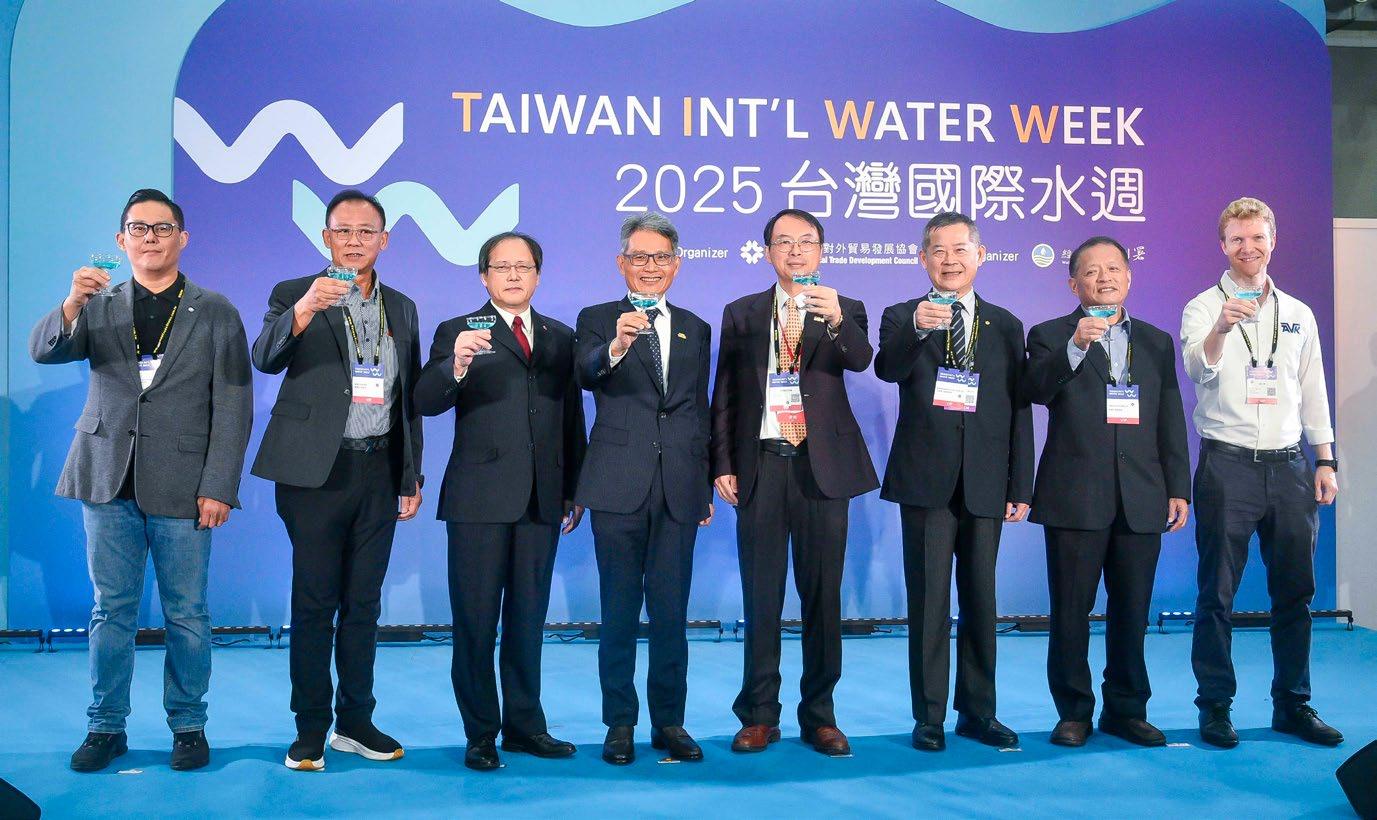
SOMETHING TO READ...
A History of Water and Humankind
In Elixir, Brian Fagan traces humanity’s enduring relationship with water, our most essential and transformative resource. From the irrigation canals of Mesopotamia to the aqueducts of Rome and the river works of ancient China, he reveals how civilisations rose and fell by their mastery of water.
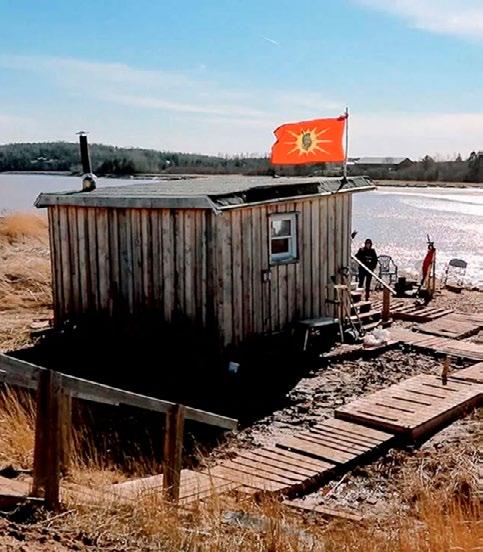

BY: SWM TEAM


SOMETHING TO WATCH...
"THERE’S SOMETHING IN THE WATER": A bold fight for justice and clean water
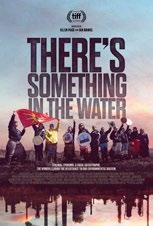
SOMETHING TO ENJOY...
A quiet hymn of memory and release
“Only the Ocean” serves as the emotional closing track of Jack Johnson’s 2010 album To The Sea. Inspired by memories of his late father, the song reflects on the symbolic connection between the sea and the subconscious. For Johnson, the ocean represents both a place of reflection and a link between generations.
There’s Something in the Water exposes the harsh reality of environmental racism in Nova Scotia, where Black and Indigenous communities face toxic water and neglect. Directed by Elliot Page and Ian Daniel, the documentary gives voice to those fighting for justice and clean water.


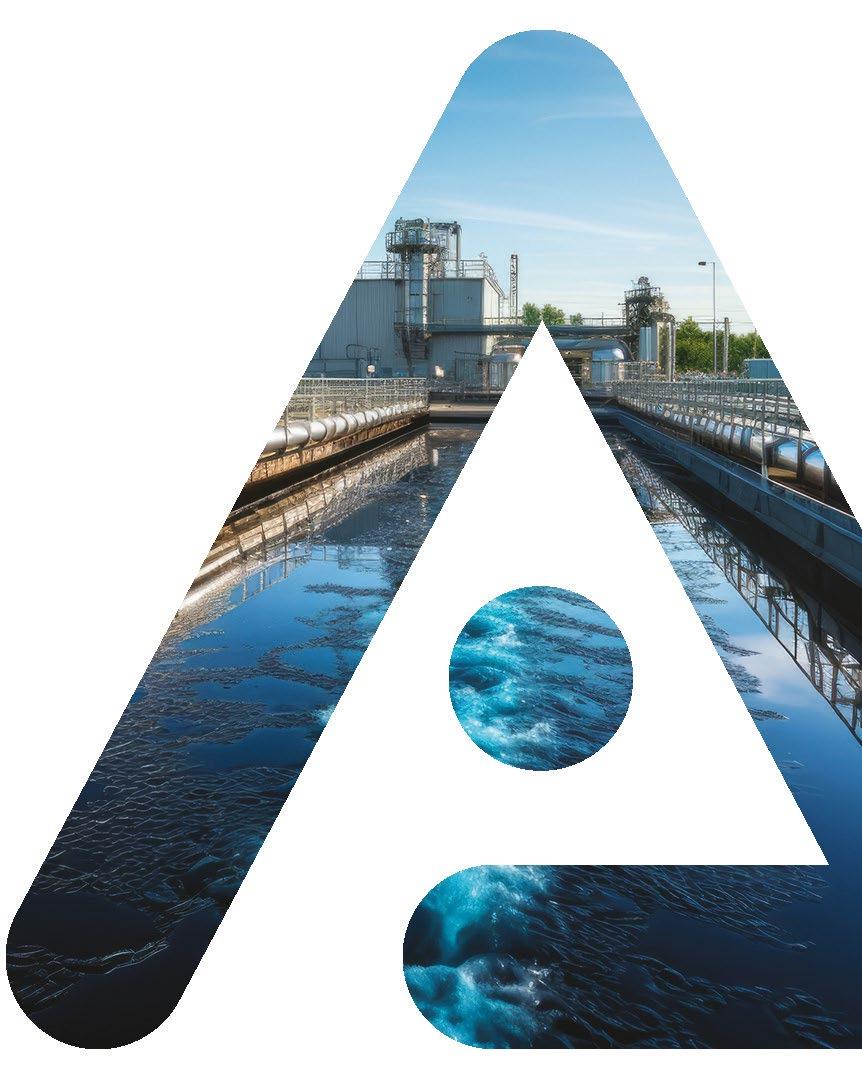
Confidently deliver safe drinking water to your customers
Use advanced event detection to mitigate unplanned contamination events Optimise the efficiency of your filtration process at your drinking water treatment facility to minimise water waste
Control your disinfection process to meet water quality regulations
